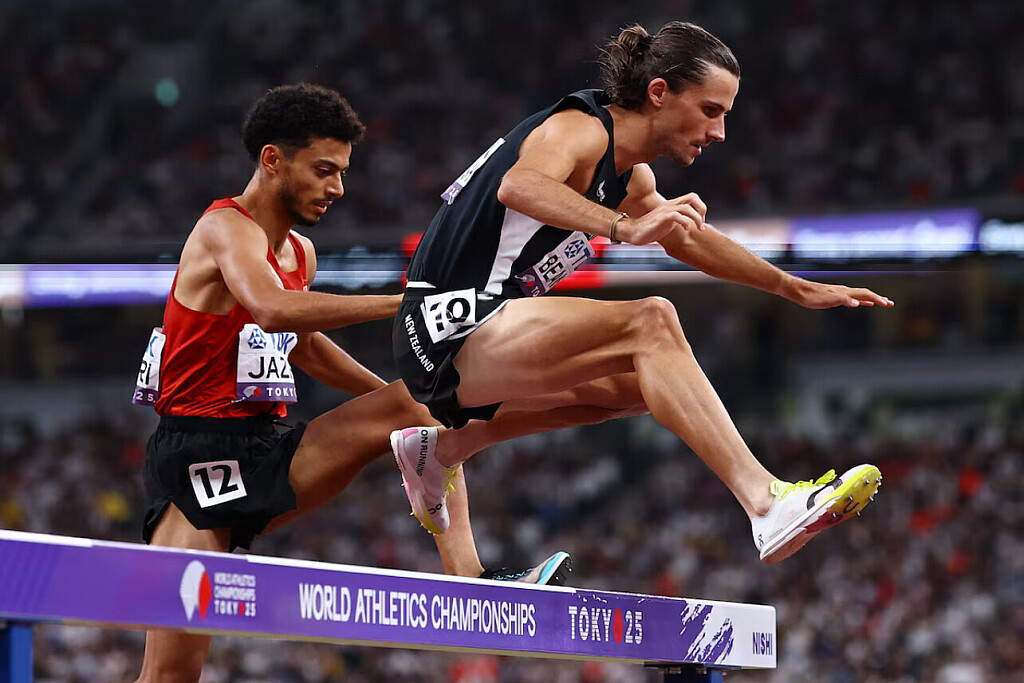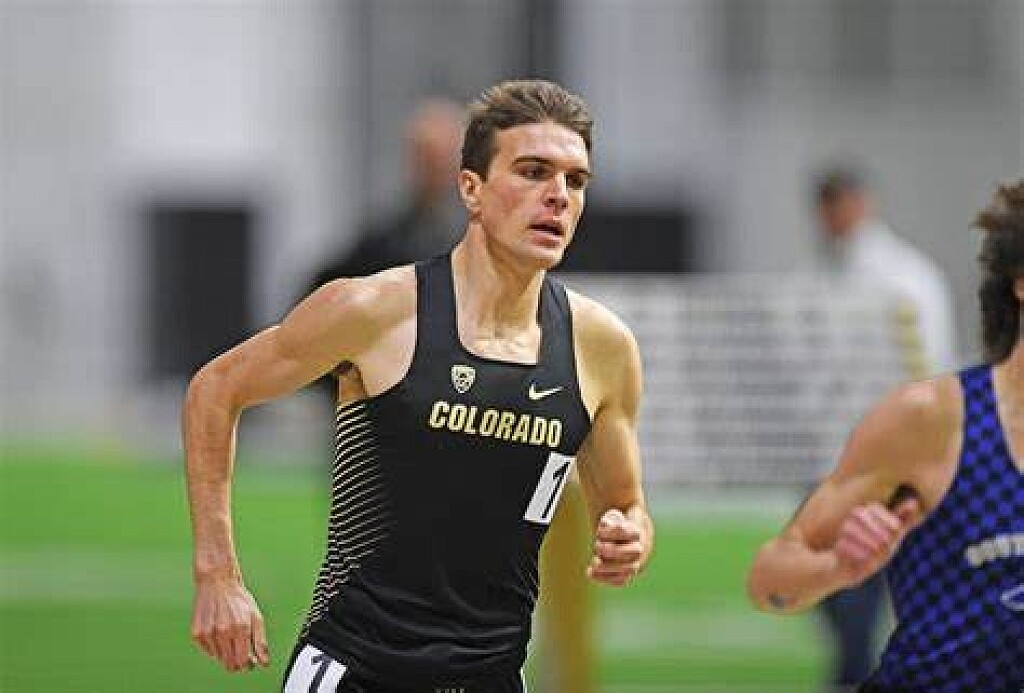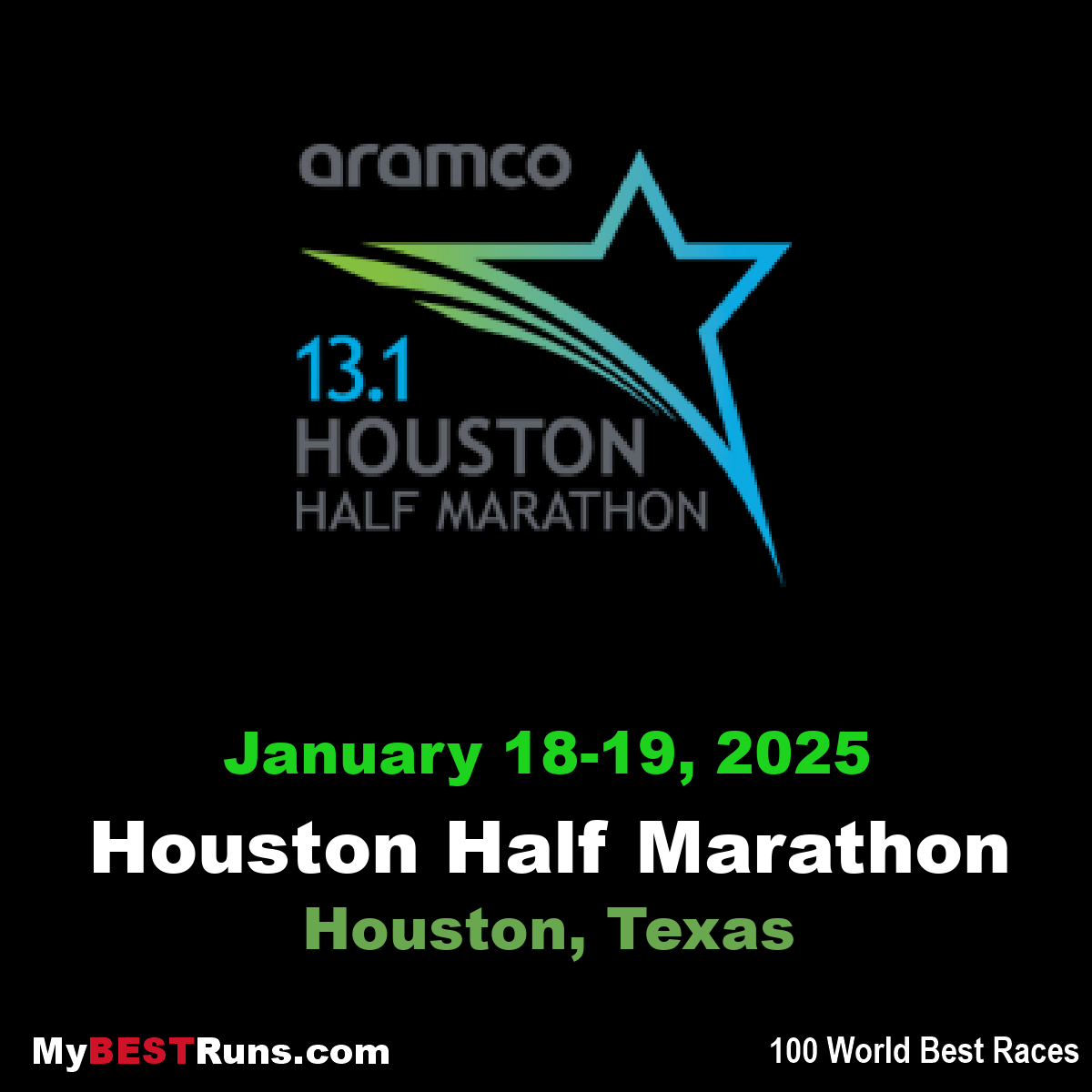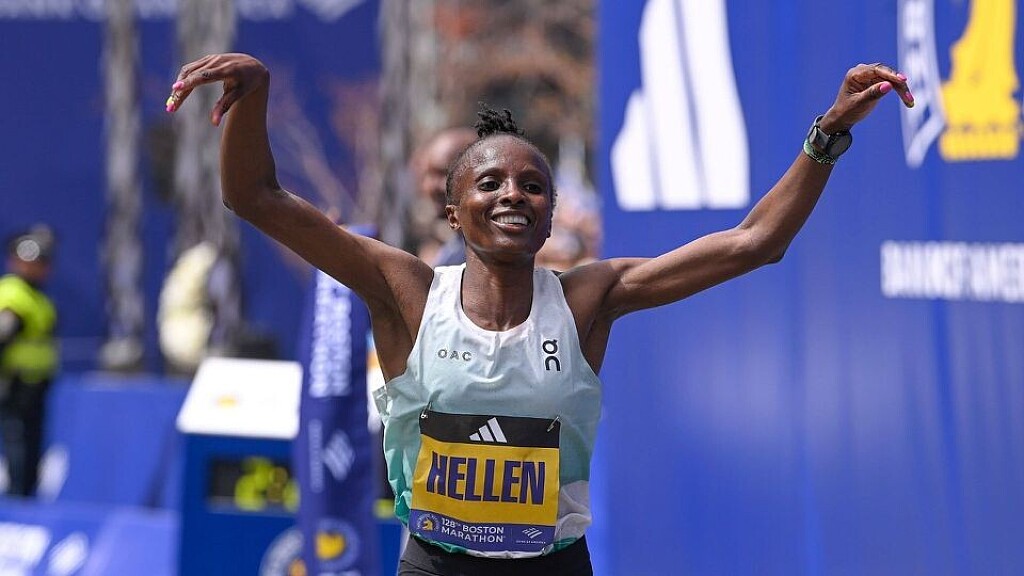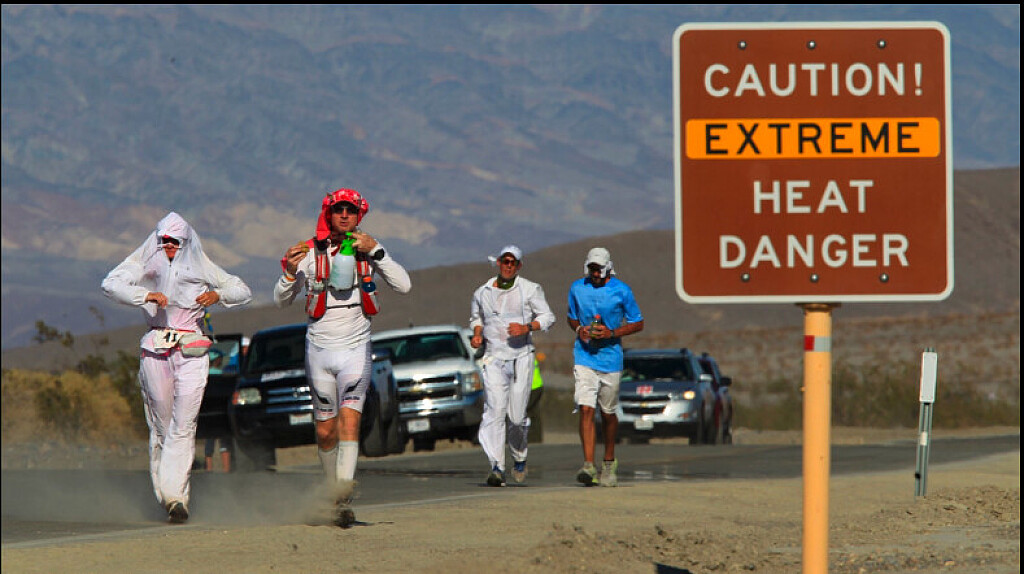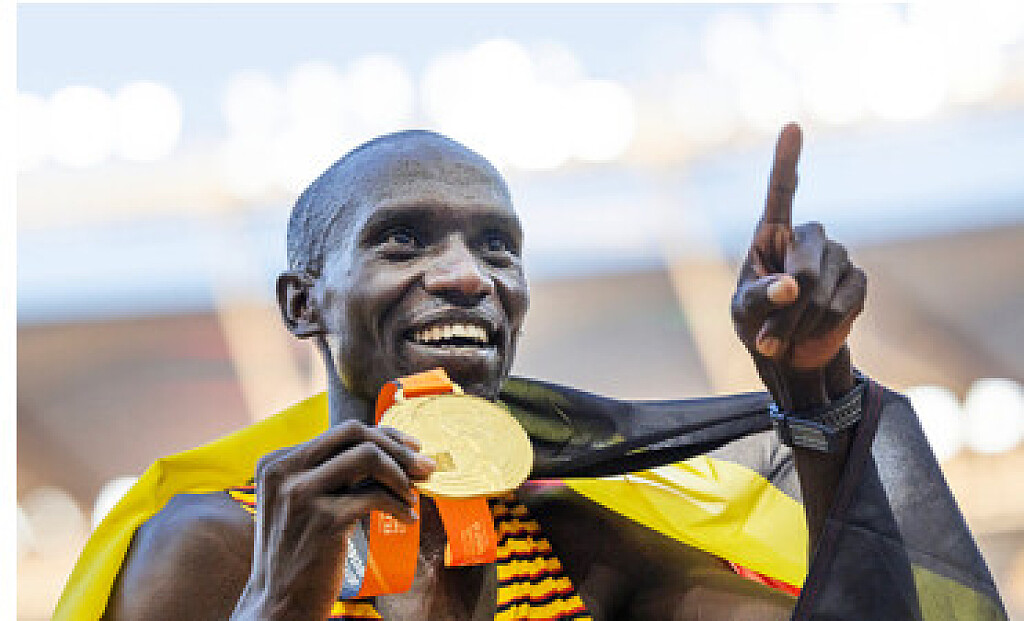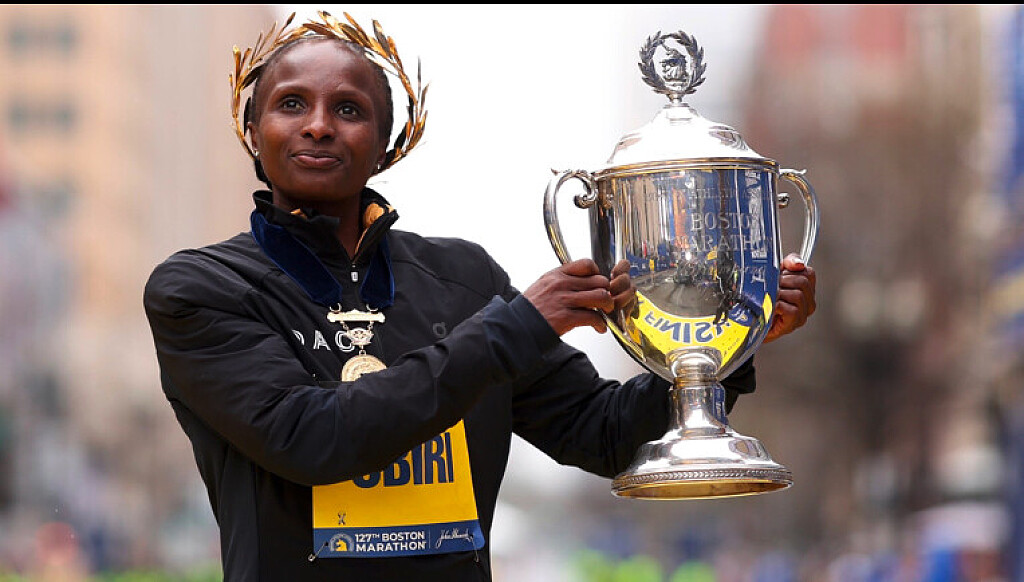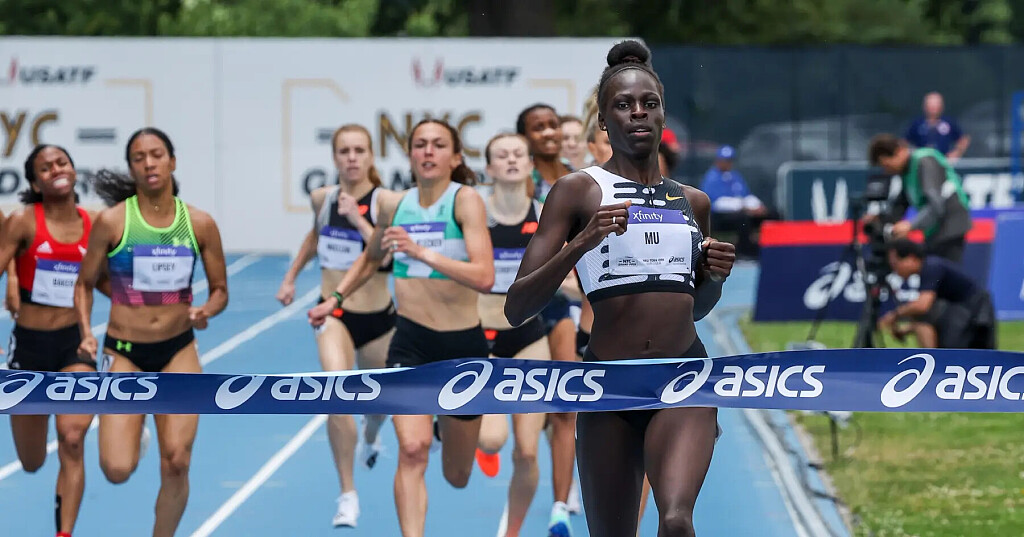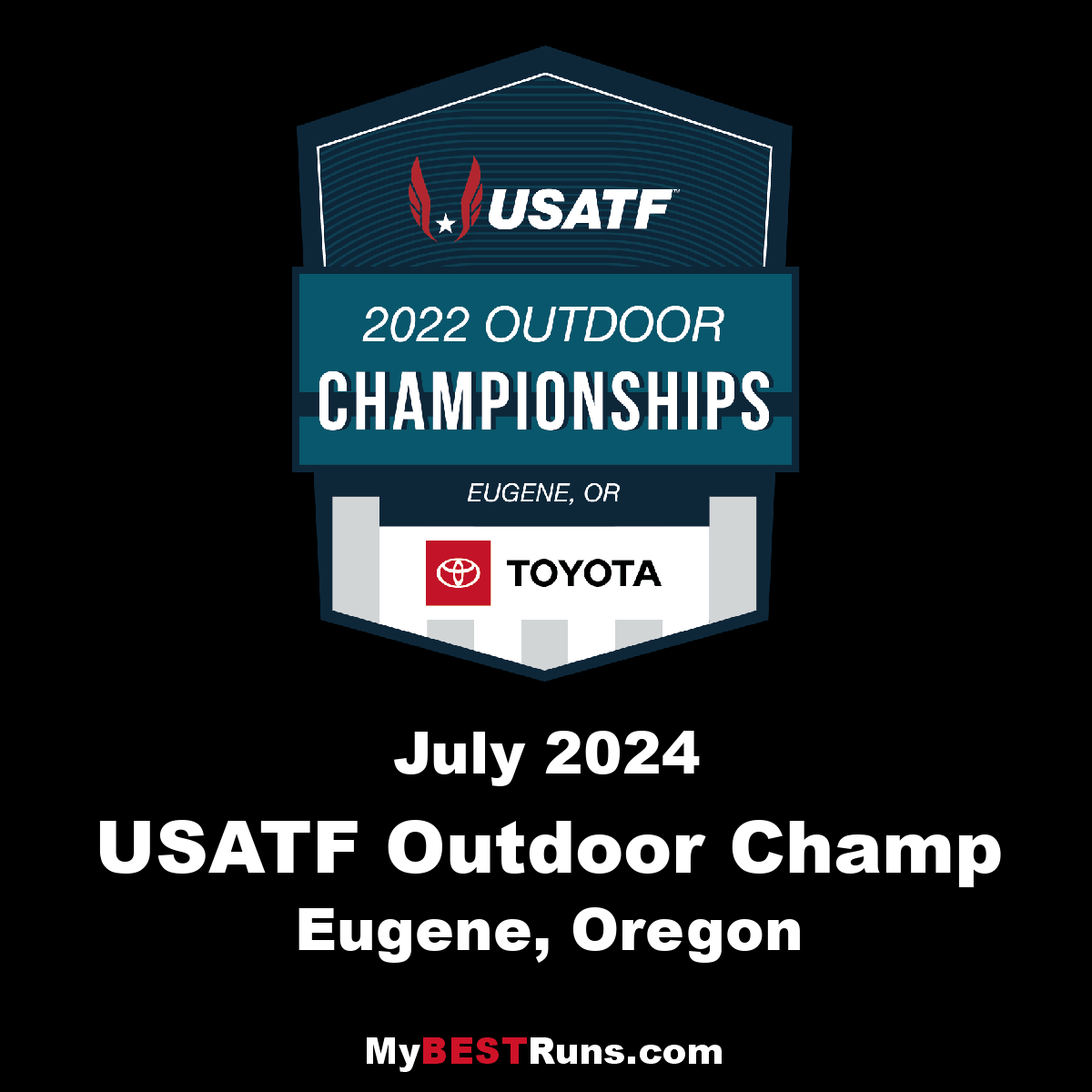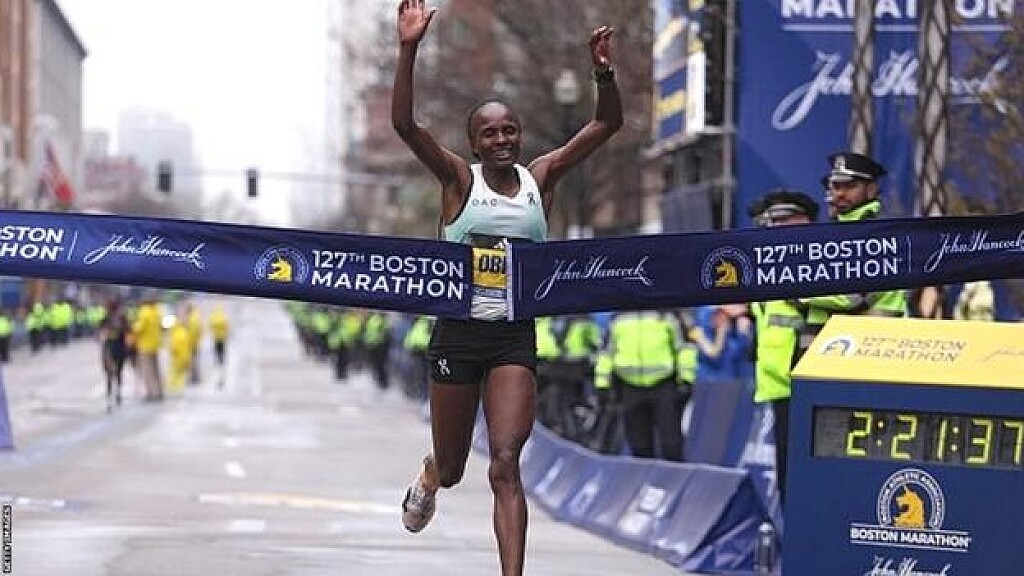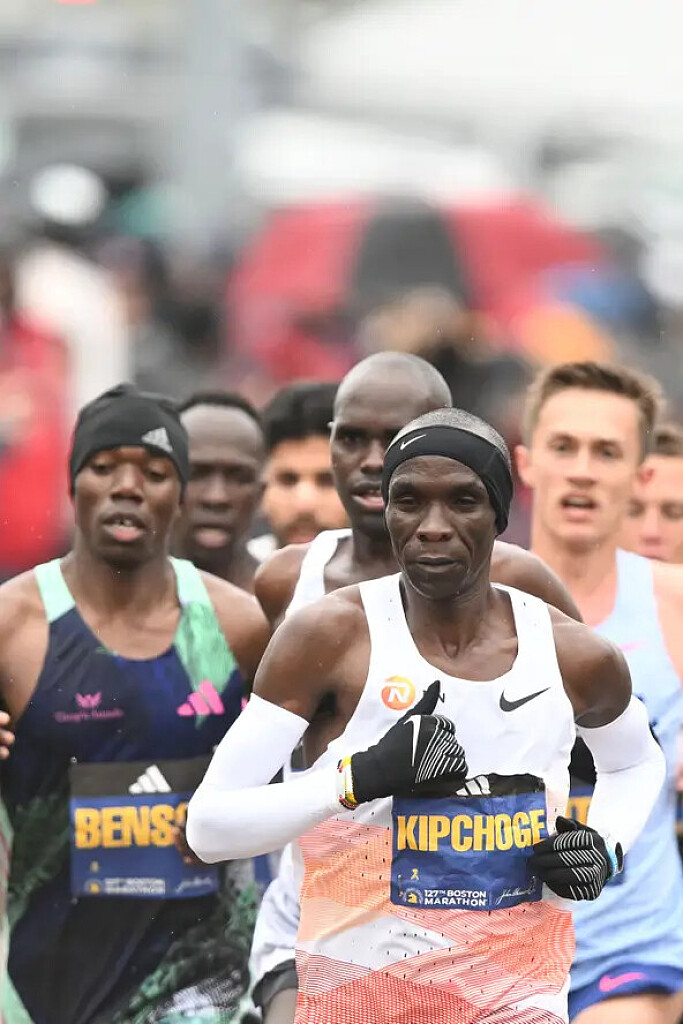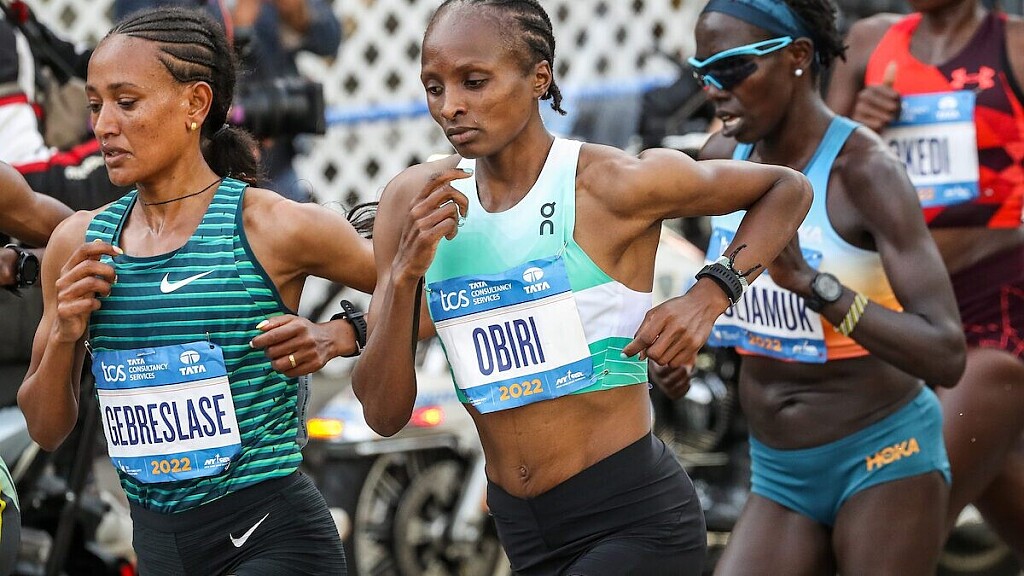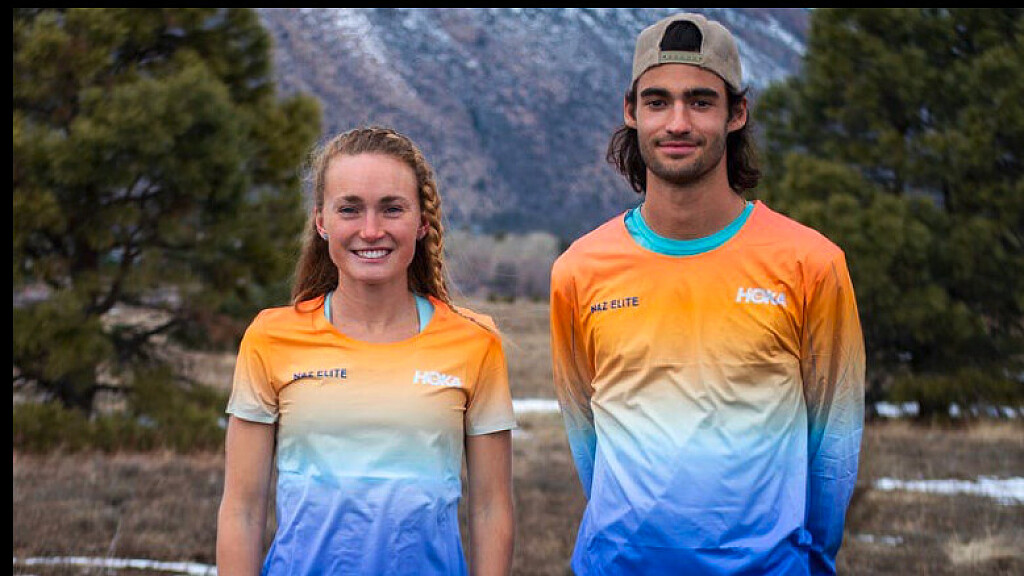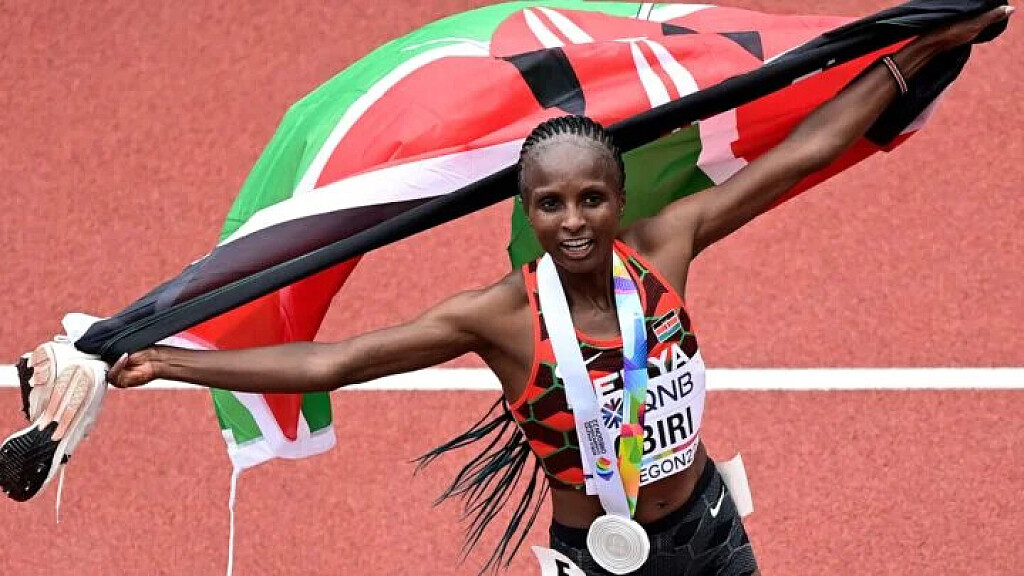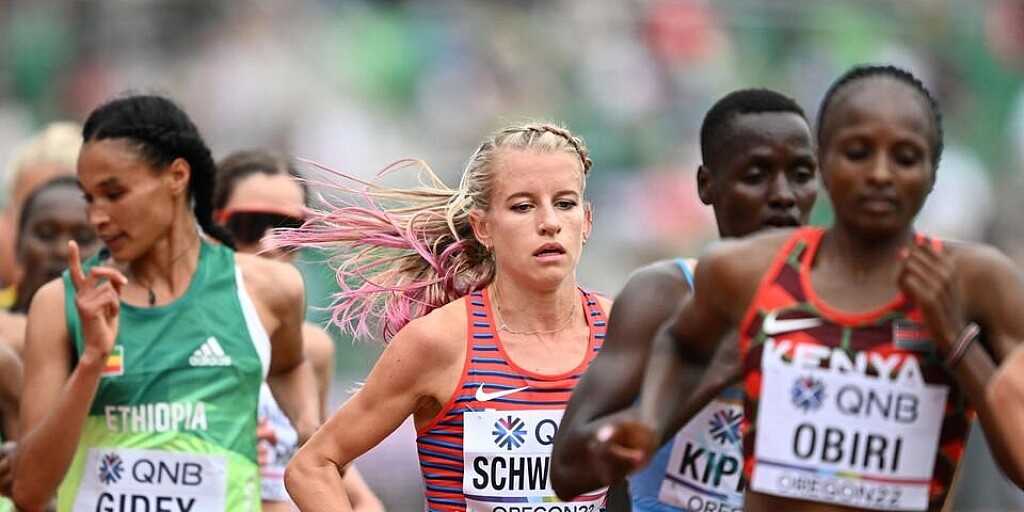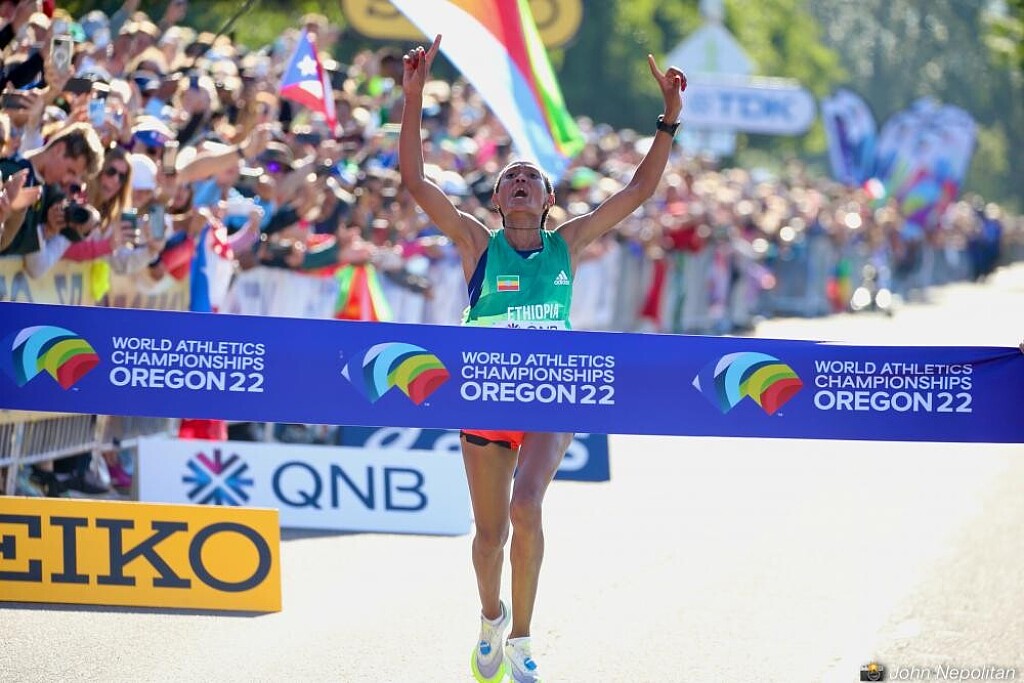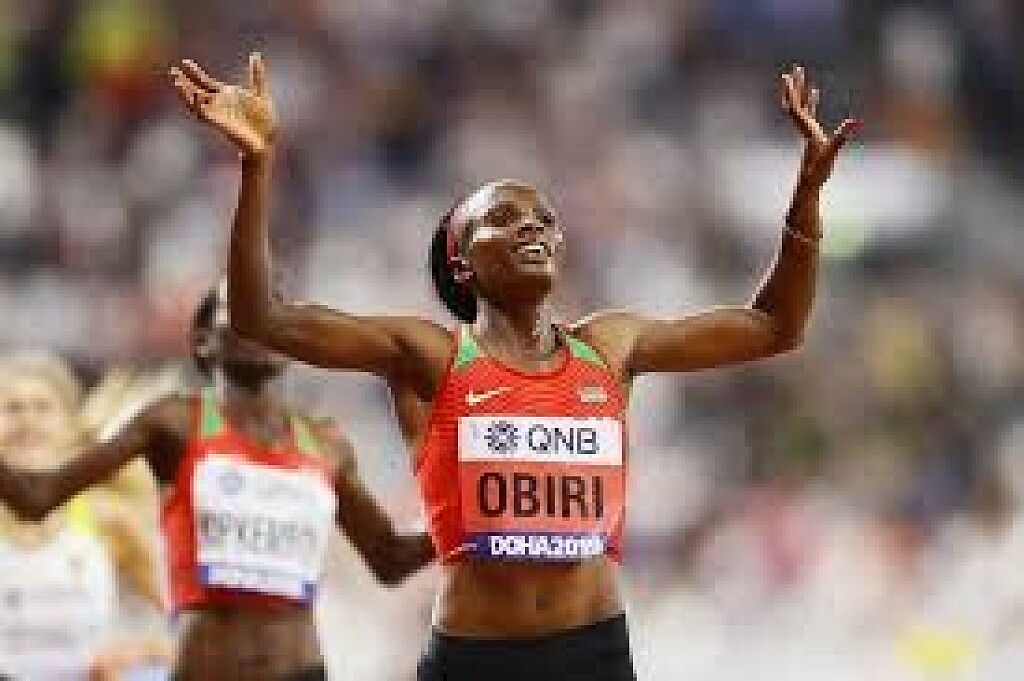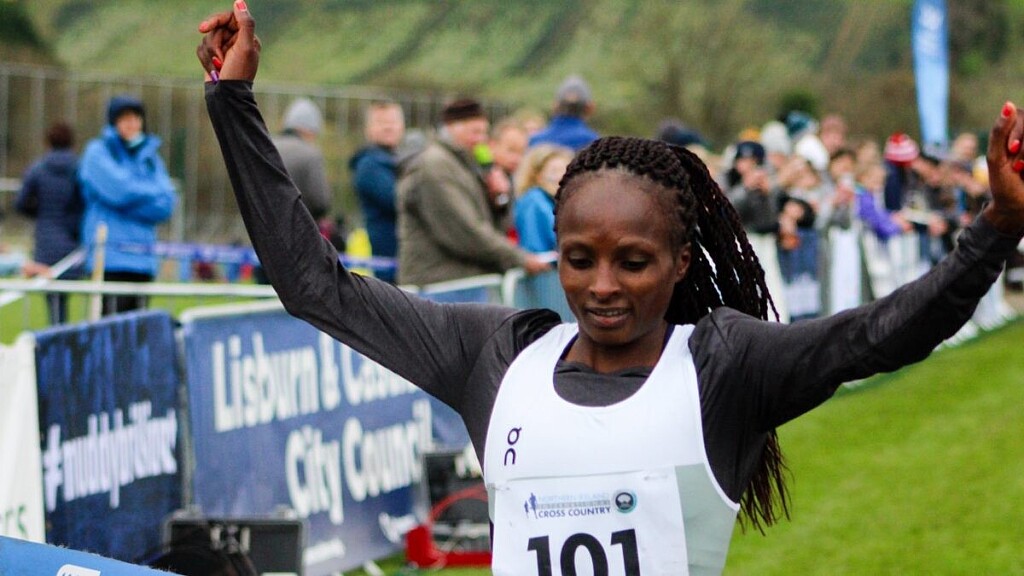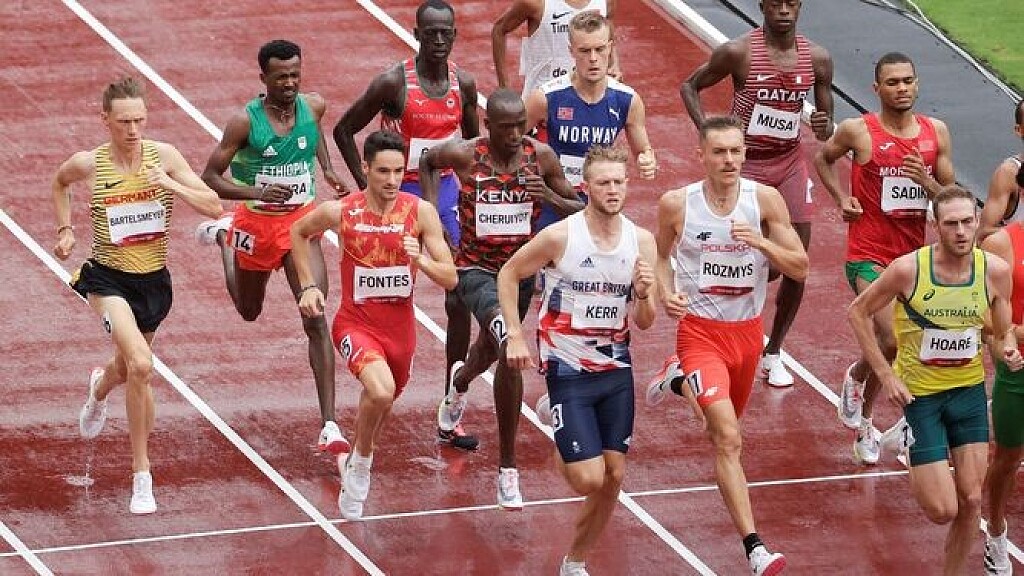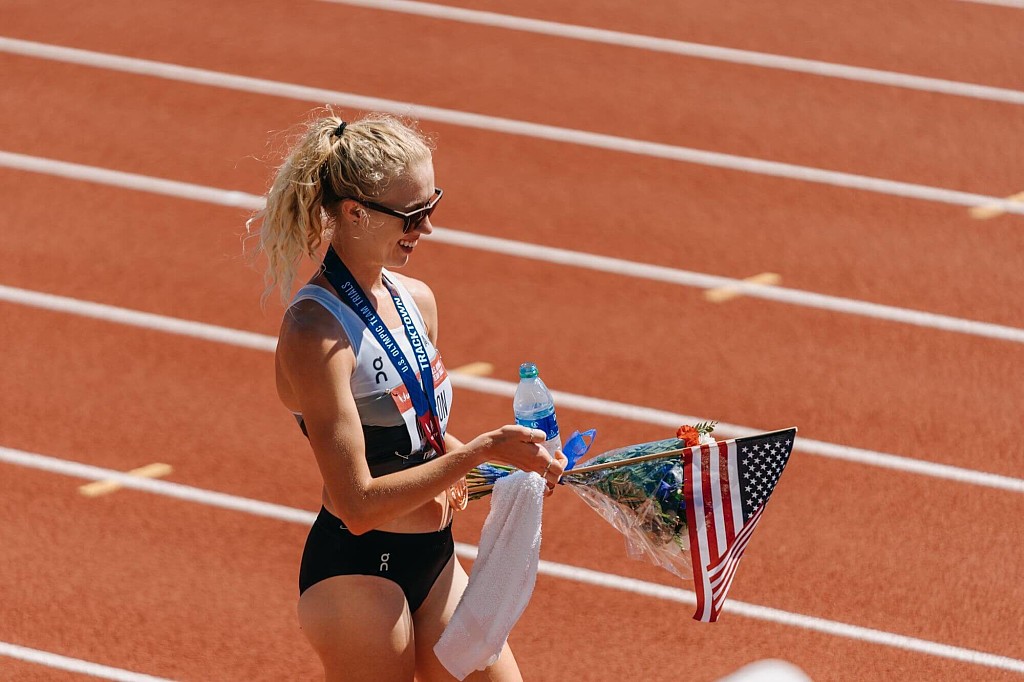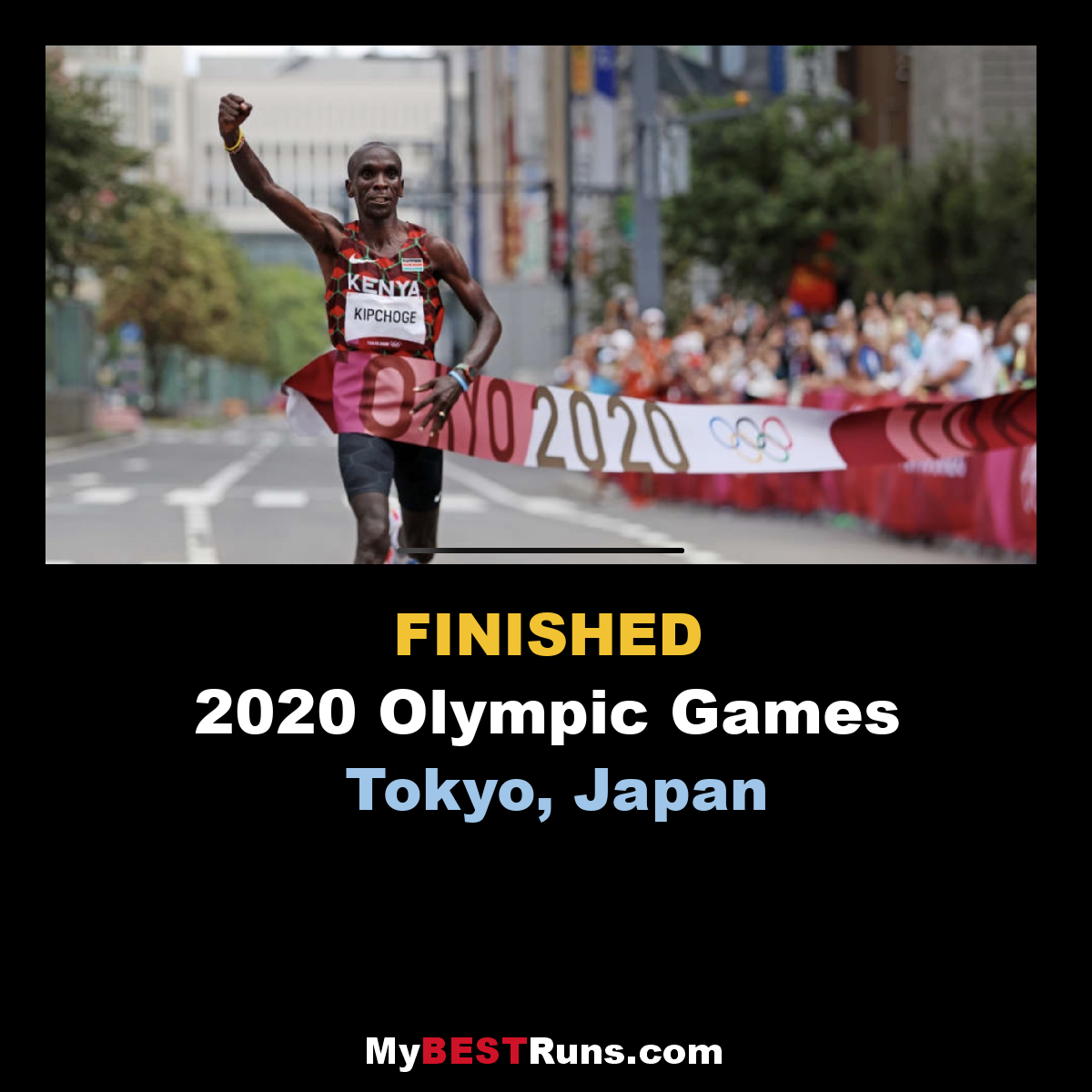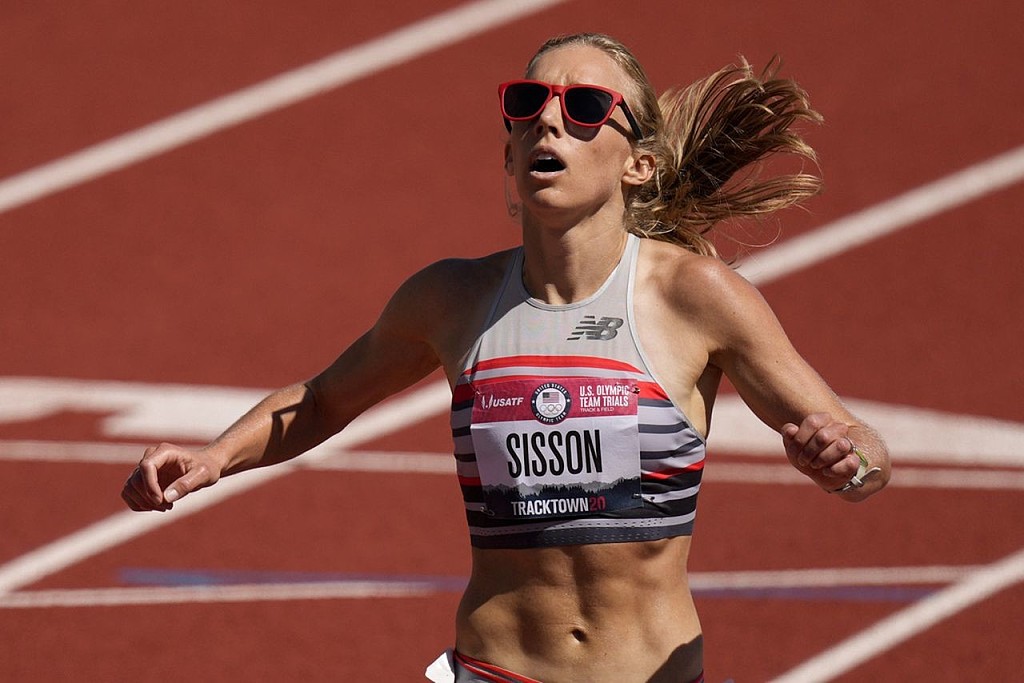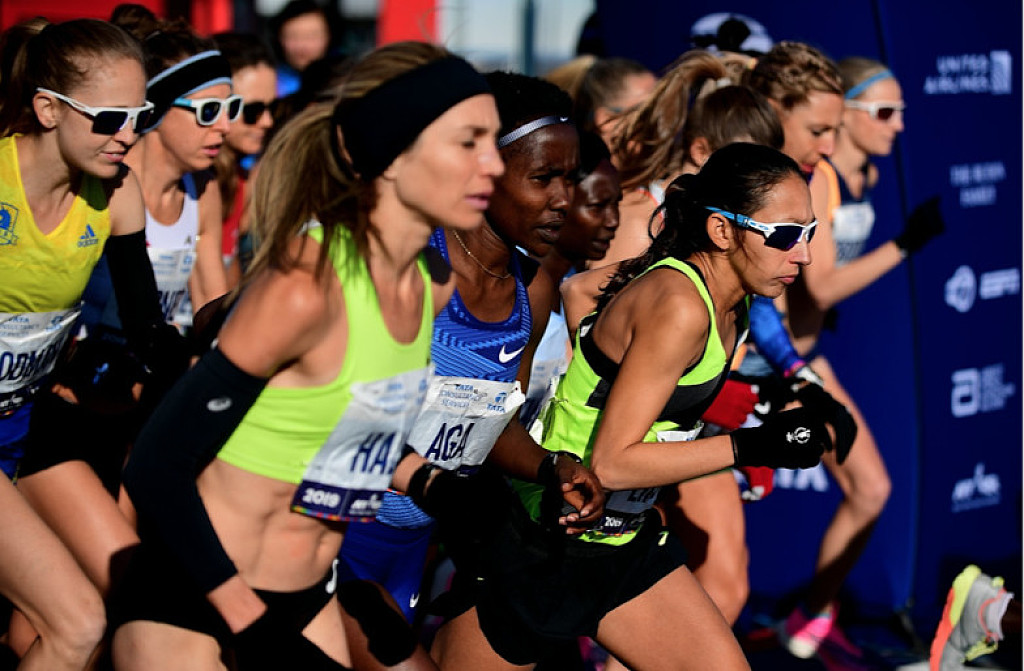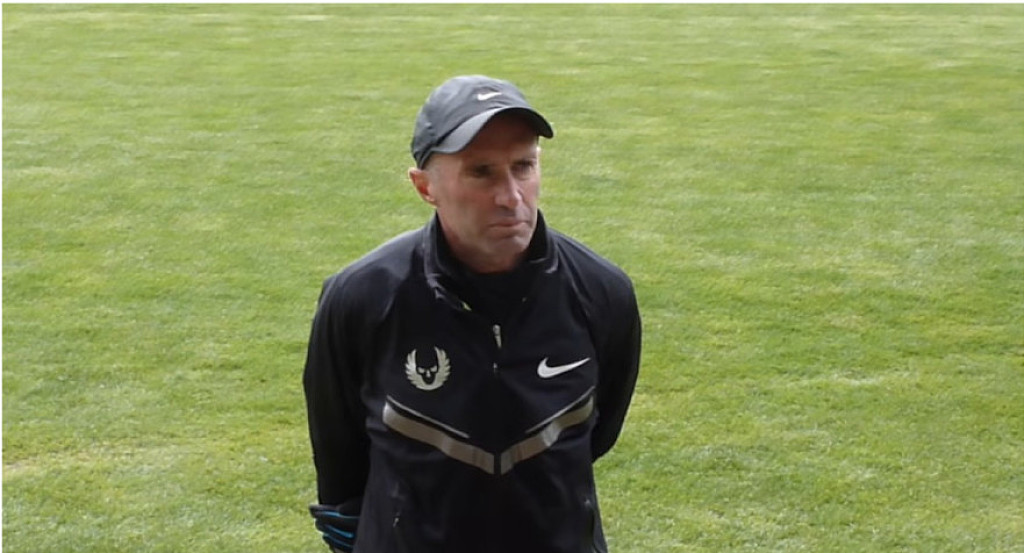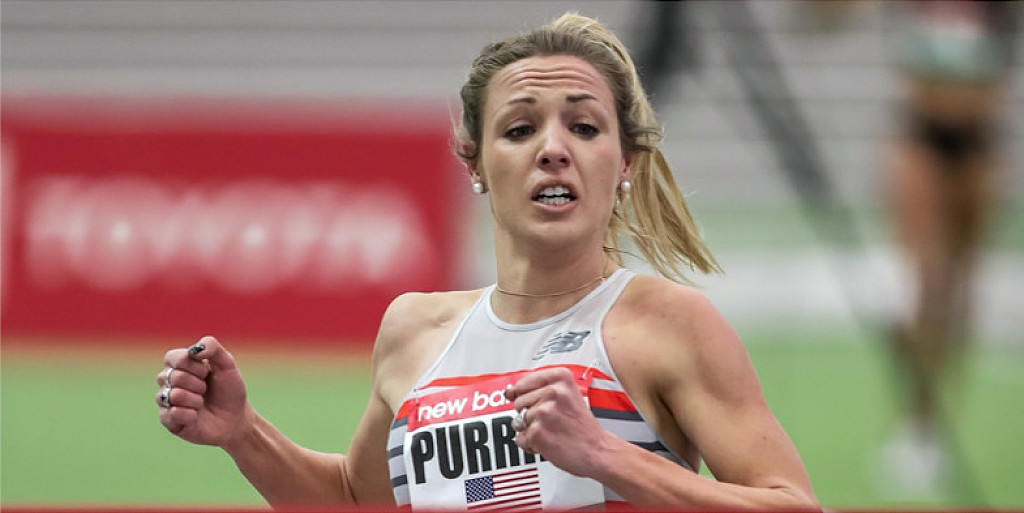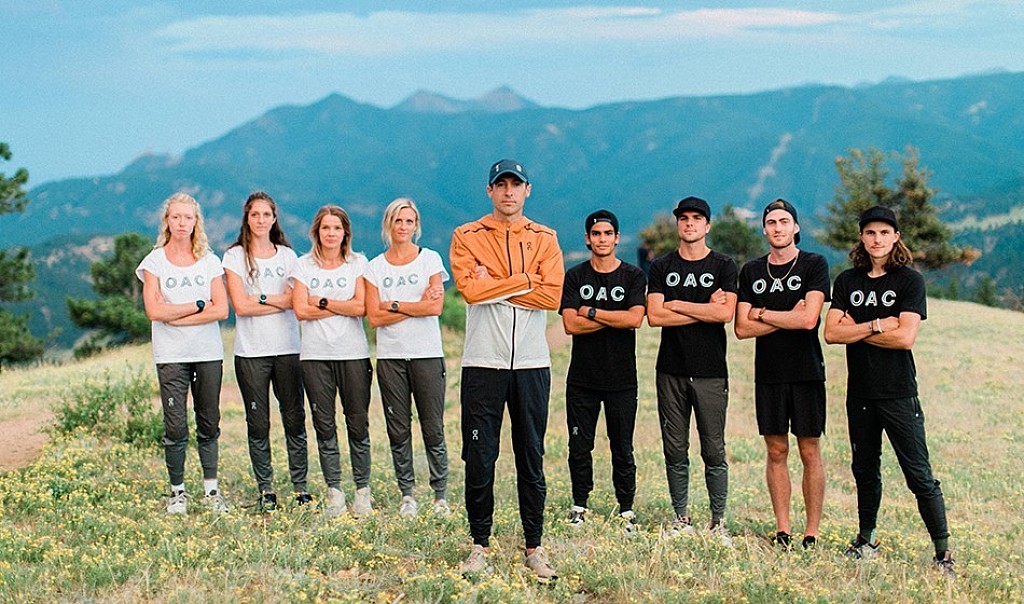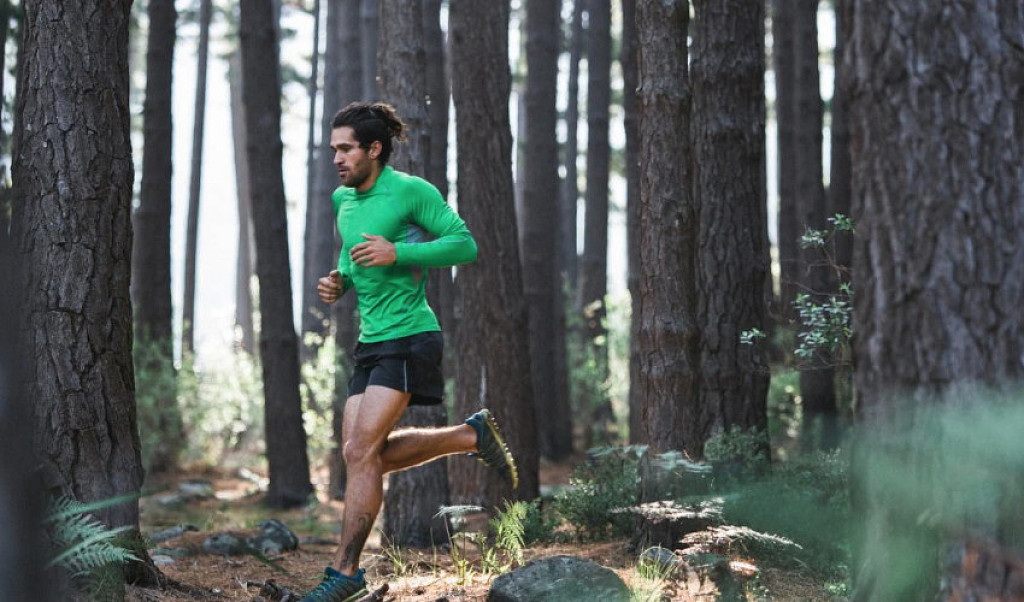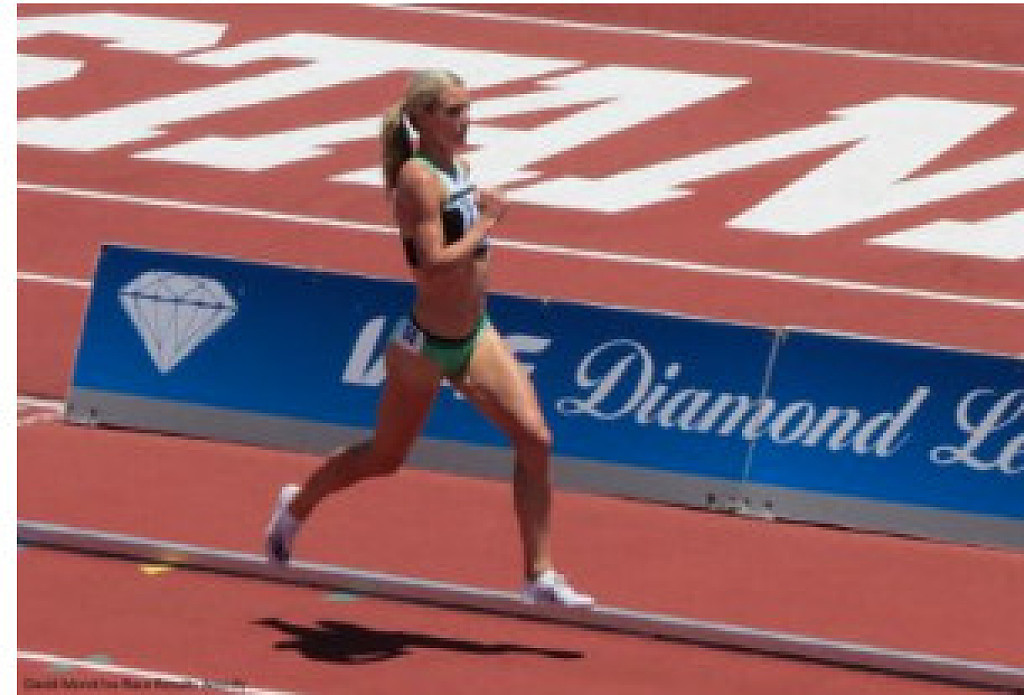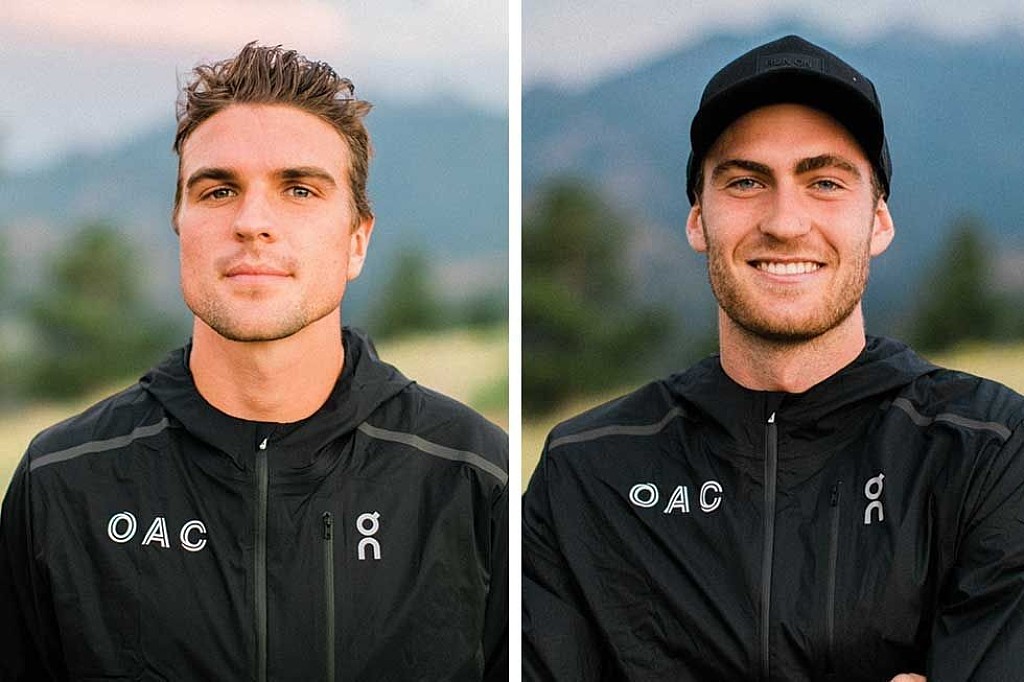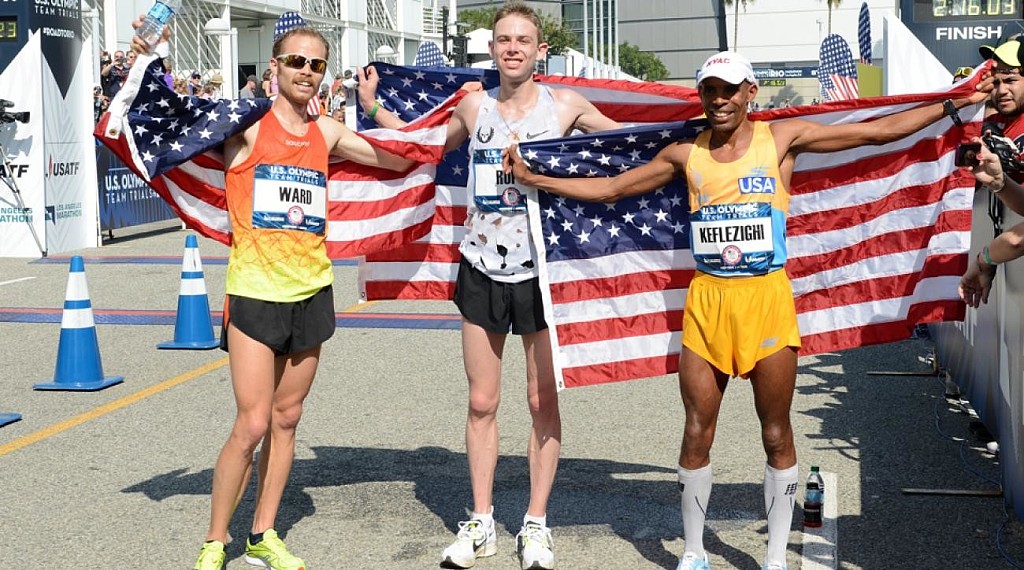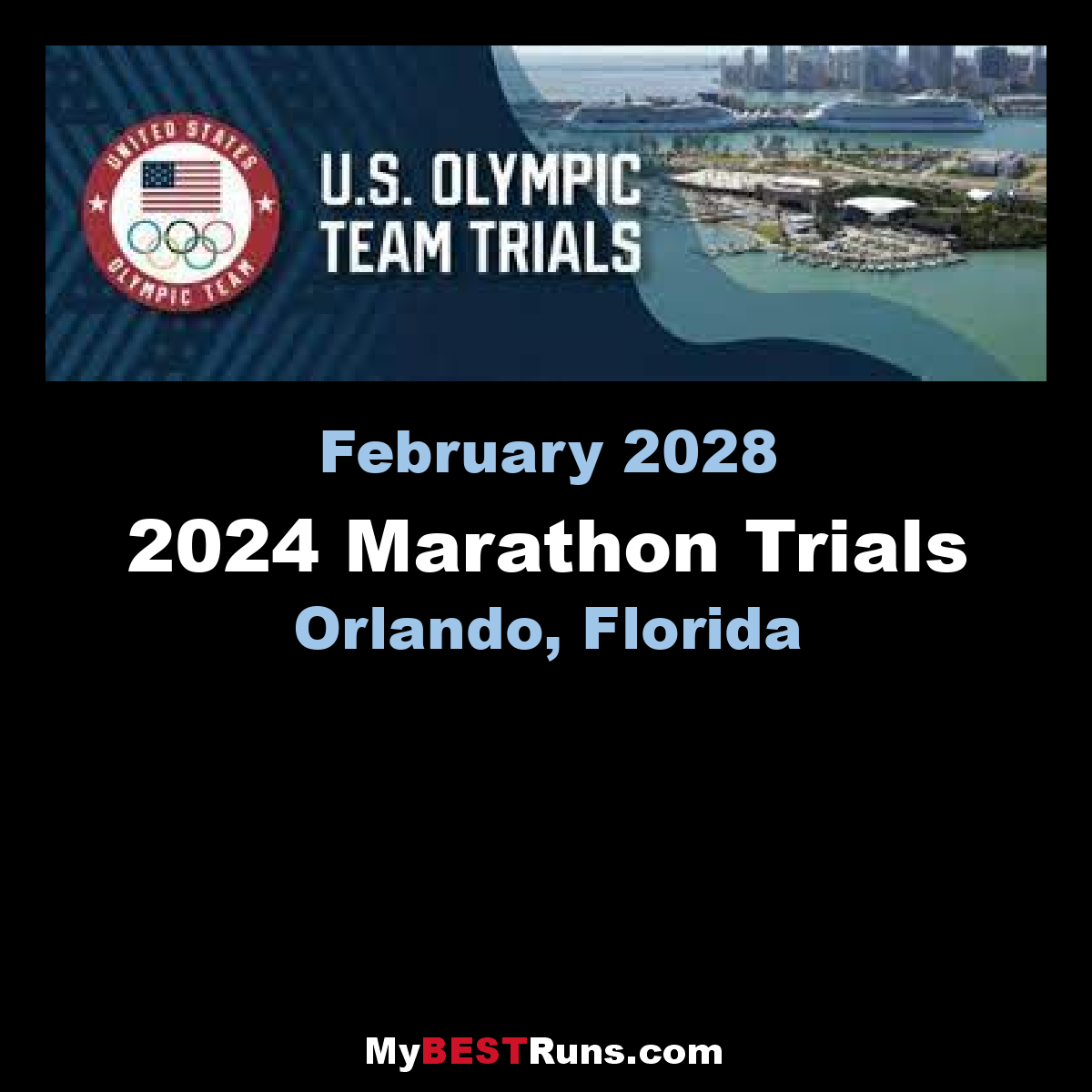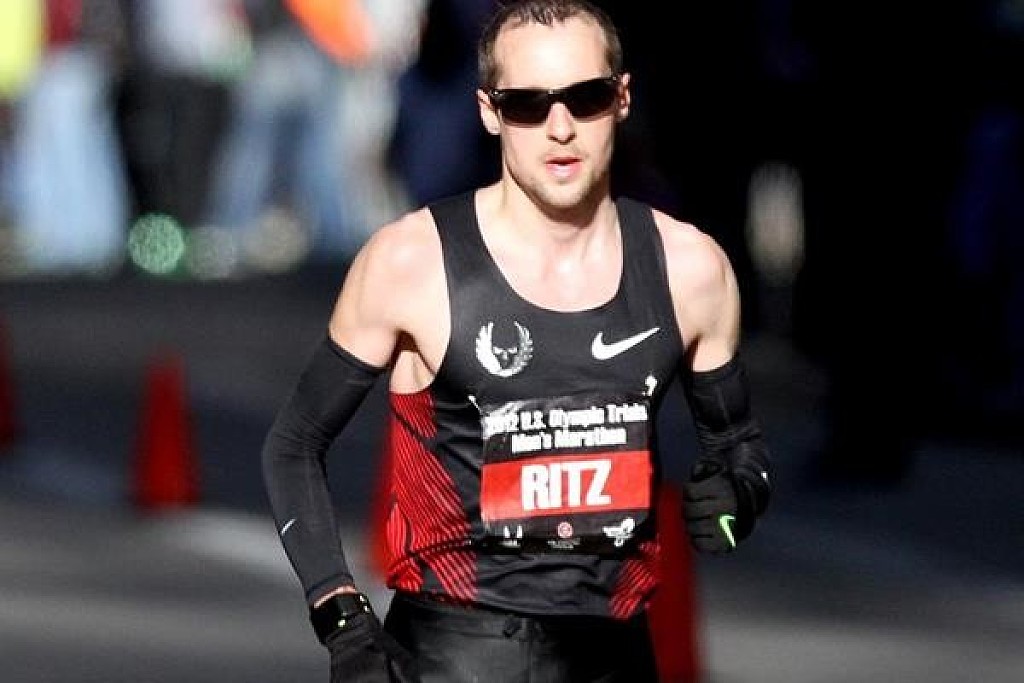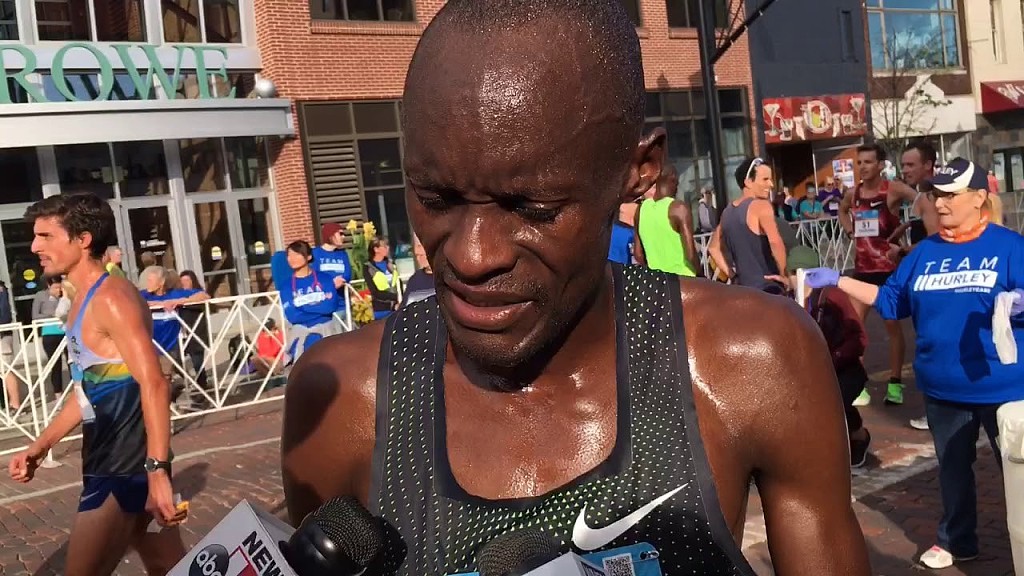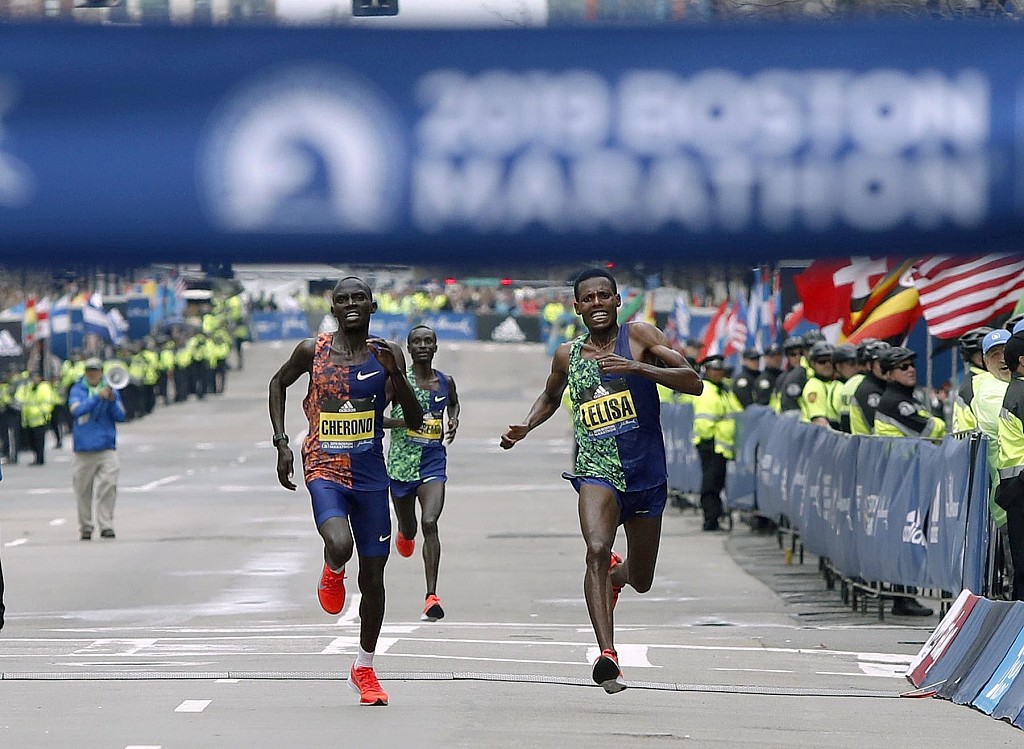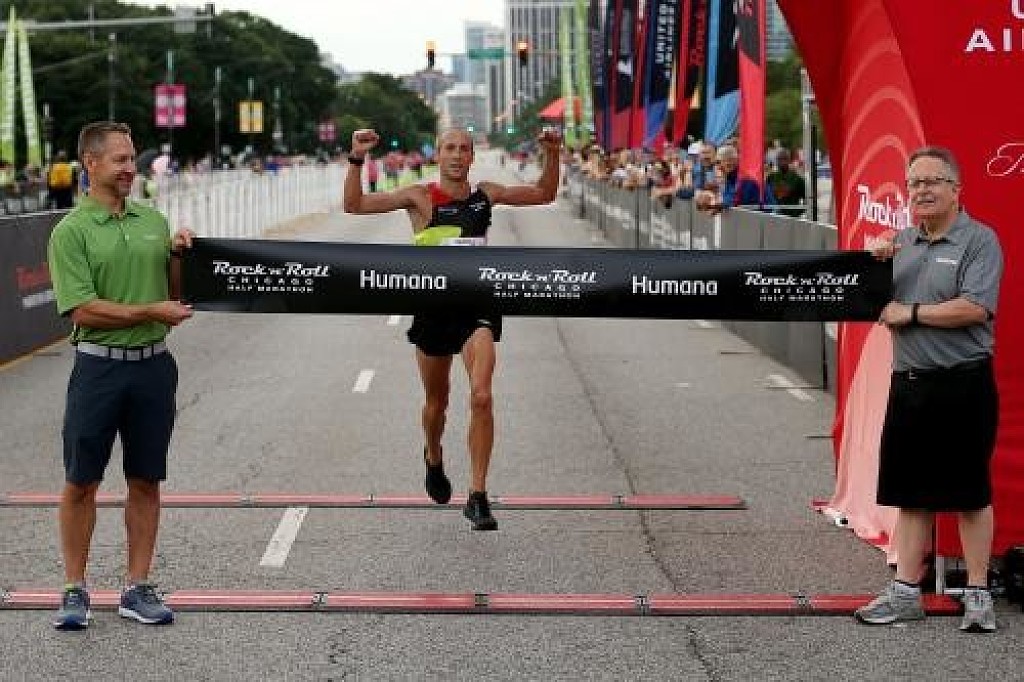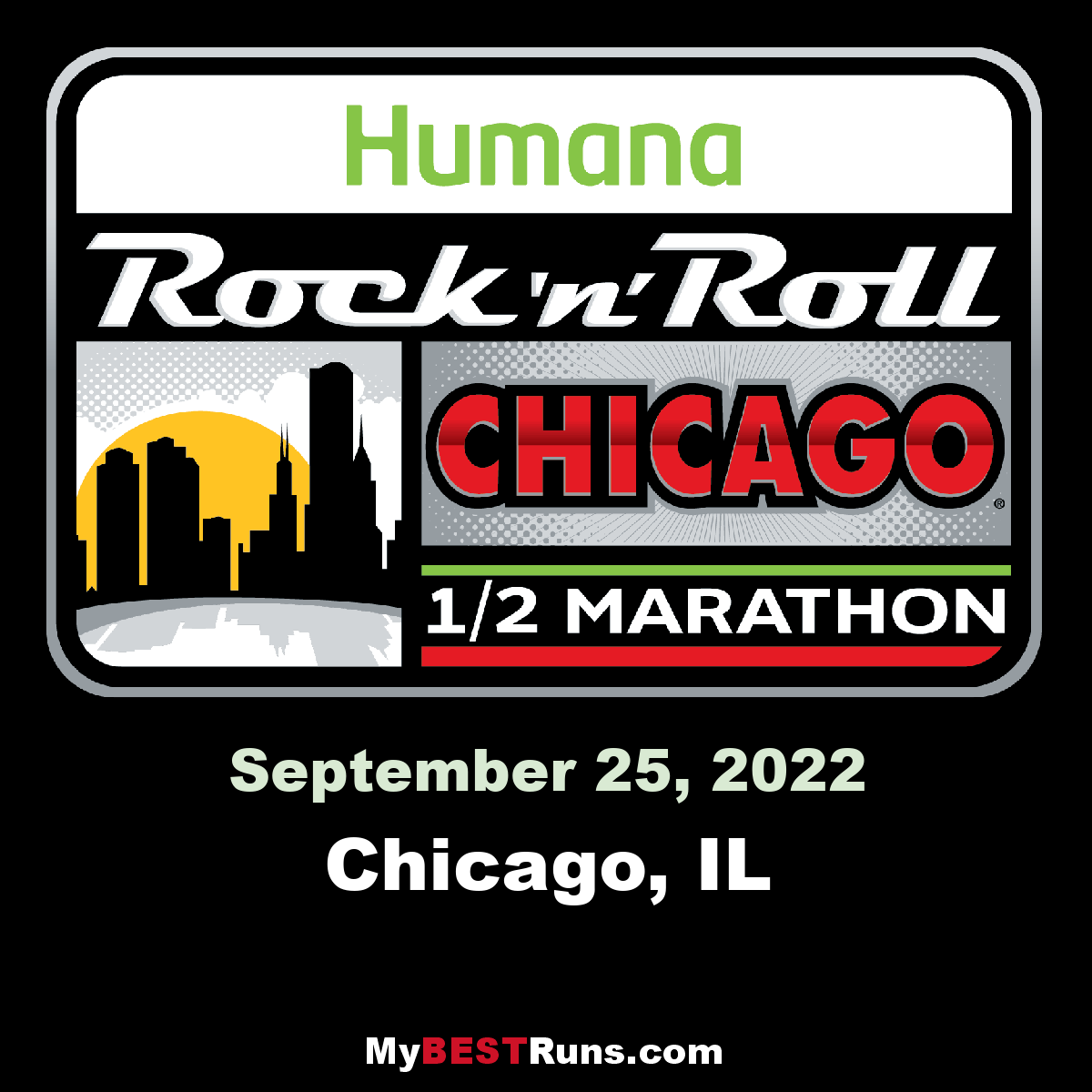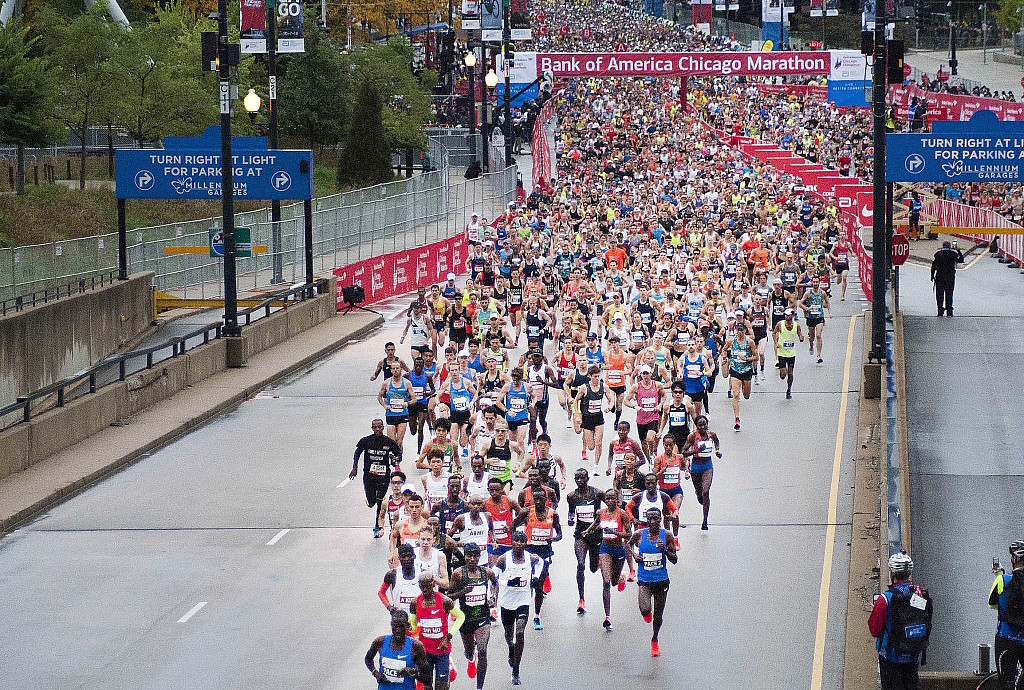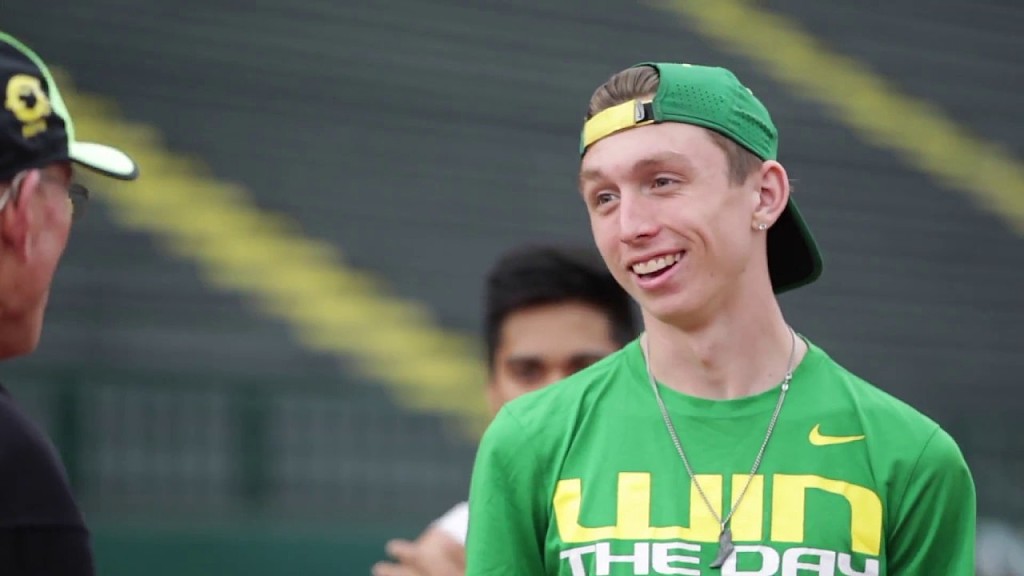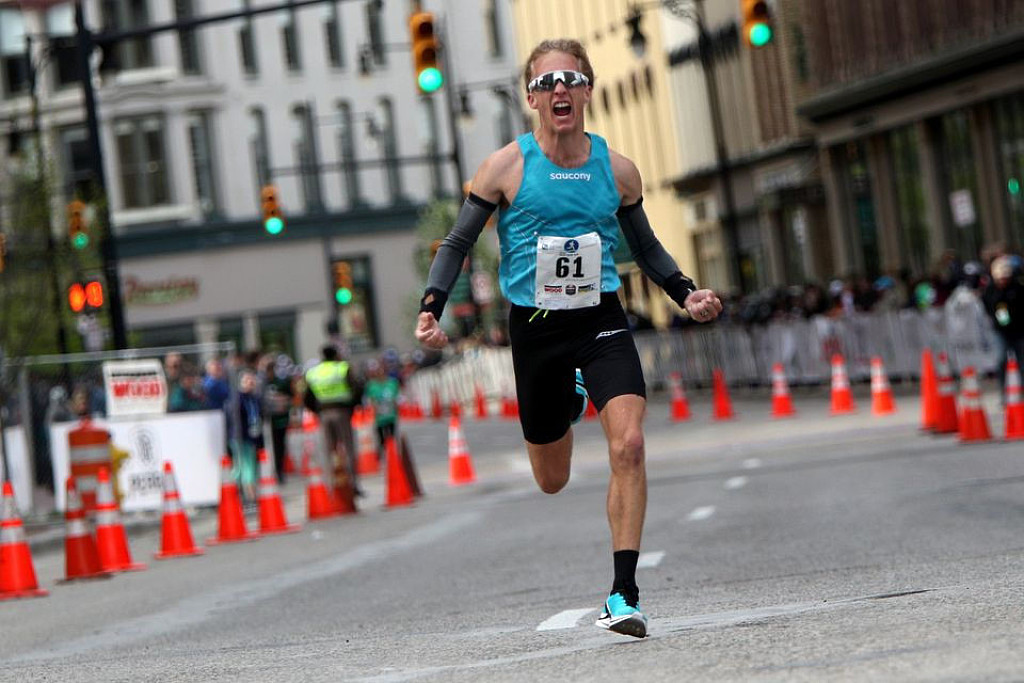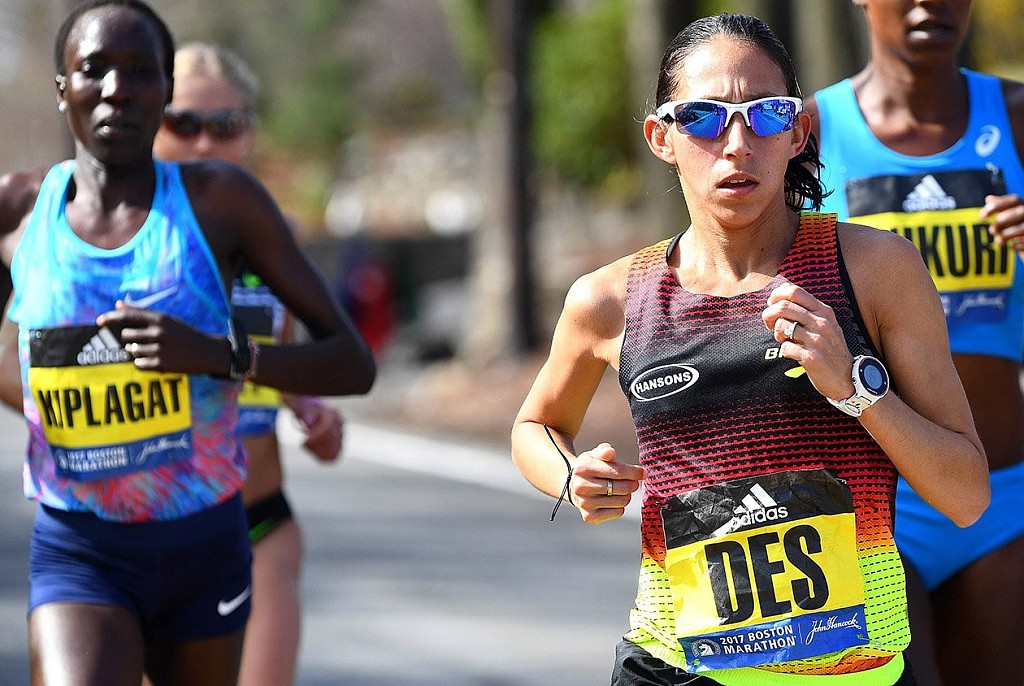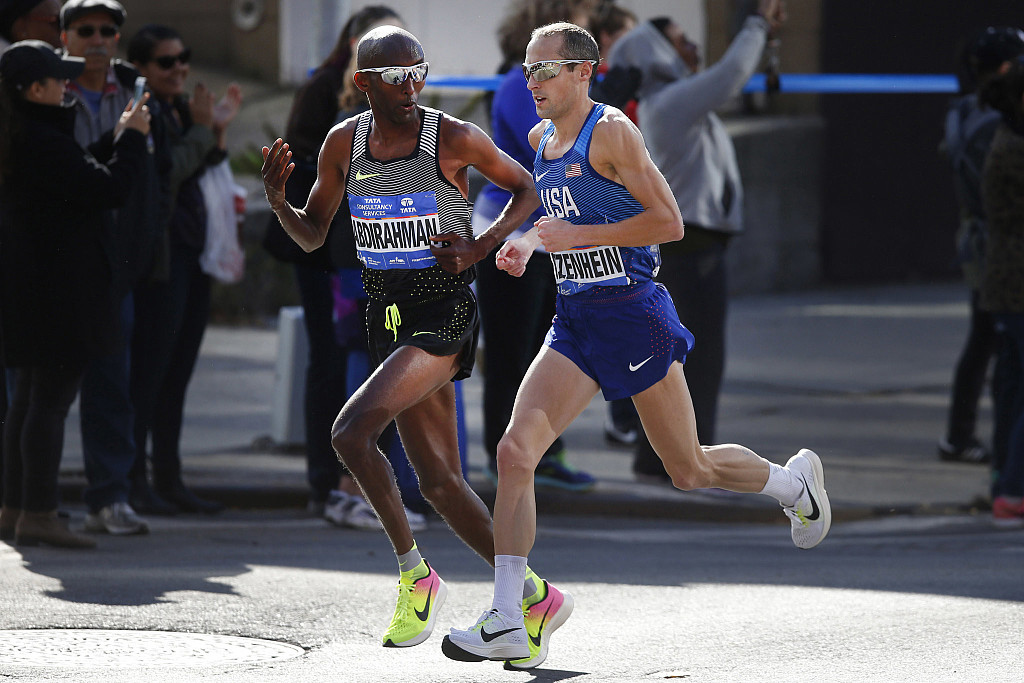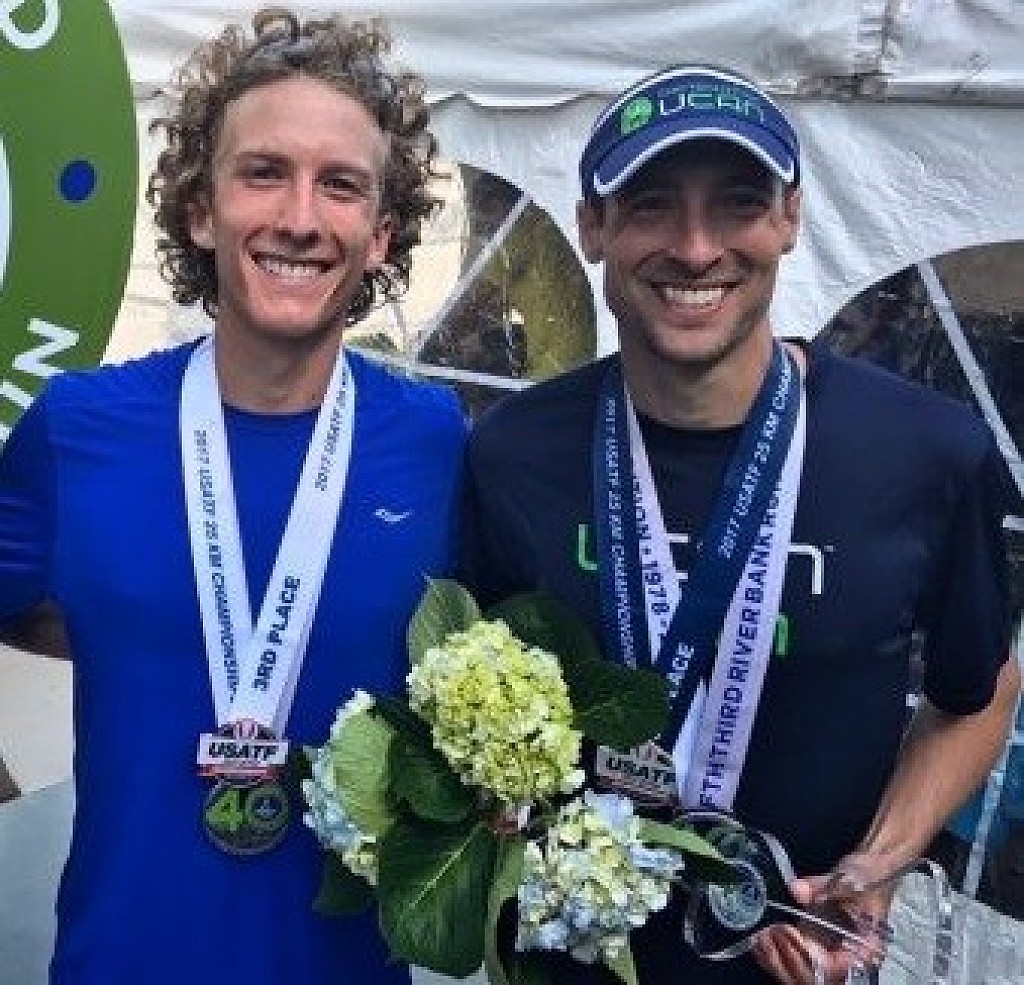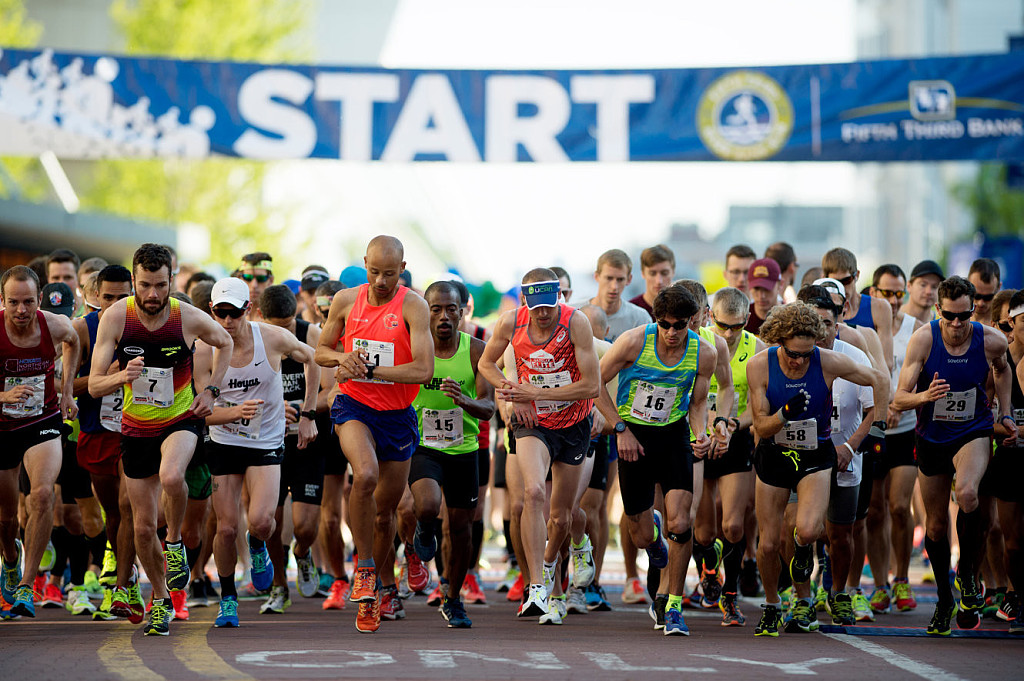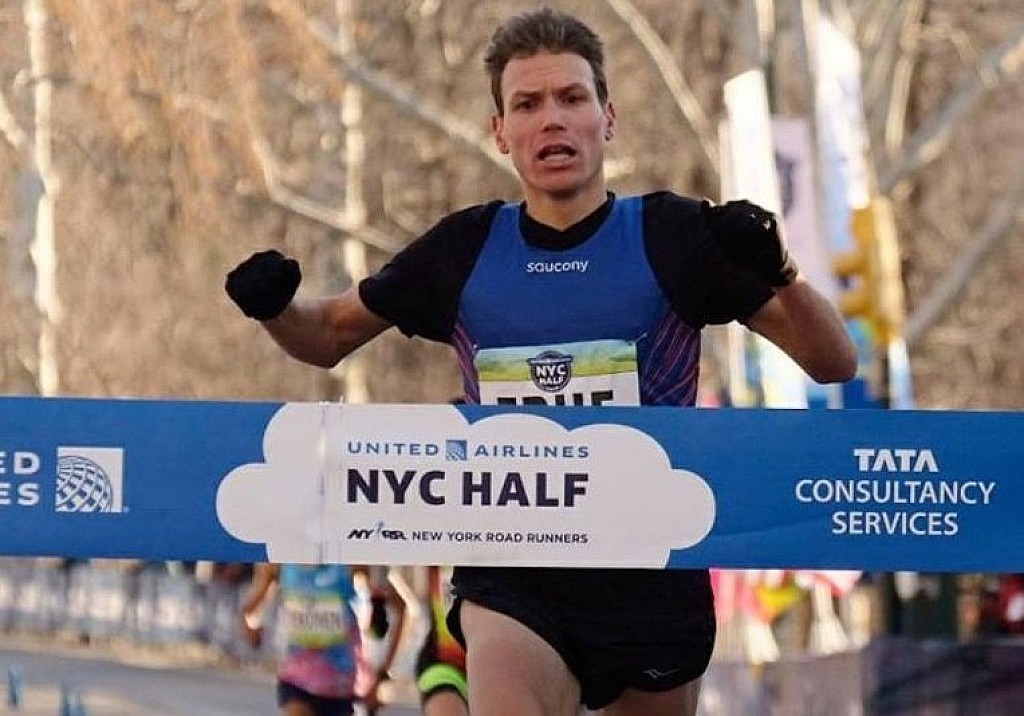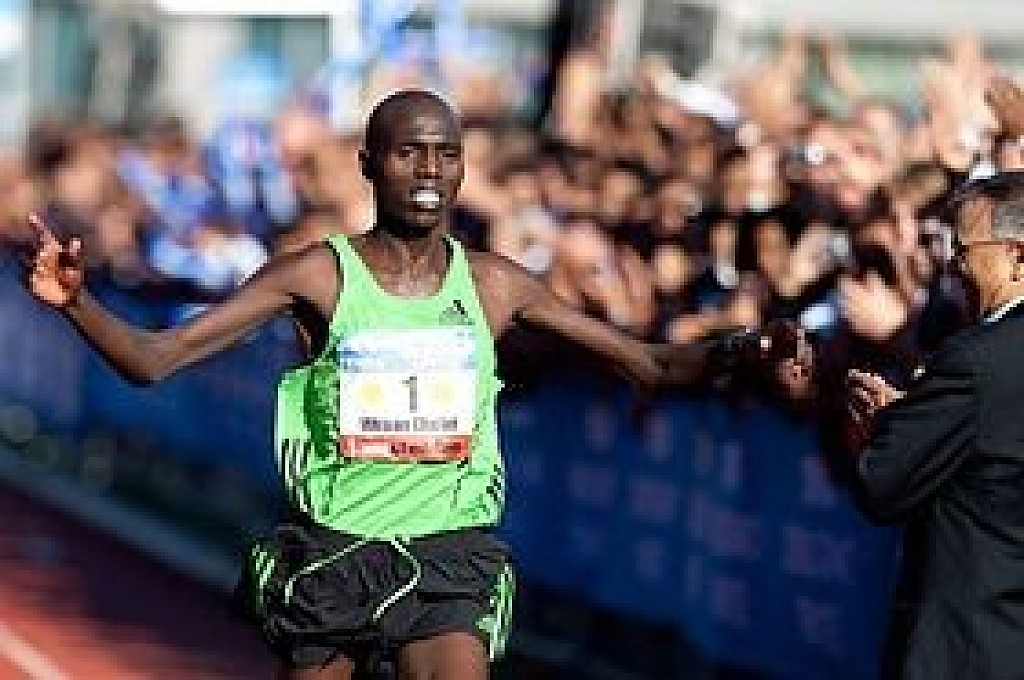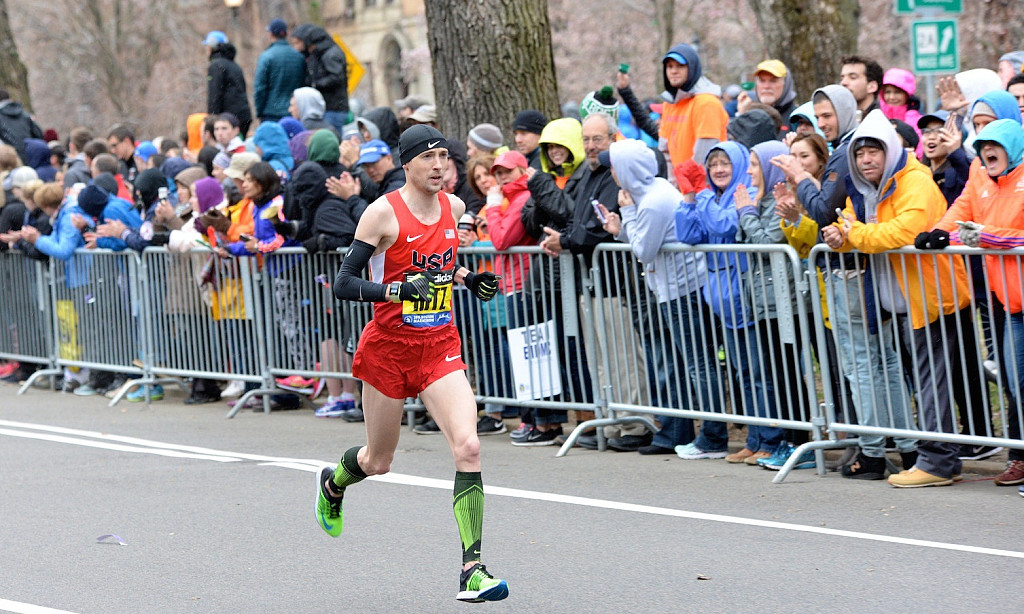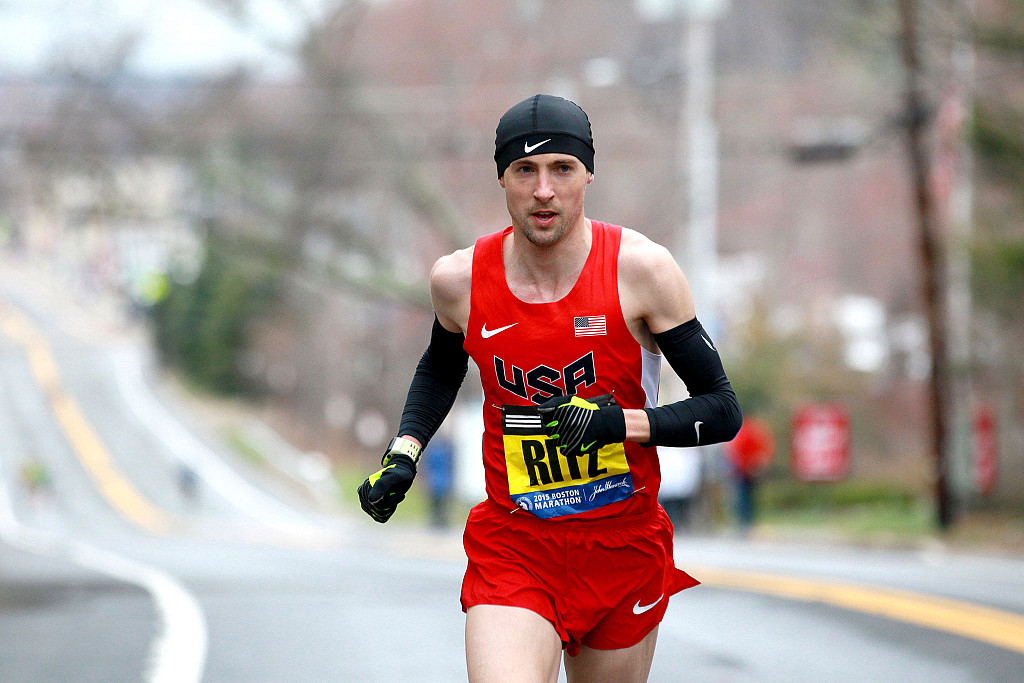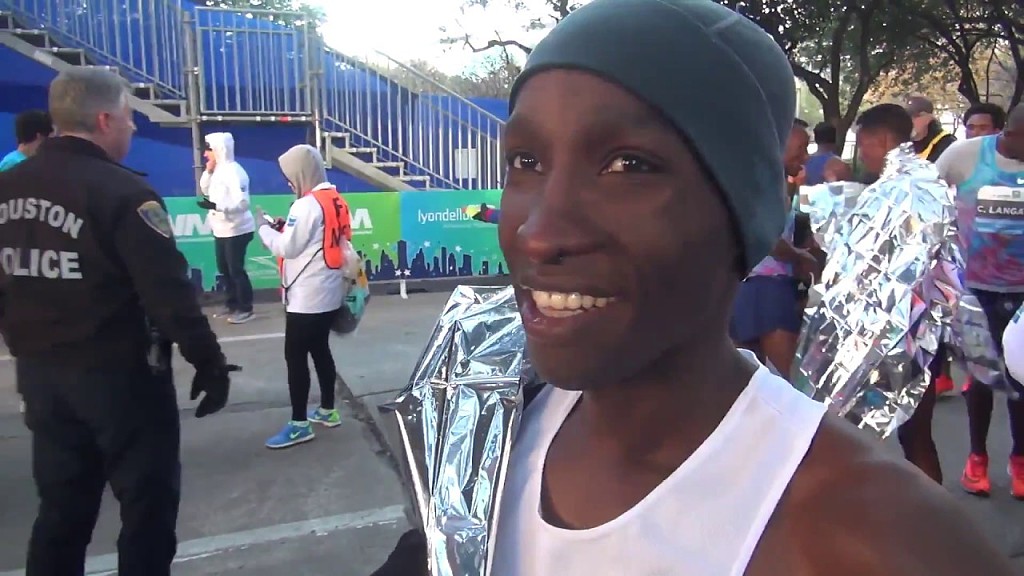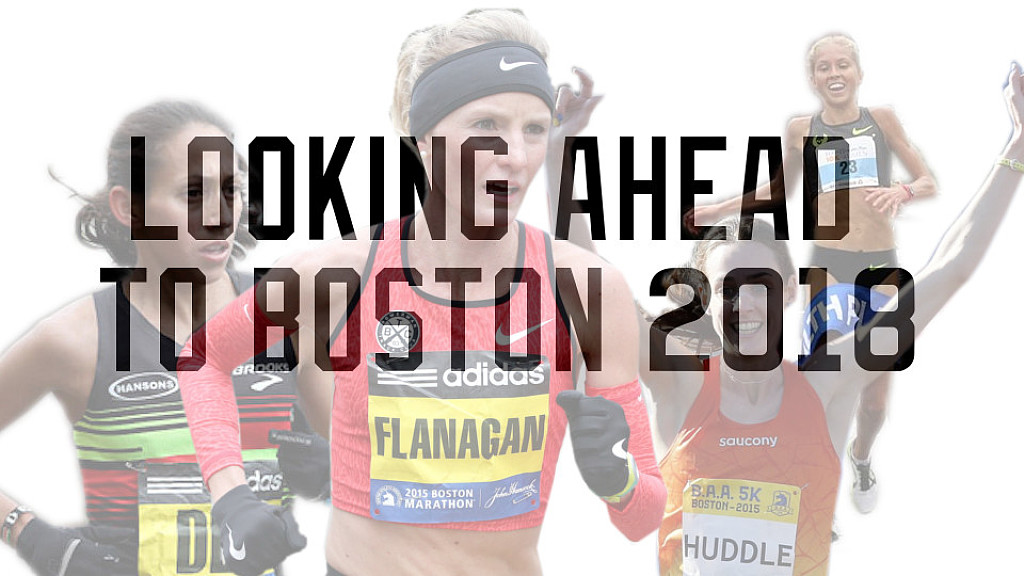Running News Daily
Running News Daily is edited by Bob Anderson. Send your news items to bob@mybestruns.com Advertising opportunities available. Train the Kenyan Way at KATA Kenya and Portugal owned and operated by Bob Anderson. Be sure to catch our movie A Long Run the movie KATA Running Camps and KATA Potato Farms - 31 now open in Kenya! https://kata.ke/
Index to Daily Posts · Sign Up For Updates · Run The World Feed
Articles tagged #Dathan Ritzenhein
Today's Running News
Geordie Beamish Rises from a Fall to World Champion Glory in Tokyo
Tokyo, September 15, 2025 — New Zealand’s Geordie Beamish produced one of the most dramatic victories of the World Athletics Championships, storming to gold in the men’s 3000m steeplechase. His winning time of 8:33.88 edged Morocco’s reigning champion Soufiane El Bakkali by just 0.07 seconds, with 17-year-old Kenyan Edmund Serem taking bronze in 8:34.56 .
This is a breakthrough moment for New Zealand athletics: the nation’s first-ever outdoor World Championships track gold .
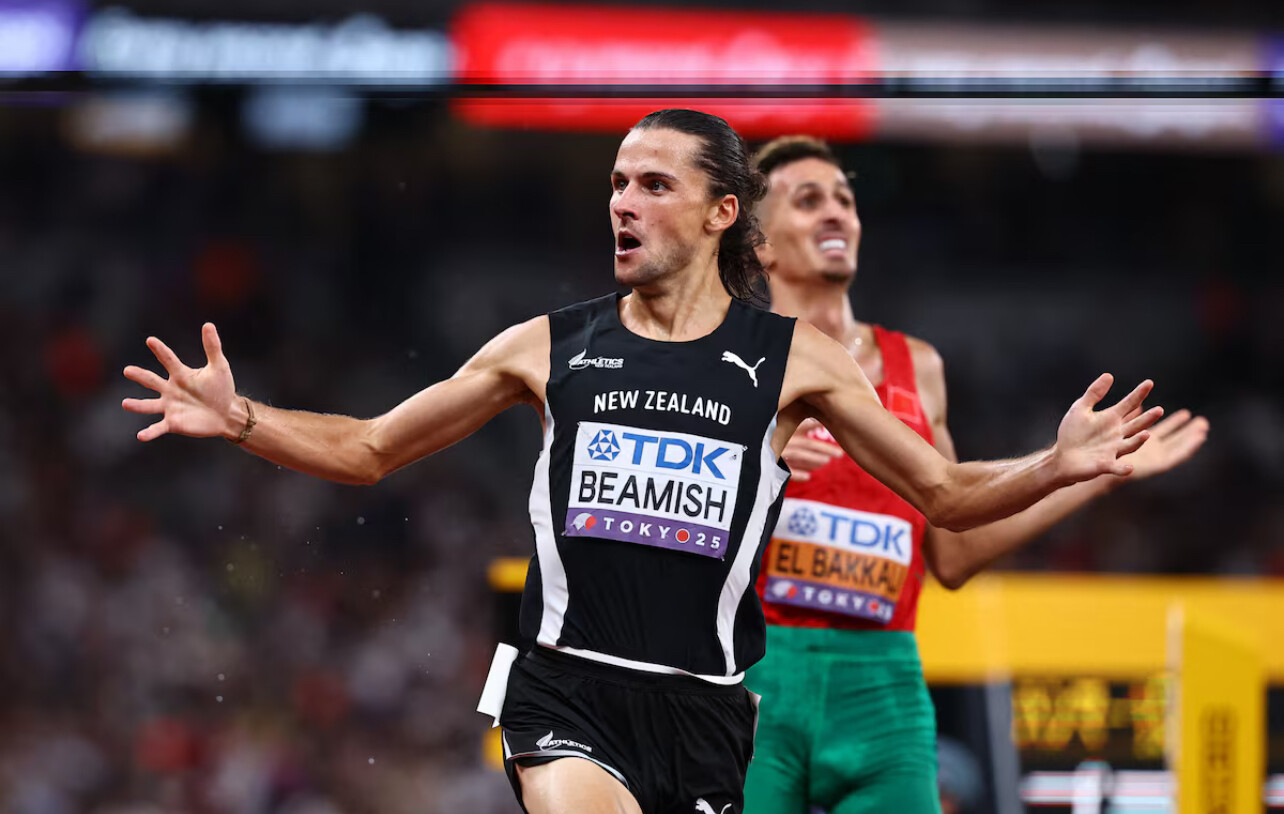
A Tactical Race Decided at the Line
The steeplechase final unfolded at a controlled pace, leaving the medals to be decided in the closing laps. El Bakkali, a two-time Olympic and world champion, looked ready to add another title. But Beamish, renowned for his devastating kick, stayed composed.
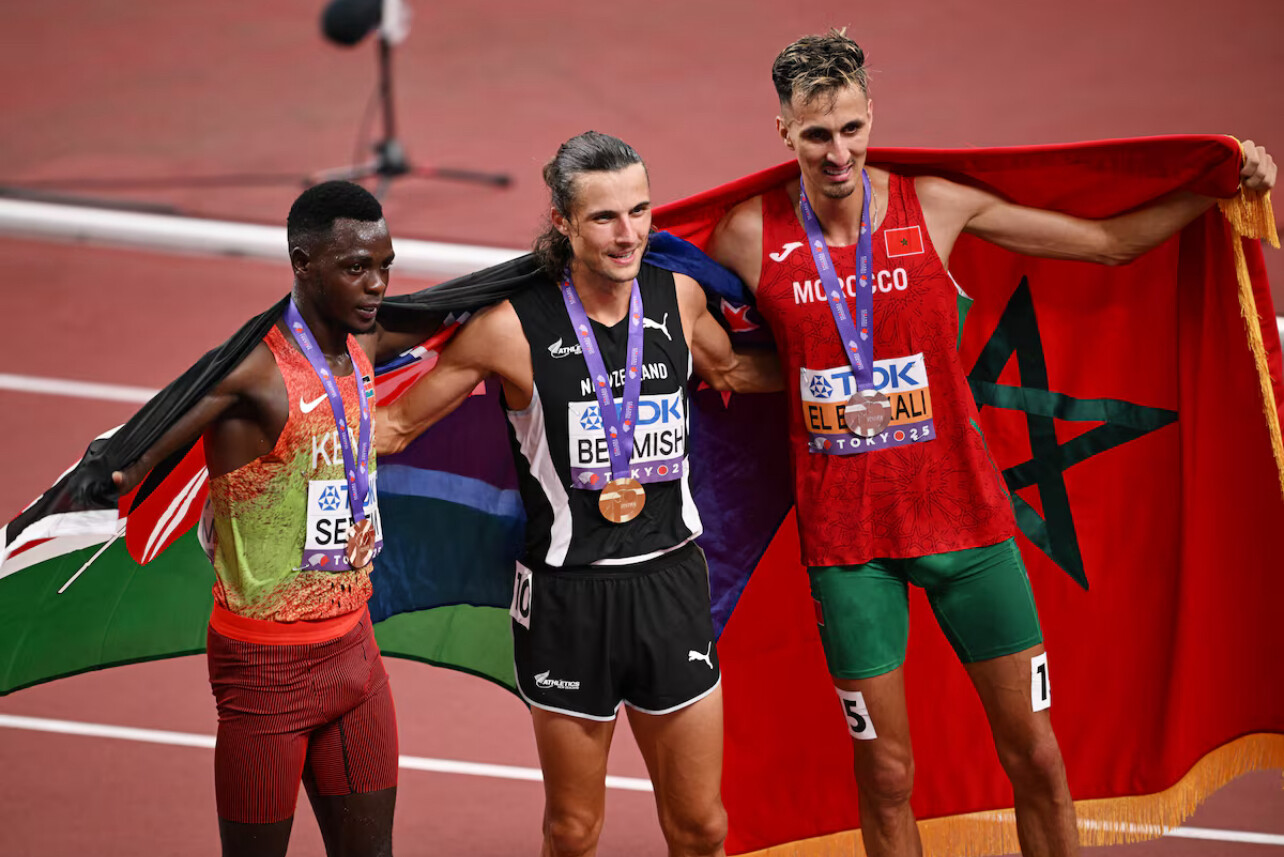
On the last lap, he surged through the field, matching El Bakkali stride for stride. Off the final water jump, Beamish unleashed one last burst of speed. In a thrilling lean at the line, he dethroned one of the event’s greats.
A fall and a spike in the heats
Beamish’s victory was even more remarkable considering his rough path to the final. In his qualifying heat, he fell heavily and was stepped on in the face, yet managed to get up and finish second to advance .
That resilience set the tone for his gold-medal run.
Who Is Geordie Beamish?
• Born: October 24, 1996, in Hastings, New Zealand
• Club: On Athletics Club (based in Boulder, Colorado)
• Coach: Dathan Ritzenhein
• Specialties: 1500m through 5000m, and now the steeplechase
• Career highlights:
• 2024 World Indoor Champion in the 1500m (Glasgow)
• Oceania record holder in the 3000m steeplechase (8:09.64, Paris, 2024)
• Fifth in the 2023 World Championships steeplechase final
Beamish’s late move to the steeplechase has transformed his career, turning him from a versatile miler into a global champion.
This was a big upset
Beamish’s Tokyo win not only toppled El Bakkali’s reign but also put New Zealand back on the map of world middle-distance running. For a nation that once celebrated icons like Peter Snell and John Walker, this is a new chapter in the sport’s history.
With the 2028 Los Angeles Olympics on the horizon , Beamish has proven he has the strength, resilience, and tactical brilliance to contend for more global medals.
by Boris Baron
Login to leave a comment
Joe Klecker Plans His Half Marathon Debut
In a live recording of The CITIUS MAG Podcast in New York City, U.S. Olympian Joe Klecker confirmed that he is training for his half marathon debut in early 2025. He did not specify which race but signs point toward the Houston Half Marathon on Jan. 19th.
“We’re kind of on this journey to the marathon,” Klecker said on the Citizens Bank Stage at the 2024 TCS New York City Marathon Expo. “The next logical step is a half marathon. That will be in the new year. We don’t know exactly where yet but we want to go attack a half marathon. That’s what all the training is focused on and that’s why it’s been so fun. Not that the training is easy but it’s the training that comes the most naturally to me.”
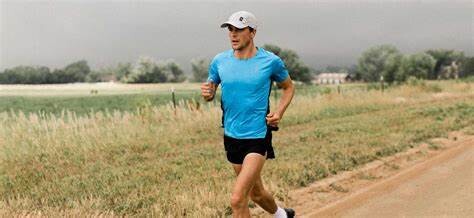
Klecker owns personal bests of 12:54.99 for 5000m and 27:07.57 for 10,000m. In his lone outdoor track race of 2024, he ran 27:09.29 at Sound Running’s The Ten in March and missed the Olympic qualifying standard of 27:00.00.
His training style and genes (his mother Janis competed at the 1992 Summer Olympics in the marathon and won two U.S. marathon national championships in her career; and his father Barney previously held the U.S. 50-mile ultramarathon record) have always linked Klecker to great marathoning potential. For this year’s TCS New York City Marathon, the New York Road Runners had Klecker riding in the men’s lead truck so he could get a front-row glimpse at the race and the course, if he chooses to make his debut there or race in the near future.
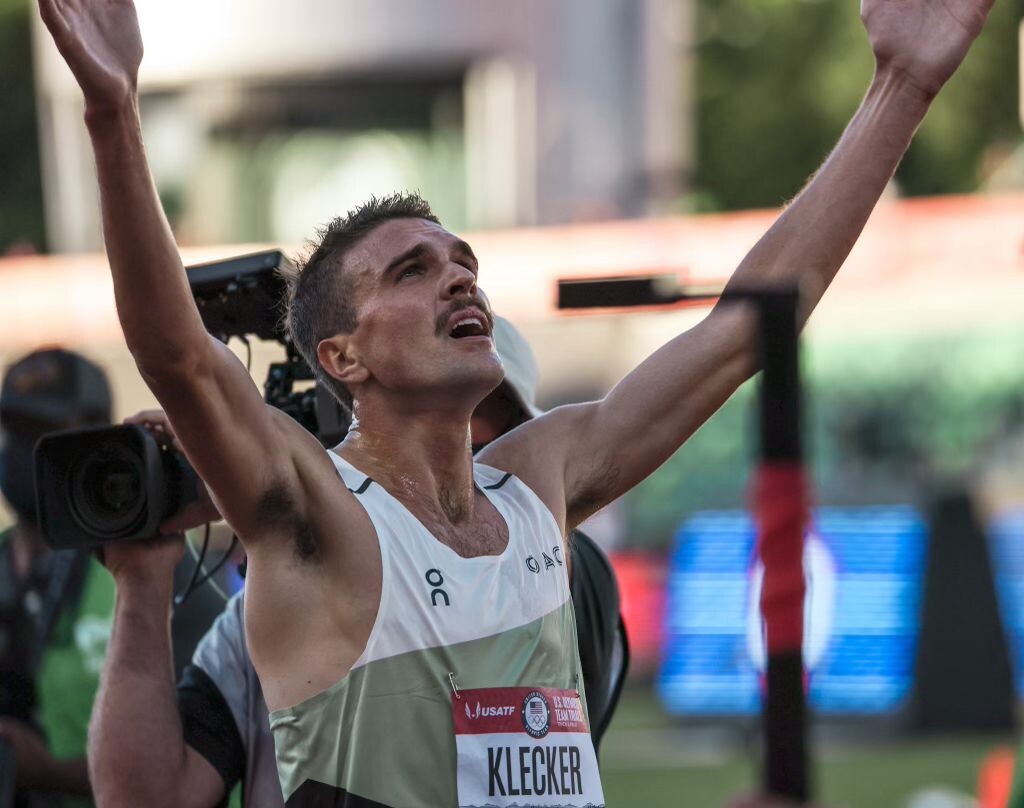
The Comeback From Injury
In late May, Klecker announced he would not be able to run at the U.S. Olympic Track and Field Trials in June due to his recovery from a torn adductor earlier in the season, which ended his hopes of qualifying for a second U.S. Olympic team. He spent much of April cross training and running on the Boost microgravity treadmill at a lower percentage of his body weight.
“The process of coming back has been so smooth,” Klecker says. “A lot of that is just because it’s been all at the pace of my health. I haven’t been thinking like, ‘Oh I need to be at this level of fitness in two weeks to be on track for my goals.’ If my body is ready to go, we’re going to keep progressing. If it’s not ready to go, we’re going to pull back a little bit. That approach is what helped me get through this injury.”
One More Track Season
Klecker is not fully prepared to bid adieu to the track. He plans to chase the qualifying standard for the 10,000 meters and attempt to qualify for the 2025 World Championships in Tokyo. In 2022, after World Athletics announced Tokyo as the 2025 host city, he told coach Dathan Ritzenhein that he wanted the opportunity to race at Japan National Stadium with full crowds.
“I’m so happy with what I’ve done on the track that if I can make one more team, I’ll be so happy,” Klecker says. “Doing four more years of this training, I don’t know if I can stay healthy to be at the level I want to be. One more team on the track would just be like a dream.”
Klecker is also considering doubling up with global championships and could look to qualify for the 2025 World Road Running Championships, which will be held Sept. 26th to 28th in San Diego. To make the team, Klecker would have to race at the Atlanta Half Marathon on Sunday, March 2nd, which also serves as the U.S. Half Marathon Championships. The top three men and women will qualify for Worlds. One spot on Team USA will be offered via World Ranking.
Sound Running’s The Ten, one of the few fast opportunities to chase the 10,000m qualifying standard on the track, will be held on March 29th in San Juan Capistrano.
Thoughts on Ryan Hall’s American Record
The American record in the half marathon remains Ryan Hall’s 59:43 set in Houston on Jan. 14th, 2007. Two-time Olympic medalist Galen Rupp (59:47 at the 2018 Prague Half) and two-time U.S. Olympian Leonard Korir (59:52 at the 2017 New Dehli Half) are the only other Americans to break 60 minutes.
In the last three years, only Biya Simbassa (60:37 at the 2022 Valencia Half), Kirubel Erassa (60:44 at the 2022 Houston Half), Diego Estrada (60:49 at the 2024 Houston Half) and Conner Mantz (60:55 at the 2021 USATF Half Marathon Championships) have even dipped under 61 minutes.
On a global scale, Nineteen of the top 20 times half marathon performances in history have come since the pandemic. They have all been run by athletes from Kenyan, Uganda, and Ethiopia, who have gone to races in Valencia (Spain), Lisbon (Portugal), Ras Al Khaimah (UAE), or Copenhagen (Denmark), and the top Americans tend to pass on those races due to a lack of appearance fees or a stronger focus on domestic fall marathons.
Houston in January may be the fastest opportunity for a half marathon outside of the track season, which can run from March to September for 10,000m specialists.
“I think the record has stood for so long because it is such a fast record but we’re seeing these times drop like crazy,” Klecker says. “I think it’s a matter of time before it goes. Dathan (Ritzenhein) has run 60:00 so he has a pretty good barometer of what it takes to be in that fitness. Listening to him has been really good to let me know if that’s a realistic possibility and I think it is. That’s a goal of mine. I’m not there right now but I’m not racing a half marathon until the new year. I think we can get there to attempt it. A lot has to go right to get a record like that but just the idea of going for it is so motivating in training.”
His teammate, training partner, and Olympic marathon bronze medalist Hellen Obiri has full confidence in Klecker’s potential.
“He has been so amazing for training,” Obiri said in the days leading up to her runner-up finish at the New York City Marathon. “I think he can do the American record.”
by Chris Chavez
Login to leave a comment
Aramco Houston Half Marathon
The Chevron Houston Marathon provides runners with a one-of-a-kind experience in the vibrant and dynamic setting of America's fourth-largest city. Renowned for its fast, flat, and scenic single-loop course, the race has earned accolades as the "fastest winter marathon" and the "second fastest marathon overall," according to the Ultimate Guide to Marathons. It’s a perfect opportunity for both elite athletes...
more...Hellen Obiri shares how love from Americans is motivating her to succeed in marathons
Kenyan marathoner Hellen Obiri has revealed how moving to the United States has become a major source of motivation for her given the way she gets treated well by Americans.
Two-time Boston Marathon champion Hellen Obiri is loving life in America since relocating to pursue her marathon dreams.
Obiri moved stateside in 2022 ahead of her marathon debut in New York that year, teaming up with a new coach and training group in Boulder, Colorado.
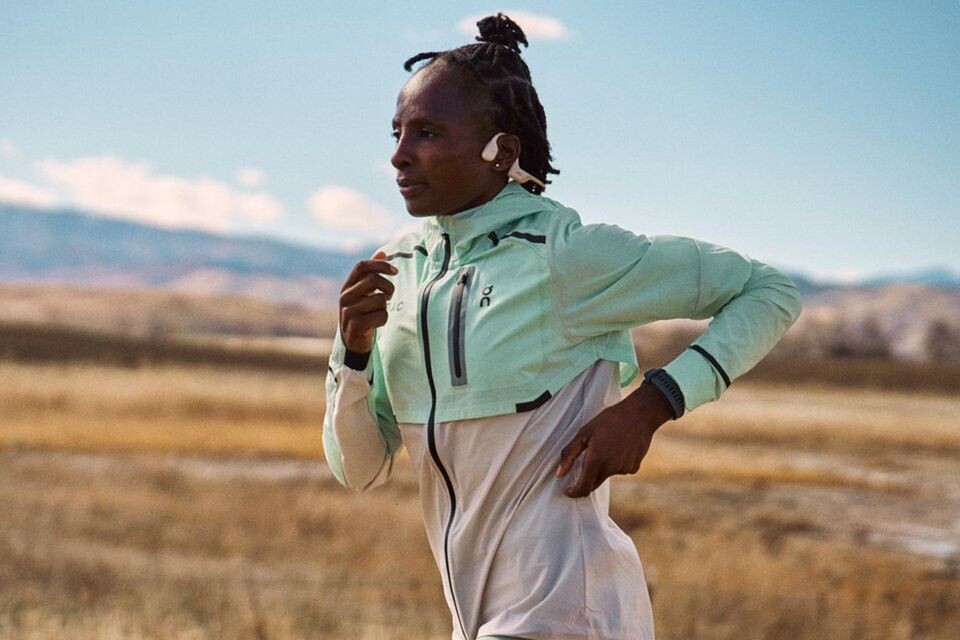
She joined the On Athletics Club (OAC), an elite team based in Boulder which is led by former distance runner Dathan Ritzenhein.
After a disappointing marathon debut in New York that saw her finish sixth in 2022, she has since got it right to win Boston twice (2023 and 2024) and New York in 2023, while she is looking for another victory in the Big Apple next month.
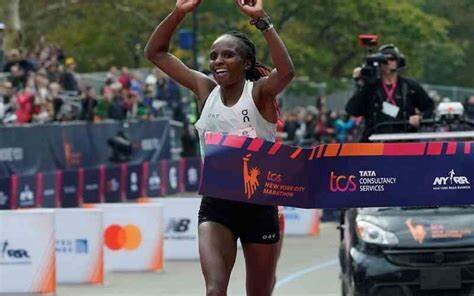
Preparation for her races means meeting different people on the road as she trains and the frequency has yielded familiarity while her success is now rubbing off on most Americans who have responded with love that has left the 34-year-old delighted and motivated.
“People here know me. Like now when I train, people say; ‘Hey Hellen, we saw you in Paris during [Olympics] closing ceremony you did so well, well done,’” she told FloTrack.
“It feels so good when people appreciate your work. I feel like I need to work extra hard for them to continue appreciating me. It keeps motivating me a lot,” he added.
Obiri will hope that the love from American motivates her to another rare double as she is looking to win both New York and Boston titles for the second straight year.
The mother of one, who relocated with her family to the US, has since adapted to life in America with Boulder’s high-altitude, rolling trails and temperate climate making it an ideal location for distance runners like her.
by Joel Omotto
Login to leave a comment
How to Run in the Heat Like the Pros
Over the past decade, training for the heat has gone from a nice-to-have to an absolute necessity for top runners. Professor Chris Minson is attempting to perfect the science.
After a few pleasant hours sitting in the sun watching the Prefontaine Classic in Eugene, Oregon last month, I headed down into the bowels of Hayward Field for a grueling test for running in the heat. Chris Minson, a professor of human physiology at the University of Oregon, had invited me to try the heat adaptation protocol he has developed for elite athletes from the university and from local pro teams like the Bowerman Track Club. I’ve written about Minson’s research several times, so experiencing the protocol first-hand seemed like a good idea… at the time.
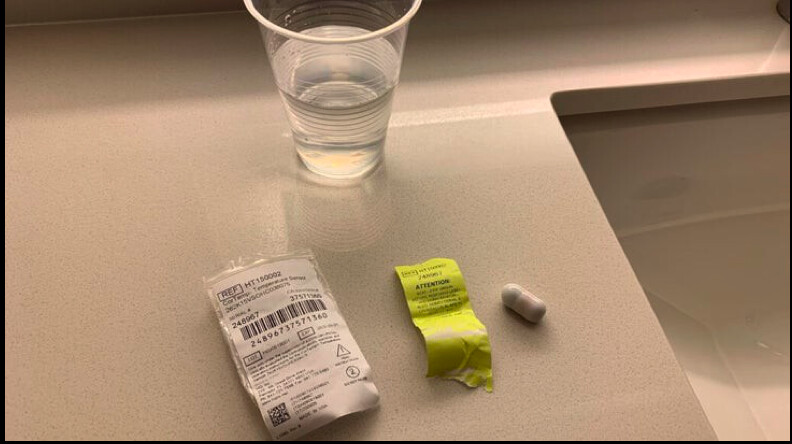
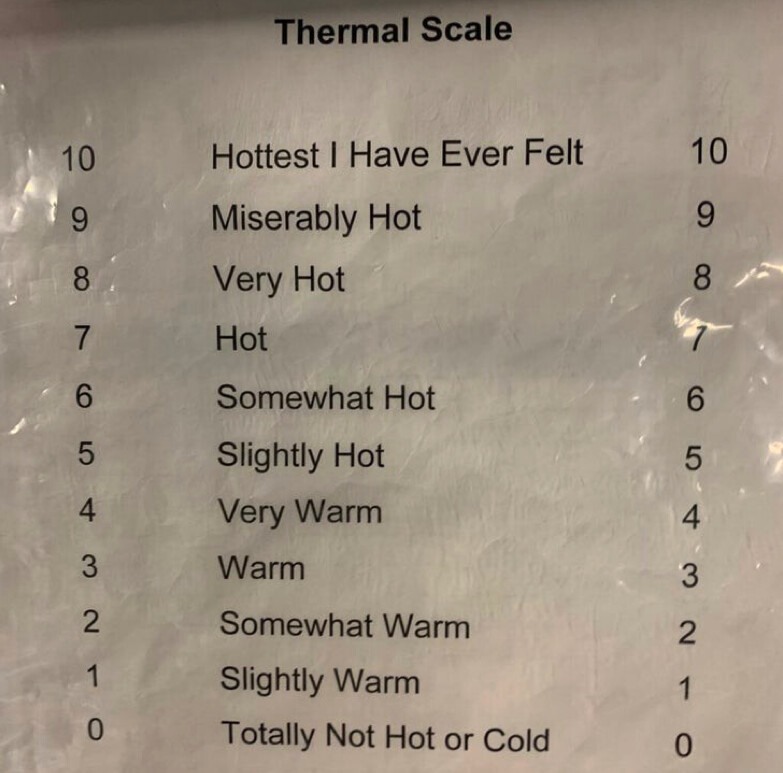
Heat is a big deal in sports these days, and it’s only getting bigger. In recent years we’ve had major events like the world track and field championships in insanely hot places, like Qatar, where the marathons had to be started at midnight. But summertime in Eugene (where the Olympic Track Trials will take place later this month) and Paris (where the Olympics will be held) can also be sizzling. Over the past decade, heat preparation has gone from a nice-to-have to an absolute necessity for top athletes. The details of how to prepare remain more art than science, though, so I was interested to see how Minson put theory into practice.
Back in the 1920s and 1930s, scientists developed the first heat adaptation protocols for workers in South Africa’s sweltering gold mines. The gold standard for heat adaptation evolved from that work: spend at least an hour a day exercising in hot conditions, and after 10 to 14 days you’ll see a bunch of physiological changes. Your core temperature will be lower, your blood volume will be higher, you’ll begin sweating and dilating your blood vessels at a lower temperature threshold, you’ll sweat more, and so on. Put it all together and you’ll be able to stay cooler and run faster in hot conditions.
In fact, there’s even evidence that this type of heat adaptation can make you faster in moderate weather, perhaps as a result of the extra blood plasma. In the lead-up to the 2008 Olympics, Minson was working with American marathoner Dathan Ritzenhein, helping him prepare for the expected hot conditions in Beijing. But he started to worry about what would happen if it wasn’t hot: would all the heat training actually make Ritzenhein slower? Minson and his colleagues ran a study to find out; the results, which they published in 2010, suggested that heat adaptation helps even in cool conditions. That’s the study that really kicked interest in heat training into higher gear.
The problem with the classic approach, though, is that training for an hour in hot, muggy conditions is exhausting. If you’re trying to do a hard workout, you won’t be able to hit the splits you want. If you’re trying to do an easy run, it’s going to take more out of you than it usually does, potentially compromising your next hard workout or raising your risk of overtraining. So how do you get the benefits of heat adaptation without tanking the rest of your training plan?
Minson’s Exercise & Environmental Physiology Lab at the University of Oregon, which he co-runs with fellow physiologist John Halliwill, is located in the Bowerman Sports Science Center, a state-of-the-art facility located under the northwest grandstand of Hayward Field. The key piece of equipment, for my purposes, is an environmental chamber that can take you down to 0 degrees Fahrenheit or up to 22,000 feet of simulated altitude, deliver simulated solar radiation, or blast you with wind. For my heat run, Minson set the dials to 100 degrees Fahrenheit and 40 percent humidity.
Earlier that day, Minson had given me a thermometer pill to swallow, which would enable him to wirelessly track my core temperature as the run progressed. “I’ll need that back,” he warned me, poker-faced. Fortunately, he was joking.
Before I entered the chamber, I peed in a cup so that Minson could check my urine-specific gravity, the ratio of how dense your urine is compared to water. I clocked in at 1.025, marginally above Minson’s threshold of 1.024 for mild dehydration. I blame it on having spent a few hours sitting in the sun watching the track meet. Then he checked my weight, so that he’d be able to figure out how much I sweated during the test.
When I stepped into the chamber, wearing nothing but shorts and running shoes, I could feel the blast of heat, but it wasn’t too oppressive—like a really hot day at the beach but under an umbrella. I started with a five-minute warm-up at a slow pace, gradually ramping up until I hit 7:30 mile pace. Then the formal protocol started: 30 minutes at that pace.
The pace was self-chosen; Minson refused to tell me the pace I “should” run. The goal was to settle in at an effort that I could comfortably maintain for half-an-hour, and that would get me hot enough to trigger adaptations—a core temperature of about 101 degrees Fahrenheit is thought to be about right—without overshooting and roasting myself. Most of the elite runners he works with end up choosing paces between 7:00 and 8:00 per mile. I slotted myself in the middle of that range—which, let’s be honest, was a dumb thing to do for an aging non-elite runner.
Still, the running itself felt easy to me. Every five minutes or so, Minson had me rate my perceived effort on the Borg scale, which runs from 6 to 20, and also rate how hot I felt. For this, he used his own 0 to 10 thermal scale.
I started out at the effort of 10 (“very light”) and thermal sensation of 3 (“warm”). After 15 minutes, my effort had crept up to 12 (“somewhat hard”), but my thermal sensation was still 3. By this point I was sweating up a storm, watching with interest as my splatters of sweat made a distinctly asymmetric pattern on the treadmill’s control panel. (Clearly I needed to visit the biomechanics lab down the hallway to sort out my stride asymmetries.)
In the latter part of the test, my sweat rate seemed to drop—not a great sign, since it could signal dehydration. My effort topped out at 13, but my thermal sensation crept up to 4 (“very warm”), then 5 (“slightly hot”), then 6 (“somewhat hot”). I still felt under control, though. Then the test ended, and Minson ushered me off the treadmill, into the next room, and into the hot tub, where he asked me to submerge myself up to my neck. The water was set to 104 degrees Fahrenheit, and it was awful. My thermal sensation immediately spiked up to 8 (“very hot”) and then 9 (“miserably hot”).
The odd thing is that the water was basically the same temperature as I was. My core temperature had crept up to 103.2 degrees towards the end of the run, and hit 103.7 shortly afterward. The water wasn’t warming me up in any significant way, but it was robbing me of the superficial perception of coolness that I got from air currents and the evaporation of sweat. It’s a good reminder of why cooling techniques like ice towels or simply dumping water on your head can be valuable: they can dramatically change your perception of how hot you are.
Sitting in that hot tub wasn’t fun, but it’s a key tool for Minson in his efforts to help athletes adapt to heat without interfering with their normal training. It extends the period of thermal stress without trashing their legs. A half-hour easy run, even in hot conditions, isn’t that draining for a well-trained athlete. At least, it’s not supposed to be.
After I’d had a cold shower and chugged a few bottles of sports drink, Minson went over the results with me. The good news is that I hadn’t seemed very bothered by the heat. I’d sweated out 2.2 pounds of fluid, indicating a fairly high sweat rate of around 2 liters per hour. That suggests that I should already be reasonably well equipped to race in warm conditions.
The bad news, though, was that my numbers didn’t make sense. There are no “wrong” answers on a subjective scale, but mine were puzzling. As the test proceeded and my core temperature drifted over 100 degrees, I kept claiming that I felt merely 3-out-of-10 “warm.” That might mean that I’m immune to heat—but more likely, it suggests that I wasn’t properly attuned to my body’s condition. If you’re running in the heat but you’re totally oblivious to how hot you’re getting, that can be a recipe for disaster.
In fact, my subjective numbers were strikingly similar to those of an elite runner Minson has worked with—one who has struggled in the heat. Minson helped the athlete renormalize his heat perception, so that conditions he originally labeled as 3 out of 10 became a more realistic 5 or 6 out of 10.
The ability to accurately gauge how hot you are is important even in training, because those core temperature pills are about $70 a pop. Once athletes have a sense of how hot they should feel during heat adaptation runs, Minson has them judge their half-hour efforts by feel. If they start getting too hot—above 7 on the Minson Scale—they can turn a fan on in the heat chamber to avoid overheating. There’s no rigid schedule of when they do these heat runs: they fit them in around their other training and racing and travel plans.
In practice, of course, most of us don’t have access to a high-tech heat chamber and temperature-controlled hot tub. But studies in recent years have shown that you can use a variety of approaches to get your core temperature up: hot baths, saunas (Minson has one in his lab, and another in his backyard), overdressing during runs. The big-picture takeaway from Minson’s approach is that you can find ways of getting a heat stimulus without disrupting the rest of your training.
To do that, though, you need to be able to gauge when you’re getting overcooked. When I got back to my hotel room that afternoon, I realized that I was feeling wrung out, as if I’d done a long, hard workout rather than a half-hour jog. I’d missed the mark. I decided to take the next day off, and dreamed that night of Minson’s other recent research focus: ice baths.
by Outside Online
Login to leave a comment
The Pill That Over Half the Distance Medallists Used at the 2023 Worlds
What's the deal with sodium bicarbonate?What if there was a pill, new to the market this year, that was used by more than half of the distance medalists at the 2023 World Athletics Championships? A supplement so in-demand that there was a reported black market for it in Budapest, runners buying from other runners who did not advance past the preliminary round — even though the main ingredient can be found in any kitchen?
How did this pill become so popular? Well, there are rumors that Jakob Ingebrigtsen has been taking it for years — rumors that Ingebrigtsen’s camp and the manufacturers of the pill will neither confirm nor deny.
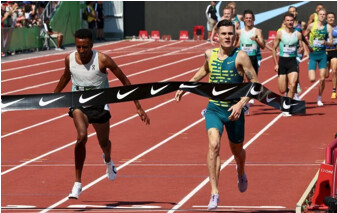
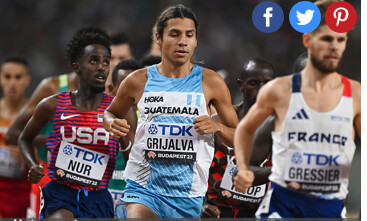
So about this pill…does it work? Does it actually boost athletic performance? Ask a sports scientist, someone who’s studied it for more than a decade, and they’ll tell you yes.
“There’s probably four or five legal, natural supplements, if you will, that seem to have withstood the test of time in terms of the research literature and [this pill] is one of those,” says Jason Siegler, Director of Human Performance in the College of Health Solutions at Arizona State University.
But there’s a drawback to this pill. It could…well, let’s allow Luis Grijalva, who used it before finishing 4th in the World Championship 5,000m final in Budapest, to explain.
“I heard stories if you do it wrong, you chew it, you kind of shit your brains out,” Grijalva says. “And I was a little bit scared.”
The research supports that, too.
“[Gastrointestinal distress] has by far and away been the biggest hurdle for this supplement,” Siegler says.Okay, enough with the faux intrigue. If you’ve read the subtitle of this article, you know the pill we are talking about is sodium bicarbonate. Specifically, the Maurten Bicarb System, which has been available to the public since February and which has been used by some of the top teams in endurance sports: cycling juggernaut Team Jumbo-Visma and, in running, the On Athletics Club and NN Running Team. (Maurten has sponsorship or partnership agreements with all three).Some of the planet’s fastest runners have used the Maurten Bicarb System in 2023, including 10,000m world champion Joshua Cheptegei, 800m silver medalist Keely Hodgkinson, and 800m silver medalist Emmanuel Wanyonyi. Faith Kipyegon used it before winning the gold medal in the 1500m final in Budapest — but did not use it before her win in the 5,000m final or before any of her world records in the 1500m, mile, and 5,000m.
Herman Reuterswärd, Maurten’s head of communications, declined to share a full client list with LetsRun but claims two-thirds of all medalists from the 800 through 10,000 meters (excluding the steeplechase) used the product at the 2023 Worlds.
After years of trial and error, Maurten believes it has solved the GI issue, but those who have used their product have reported other side effects. Neil Gourley used sodium bicarbonate before almost every race in 2023, and while he had a great season — British champion, personal bests in the 1500 and mile — his head ached after races in a way it never had before. When Joe Klecker tried it at The TEN in March, he felt nauseous and light-headed — but still ran a personal best of 27:07.57. In an episode of the Coffee Club podcast, Klecker’s OAC teammate George Beamish, who finished 5th at Worlds in the steeplechase and used the product in a few races this year, said he felt delusional, dehydrated, and spent after using it before a workout this summer.
“It was the worst I’d felt in a workout [all] year, easily,” Beamish said.
Not every athlete who has used the Maurten Bicarb System has felt side effects. But the sport as a whole is still figuring out what to do about sodium bicarbonate.
Many athletes — even those who don’t have sponsorship arrangements with Maurten — have added it to their routines. But Jumbo-Visma’s top cyclist, Jonas Vingegaard — winner of the last two Tours de France — does not use it. Neither does OAC’s top runner, Yared Nuguse, who tried it a few times in practice but did not use it before any of his four American record races in 2023.“I’m very low-maintenance and I think my body’s the same,” Nuguse says. “So when I tried to do that, it was kind of like, Whoa, what is this? My whole body felt weird and I was just like, I either did this wrong or this is not for me.”
How sodium bicarbonate works
The idea that sodium bicarbonate — aka baking soda, the same stuff that goes in muffins and keeps your refrigerator fresh — can boost athletic performance has been around for decades.
“When you’re exercising, when you’re contracting muscle at a really high intensity or a high rate, you end up using your anaerobic energy sources and those non-oxygen pathways,” says Siegler, who has been part of more than 15 studies on sodium bicarbonate use in sport. “And those pathways, some of the byproducts that they produce, one of them is a proton – a little hydrogen ion. And that proton can cause all sorts of problems in the muscle. You can equate that to that sort of burn that you feel going at high rates. That burn, most of that — not directly, but indirectly — is coming from the accumulation of these little hydrogen ions.”
As this is happening, the kidneys produce bicarbonate as a defense mechanism. For a while, bicarbonate acts as a buffer, countering the negative effects of the hydrogen ions. But eventually, the hydrogen ions win.The typical concentration of bicarbonate in most people hovers around 25 millimoles per liter. By taking sodium bicarbonate in the proper dosage before exercise, Siegler says, you can raise that level to around 30-32 millimoles per liter.
“You basically have a more solid first line of defense,” Siegler says. “The theory is you can go a little bit longer and tolerate the hydrogen ions coming out of the cell a little bit longer before they cause any sort of disruption.”
Like creatine and caffeine, Siegler says the scientific literature is clear when it comes to sodium bicarbonate: it boosts performance, specifically during events that involve short bursts of anaerobic activity. But there’s a catch.
***
Bicarb without the cramping
Sodium bicarbonate has never been hard to find. Anyone can swallow a spoonful or two of baking soda with some water, though it’s not the most appetizing pre-workout snack. The problem comes when the stomach tries to absorb a large amount of sodium bicarbonate at once.
“You have a huge charged load in your stomach that the acidity in your stomach has to deal with and you have a big shift in the partial pressure of carbon dioxide across the gut,” Siegler says. “And that’s what gives you the cramping.”
A few years ago, Maurten was trying to solve a similar problem for marathoners trying to ingest large amounts of carbohydrates during races. The result was their carbohydrate drink, which relies on something called a hydrogel to form in the stomach. The hydrogel resists the acidity of the stomach and allows the carbohydrates to be absorbed in the intestine instead, where there is less cramping.
“We thought, okay, we are able to solve that one,” Reuterswärd says. “Could we apply the hydrogel technology to something else that is really risky to consume that could be beneficial?”
For almost four years, Maurten researched the effects of encapsulating sodium bicarbonate in hydrogels in its Swedish lab, conducting tests on middle-distance runners in Gothenburg. Hydrogels seemed to minimize the risk, but the best results came when hydrogels were paired with microtablets of sodium bicarbonate.
The result was the Maurten Bicarb System — “system,” because the process for ingesting it involves a few steps. Each box contains three components: a packet of hydrogel powder, a packet of tiny sodium bicarbonate tablets, and a mixing bowl. Mix the powder with water, let it stand for a few minutes, and sprinkle in the bicarb.The resulting mixture is a bit odd. It’s gooey. It’s gray. It doesn’t really taste like anything. It’s not quite liquid, not quite solid — a yogurt-like substance flooded with tiny tablets that you eat with a spoon but swallow like a drink.
The “swallow” part is important. Chew the tablets and the sodium bicarbonate will be absorbed before the hydrogels can do their job. Which means a trip to the toilet may not be far behind.
When Maurten launched its Bicarb System to the public in February 2023, it did not have high expectations for sales in year one.
“It’s a niche product,” Reuterswärd says. “From what we know right now, it maybe doesn’t make too much sense if you’re an amateur, if you’re just doing 5k parkruns.”
But in March, Maurten’s product began making headlines in cycling when it emerged that it was being used by Team Jumbo-Visma, including by stars Wout van Aert and Primož Roglič. Sales exploded. Because bicarb dosage varies with bodyweight, Maurten’s system come in four “sizes.” And one size was selling particularly well.
“If you’re an endurance athlete, you’re around 60-70 kg (132-154 lbs),” Reuterswärd says. “We had a shortage with the size that corresponded with that weight…The first couple weeks, it was basically only professional cyclists buying all the time, massive amounts. And now we’re seeing a similar development in track & field.”
If there was a “Jumbo-Visma” effect in cycling, then this summer there was a “Jakob Ingebrigtsen” effect in running.To be clear: there is no official confirmation that Ingebrigtsen uses sodium bicarbonate. His agent, Daniel Wessfeldt, did not respond to multiple emails for this story. When I ask Reuterswärd if Ingebrigtsen has used Maurten’s product, he grows uncomfortable.
“I would love to be very clear here but I will have to get back to you,” Reuterswärd says (ultimately, he was not able to provide further clarification).
But when Maurten pitches coaches and athletes on its product, they have used data from the past two years on a “really good” 1500 guy to tout its effectiveness, displaying the lactate levels the athlete was able to achieve in practice with and without the use of the Maurten Bicarb System. That athlete is widely believed to be Ingebrigtsen. Just as Ingebrigtsen’s success with double threshold has spawned imitators across the globe, so too has his rumored use of sodium bicarbonate.
Grijalva says he started experimenting with sodium bicarbonate “because everybody’s doing it.” And everybody’s doing it because of Ingebrigtsen.
“[Ingebrigtsen] was probably ahead of everybody at the time,” Grijalva said. “Same with his training and same with the bicarb.”
OAC coach Dathan Ritzenhein took sodium bicarbonate once before a workout early in his own professional career, and still has bad memories of swallowing enormous capsules that made him feel sick. Still, he was willing to give it a try with his athletes this year after Maurten explained the steps they had taken to reduce GI distress.
“Certainly listening to the potential for less side effects was the reason we considered trying it,” says Ritzenhein. “I don’t know who is a diehard user and thinks that it’s really helpful, but around the circuit I know a lot of people that have said they’ve [tried] it.”
Coach/agent Stephen Haas says a number of his athletes, including Gourley, 3:56 1500 woman Katie Snowden, and Worlds steeple qualifier Isaac Updike, tried bicarb this year. In the men’s 1500, Haas adds, “most of the top guys are already using it.”
Yet 1500-meter world champion Josh Kerr was not among them. Kerr’s nutritionist mentioned the idea of sodium bicarbonate to him this summer but Kerr chose to table any discussions until after the season. He says he did not like the idea of trying it as a “quick fix” in the middle of the year.
“I review everything at the end of the season and see where I could get better,” Kerr writes in a text to LetsRun. “As long as the supplement is above board, got all the stamps of approvals needed from WADA and the research is there, I have nothing against it but I don’t like changing things midseason.”
***
So does it actually work?
Siegler is convinced sodium bicarbonate can benefit athletic performance if the GI issues can be solved. Originally, those benefits seemed confined to shorter events in the 2-to 5-minute range where an athlete is pushing anaerobic capacity. Buffering protons does no good to short sprinters, who use a different energy system during races.
“A 100-meter runner is going to use a system that’s referred to the phosphagen or creatine phosphate system, this immediate energy source,” Siegler says. “…It’s not the same sort of biochemical reaction that eventuates into this big proton or big acidic load. It’s too quick.”
But, Siegler says, sodium bicarbonate could potentially help athletes in longer events — perhaps a hilly marathon.
“When there’s short bursts of high-intensity activity, like a breakaway or a hill climb, what we do know now is when you take sodium bicarbonate…it will sit in your system for a number of hours,” Siegler says. “So it’s there [if] you need it, that’s kind of the premise behind it basically. If you don’t use it, it’s fine, it’s not detrimental. Eventually your kidneys clear it out.”Even Reuterswärd admits that it’s still unclear how much sodium bicarbonate helps in a marathon — “honestly, no one knows” — but it is starting to be used there as well. Kenya’s Kelvin Kiptum used it when he set the world record of 2:00:35at last month’s Chicago Marathon; American Molly Seidel also used it in Chicago, where she ran a personal best of 2:23:07.
Siegler says it is encouraging that Maurten has tried to solve the GI problem and that any success they experience could spur other companies to research an even more effective delivery system (currently the main alternative is Amp Human’s PR Lotion, a sodium bicarbonate cream that is rubbed into the skin). But he is waiting for more data before rendering a final verdict on the Maurten Bicarb System.
“I haven’t seen any peer-reviewed papers yet come out so a bit I’m hesitant to be definitive about it,” Siegler said.
Trent Stellingwerff, an exercise physiologist and running coach at the Canadian Sport Institute – Pacific, worked with Siegler on a 2020 paper studying the effect of sodium bicarbonate on elite rowers. A number of athletes have asked him about the the Maurten Bicarb System, and some of his marathoners have used the product. Like Siegler, he wants to see more data before reaching a conclusion.
“I always follow the evidence and science, and to my knowledge, as of yet, I’m unaware of any publications using the Maurten bicarb in a double-blind, placebo-controlled clinical trial,” Stellingwerff writes in a text to LetsRun. “So without any published data on the bicarb version, I can’t really say it does much.”
The closest thing out there right now is a British study conducted by Lewis Goughof Birmingham City University and Andy Sparks of Edge Hill University. In a test of 10 well-trained cyclists, Gough and Sparks found the Maurten Bicarb System limited GI distress and had the potential to improve exercise performance. Reuterswärd says the study, which was funded by Maurten, is currently in the review process while Gough and Sparks suggested further research to investigate their findings.
What about the runners who used sodium bicarbonate in 2023?
Klecker decided to give bicarb a shot after Maurten made a presentation to the OAC team in Boulder earlier this year. He has run well using bicarb (his 10,000 pb at The TEN) and without it (his 5,000 pb in January) and as Klecker heads into an Olympic year, he is still deciding whether the supposed benefits are worth the drawbacks, which for him include nausea and thirst. He also says that when he has taken the bicarb, his muscles feel a bit more numb than usual, which has made it more challenging for him to gauge his effort in races.
“There’s been no, Oh man I felt just so amazing today because of this bicarb,” Klecker says. “If anything, it’s been like, Oh I didn’t take it and I felt a bit more like myself.”
Klecker also notes that his wife and OAC teammate, Sage Hurta-Klecker, ran her 800m season’s best of 1:58.09 at the Silesia Diamond League on July 16 — the first race of the season in which she did not use bicarb beforehand.
A number of athletes in Mike Smith‘s Flagstaff-based training group also used bicarb this year, including Grijalva and US 5,000 champion Abdihamid Nur. Grijalva did not use bicarb in his outdoor season opener in Florence on June 2, when he ran his personal best of 12:52.97 to finish 3rd. He did use it before the Zurich Diamond League on August 31, when he ran 12:55.88 to finish 4th.“I want to say it helps, but at the same time, I don’t want to rely on it,” Grijalva says.
Almost every OAC athlete tried sodium bicarbonate at some point in 2023. Ritzenhein says the results were mixed. Some of his runners have run well while using it, but the team’s top performer, Nuguse, never used it in a race. Ritzenhein wants to continue testing sodium bicarbonate with his athletes to determine how each of them responds individually and whether it’s worth using moving forward.
That group includes Alicia Monson, who experimented with bicarb in 2023 but did not use it before her American records at 5,000 and 10,000 meters or her 5th-place finish in the 10,000 at Worlds.
“It’s not the thing that’s going to make or break an athlete,” Ritzenhein says. “…It’s a legal supplement that has the potential, at least, to help but it doesn’t seem to be universal. So I think there’s a lot more research that needs to be done into it and who benefits from it.”
The kind of research scientists like Stellingwerff want to see — double-blind, controlled clinical trials — could take a while to trickle in. But now that anyone can order Maurten’s product (it’s not cheap — $65 for four servings), athletes will get to decide for themselves whether sodium bicarbonate is worth pursuing.
“The athlete community, obviously if they feel there’s any sort of risk, they’re weighing up the risk-to-benefit ratio,” Siegler said. “The return has got to be good.”
Grijalva expects sodium bicarbonate will become part of his pre-race routine next year, along with a shower and a cup of coffee. Coffee, and the caffeine contained wherein, may offer a glimpse at the future of bicarb. Caffeine has been widely used by athletes for longer than sodium bicarbonate, and the verdict is in on that one: it works. Yet plenty of the greats choose not to use it.
Nuguse is among them. He does not drink coffee — a fact he is constantly reminded of by Ritzenhein.
“I make jokes almost every day about it,” Ritzenhein says. “His family is Ethiopian – coffee tradition and ceremony is really important to them.”
Ritzenhein says he would love it if Nuguse drank a cup of coffee sometime, but he’s not going to force it on him. Some athletes, Ritzenhein says, have a tendency to become neurotic about these sorts of things. That’s how Ritzenhein was as an athlete. It’s certainly how Ritzenhein’s former coach at the Nike Oregon Project, Alberto Salazar, was — an approach that ultimately earned Salazar a four-year ban from USADA.
Ritzenhein says he has no worries when it comes to any of his athletes using sodium bicarbonate — Maurten’s product is batch-tested and unlike L-carnitine, there is no specific protocol that must be adhered to in order for athletes to use it legally under the WADA Code. Still, there is something to be said for keeping things simple.
“Yared knows how his body feels,” Ritzenhein says. “…He literally rolls out of practice and comes to practice like a high schooler with a Eggo waffle in hand. Probably more athletes could use that kind of [approach].”
Talk about this article on our world-famous fan forum / messageboard.
by Let’s Run
Login to leave a comment
24 Hours with One of the World’s Best Marathoners
As the 2023 Boston Marathon winner and Olympian Hellen Obiri puts final touches on her build for the NYC Marathon, she’s aiming to become the seventh woman ever to win two majors in one year
Four weeks out from competing in the 2023 New York City Marathon, one of the world’s most prestigious road races, an alarm clock gently buzzes, signaling the start of the day for 33-year-old Hellen Obiri.
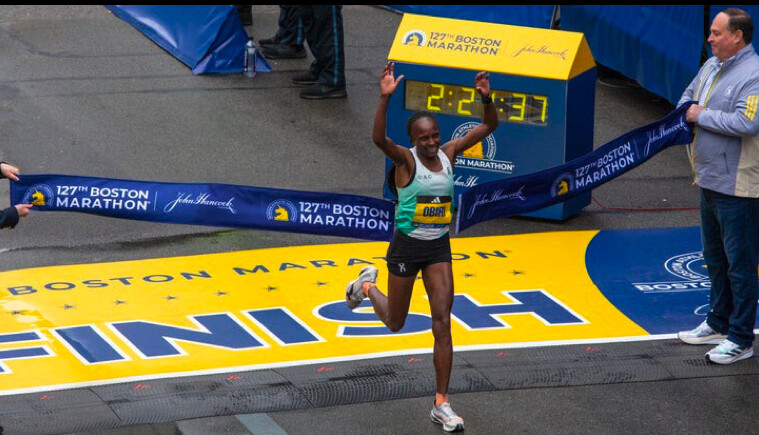
Despite having rested for nearly nine hours, Obiri, a two-time world champion from Kenya, says the alarm is necessary, otherwise she can oversleep. This morning’s training session of 12 miles at an easy pace is the first of two workouts on her schedule for the day as she prepares for the New York City Marathon on November 5.
The race will be her third attempt in the distance since she graduated from a successful track career and transitioned into road racing in 2022. Obiri placed sixth at her marathon debut in New York last November, finishing in 2:25:49.
“I was not going there to win. I was there to participate and to learn,” she says, adding that the experience taught her to be patient with the distance. This time around in New York, she wants to claim the title.
Obiri drinks two glasses of water, but she hasn’t eaten anything by the time she steps outside of her two-bedroom apartment in the Gunbarrel neighborhood of Boulder, Colorado.
In September 2022, the three-time Olympian moved nearly 9,000 miles from her home in the Ngong Hills, on the outskirts of Nairobi, Kenya, to Colorado. She wanted to pursue her marathon ambitions under the guidance of coach and three-time Olympian Dathan Ritzenhein, who is the fourth-fastest U.S. marathoner in history. Ritzenhein retired from professional running in 2020 and now oversees the Boulder-based On Athletics Club (OAC), a group of elite professional distance runners supported by Swiss sportswear company On.
Obiri, who was previously sponsored by Nike for 12 years before she signed a deal with On in 2022, said that moving across the world wasn’t a difficult decision. “It’s a great opportunity. Since I came here, I’ve been improving so well in road races.”
In April, Obiri won the Boston Marathon. It was only her second effort in the distance, and the victory has continued to fuel her momentum for other major goals that include aiming for gold at the 2024 Paris Olympics and also running the six most competitive and prestigious marathons in the world, known as the World Marathon Majors.
Obiri says goodbye to her eight-year-old daughter Tania and gets into a car to drive six miles to Lefthand trailhead, where she runs on dirt five days a week. She will train on an empty stomach, which she prefers for runs that are less than 15 miles. Once, she ate two slices of bread 40 minutes before a 21-mile run and was bothered by side stitches throughout the workout. Now, she is exceptionally careful about her fueling habits.
Three runners stretch next to their cars as Obiri clicks a watch on her right wrist and begins to shuffle her feet. Her warmup is purposely slow. In this part of Colorado, at 5,400 feet, the 48-degree air feels frostier and deserving of gloves, but Obiri runs without her hands covered. She is dressed in a thin olive-colored jacket, long black tights, and a black pair of unreleased On shoes.
Obiri’s feet clap against a long dirt road flanked by farmland that is dotted with horses and a few donkeys. Her breath is hardly audible as she escalates her rhythm to an average pace of six minutes and 14 seconds per mile. This run adds to her weekly program of 124 miles—some days, she runs twice. The cadence this morning is hardly tough on her lungs as she runs with her mouth closed, eyes intently staring ahead at the cotton-candy pink sunrise.
“Beautiful,” Obiri says.
Her body navigates each turn as though on autopilot. Obiri runs alone on easy days like today, but for harder sessions, up to four pacers will join her.
“They help me to get the rhythm of speed,” Obiri says. For longer runs exceeding 15 miles, Ritzenhein will bike alongside Obiri to manage her hydration needs, handing her bottles of Maurten at three-mile increments.
After an hour, Obiri wipes minimal sweat glistening on her forehead. Her breathing is steady, and her face appears as fresh as when she began the run. She does not stretch before getting into the car to return home.
The remainder of the morning is routine: a shower followed by a breakfast of bread, Weetabix cereal biscuits, a banana, and Kenyan chai—a mix of milk, black tea, and sugar. She likes to drink up to four cups of chai throughout the day, making the concoction with tea leaves gifted from fellow Kenyan athletes she sees at races.
Then, she will nap, sometimes just for 30 minutes, and other times upwards of two hours. “The most important thing is sleeping,” Obiri says. “When I go to my second run [of the day], I feel my body is fresh to do the workout. If I don’t sleep, I feel a lot of fatigue from the morning run.”
Obiri prepares lunch. Normally she eats at noon, but today her schedule is busier than usual. She cooks rice, broccoli, beets, carrots, and cabbage mixed with peanuts. Sometimes she makes chapati, a type of Indian flatbread commonly eaten in Kenya, or else she eats beans with rice.
The diet is typical among elite Kenyan athletes, and she hasn’t changed her eating habits since moving to the U.S. Obiri discovered a grocery store in Denver that offers African products, so she stocks up on ingredients like ground corn flour, which she uses to make ugali, a dense porridge and staple dish in many East African countries. She is still working through 20 pounds of flour she bought in June.
Obiri receives an hour massage, part of her routine in the early afternoon, three times a week. Usually the session is at the hands of a local physiotherapist, but sometimes Austin-based physiotherapist Kiplimo Chemirmir will fly in for a few days. Chemirmir, a former elite runner from Kenya, practices what he refers to as “Kenthaichi massage,” an aggressive technique that involves stretching muscles in short intervals.
Ritzenhein modifies Obiri’s training schedule, omitting her afternoon six-mile run so she can rest for the remainder of the day and reset for a speed workout tomorrow morning. Last fall, he took over training Obiri, who was previously coached by her agent Ricky Simms, who represented Jamaican sprinter Usain Bolt, an eight-time gold medalist and world record holder, and British long distance runner Mo Farah, a four-time Olympic gold medalist.
Ritzenhein has programmed Obiri’s progression into the marathon with more volume and strength training. The meticulous preparation is essential to avoid the aftermath of her marathon debut in New York City last fall, when she was escorted off the course in a wheelchair after lacking a calculated fueling and hydration strategy. Obiri had averaged running 5:33-minute miles on a hilly route that is considered to be one of the most difficult of all the world marathon major races.
“It’s a real racing race. You have to make the right moves; you have to understand the course,” Ritzenhein says of the New York City Marathon. “We’ve changed some things in training to be a little more prepared. We’ve been going to Magnolia Road, which is a very famous place from running lore—high altitude, very hilly. We’ve been doing some long runs up there. In general, she’s got many more 35 and 40K [21 and 24 miles] runs than she had before New York last year.”
In New York, Obiri is aiming to keep pace alongside a decorated elite field that will include Olympic gold medalist Peres Jepchirchir, former women’s marathon world record holder Brigid Kosgei, and defending New York Marathon champion Sharon Lokedi, all of whom are from Kenya. In fact, Kenyan women have historically dominated at the New York City Marathon, winning nine titles since 2010 and 14 total to date, the most of any country since women were permitted to race in 1972.
“They are all friendly ladies,” Obiri says. “But you know, in sports we are enemies. It’s like a war. Everybody wants to win.”
While Obiri is finishing her massage, her daughter returns from school. Though Obiri arrived in Colorado last fall, her husband Tom Nyaundi and their daughter didn’t officially move to the U.S. until this past March. The adjustment, Obiri says, was a hard moment for the family.
“We didn’t have a car. In the U.S. you can’t move [around] if you don’t have a car. We had a very good team that helped us a lot,” Obiri says of the OAC, whom she refers to as her friends. “The athletes made everything easier for us. They were dropping my daughter to school. Coach would pick me up in the morning, take me to massage, to the store. I was lucky they were very supportive.” Now, Obiri says she and her family have fully adjusted to living in the U.S.
Obiri returns home and makes a tomato and egg sandwich before taking another nap. Usually she naps for up to two hours after lunch. Today, her nap is later and will last for two and a half hours.
Obiri doesn’t eat out or order takeaway. “We are not used to American food,” she says, smiling. “I enjoy making food at home.” Dinner is a rotation of Kenyan dishes like sukuma wiki—sautéed collard greens that accompany ugali—or pilau, a rice-based dish made with chicken, goat, or beef. This evening, she prepares ugali with sukuma wiki and fried eggs.
Before bed, Obiri says she can’t resist a nightcap of Kenyan chai. She will pray before falling asleep. And when she wakes up at 6:00 A.M. the next day, she will prepare for a track session, the intervals of which add up to nearly 13 miles: a 5K warmup, followed by 1 set of 4×200 meters at 32 seconds (200 meter jog between each rep); 3 sets of 4×200 meters at 33 seconds (200 meter jog between each rep); 5×1600 meters at 5:12 (200 meter jog between each rep) and finishing with a 5K cool down.
The workout is another one in the books that will bring her a step closer to the starting line of the race she envisions winning. “I feel like I’m so strong,” Obiri says. She knows New York will be tough. But “when I go to a race I say, ‘you have to fight.’ And if you try and give your best, you will do something good.”
Login to leave a comment
2023 US Outdoor Track and Field Championships preview from Chris Chavez
Last night was the deadline for athletes to declare their event for the 2023 U.S. Outdoor Track and Field Championships, which will take place in Eugene from July 6-9. At USAs, athletes are allowed to enter multiple events and then make a decision about which event(s) they wish to contest once entries are in, which allows those who’ve achieved multiple qualifiers to be strategic about where they want to concentrate their efforts. The top three in each event who meet the qualifying standards for the World Athletics Championships will go on to represent the United States in Budapest in August.
Reigning World champions have a “bye” to the next year’s Worlds, which means the country they represent gets to send four athletes, not three. Similarly, reigning Diamond League and World Athletics Continental Tour champs earn a bye, but if there is both a World and other champion in the same event, their country still only gets to send one extra athlete.
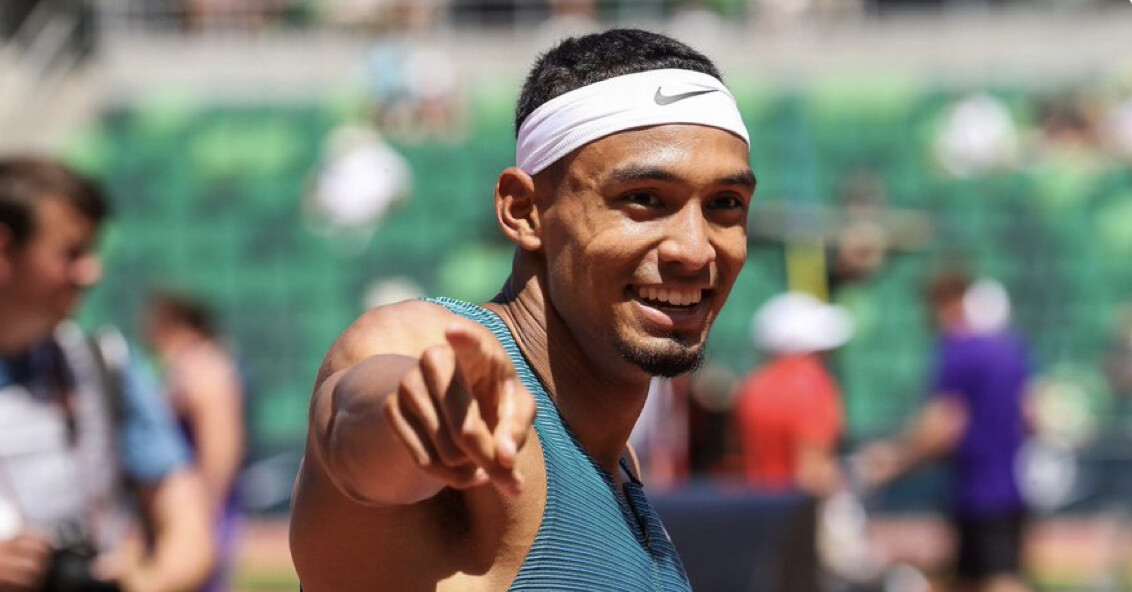
These complex rules lead many American World champions to make interesting choices about what events they wish to contest at USAs and how hard they want to push while still in the middle of the championship season.
MEN’S SPRINTS
– 100m world champion Fred Kerley has the bye to the world championships and will only run the 200m. Last year, he qualified for the World Championships in the 200m with a third place finish behind Noah Lyles and Erriyon Knighton. He injured his quad in the semifinal of the 200m and was unable to run the 4x100m relay for Team USA. Kerley has a season’s best of 19.92 from his win at the Doha Diamond League.
– 200m world champion Noah Lyles has the bye to the world championships and will only run the 100m. He ran a season's best of 9.95 in his outdoor opener in April. The last time he ran the 100m at a U.S. Championship, he finished seventh at the 2021 U.S. Olympic Trials final.
– 400m world champion Michael Norman is declared for the 100m and 200m at the U.S. Championships. He ran a wind-aided 10.02 (+3.0m/s wind) at the Mt. SAC Relays in April. He has not raced since a last place finish in the 200m at the Doha Diamond League in 20.65 on May 5.
WOMEN’S SPRINTS
– Sha’Carri Richardson is running the 100m and 200m. She is looking to qualify for her first World championship team. Her season’s best of 10.76 from her victory at the Doha Diamond League is the second-fastest performance in the world this year. Her season’s best of 22.07 from the Kip Keino Classic at altitude in Nairobi is No. 4 on the world list.
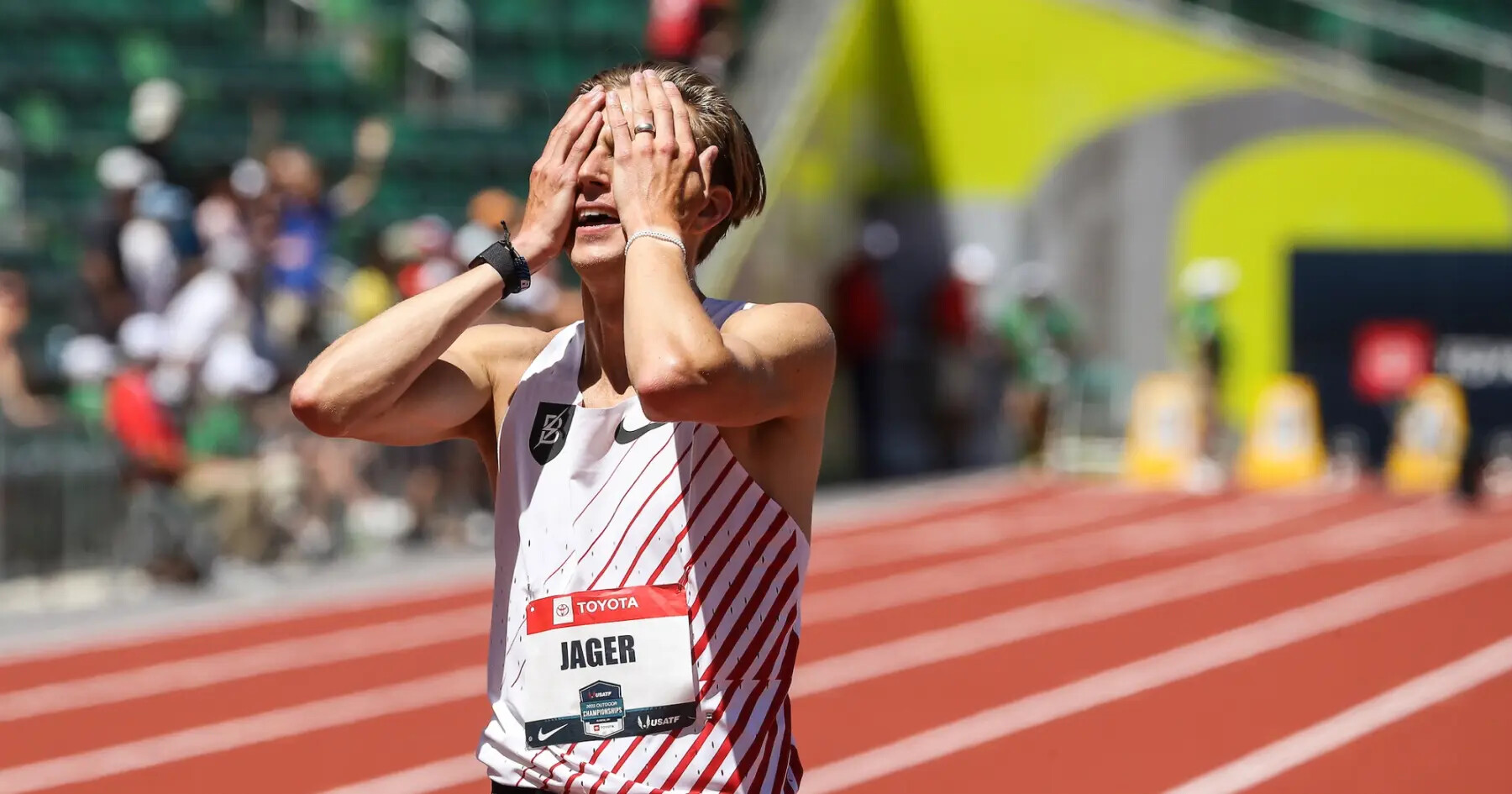
Only Gabby Thomas’ 22.05 from the Paris Diamond League is faster this year by an American woman. Richardson, the 2019 NCAA champion, attempted the double at USAs in both 2019 and 2022, where her highest finish was 8th in the 100m in 2019. She has yet to make a U.S. final in the 200m.
– Reigning U.S. champion Abby Steiner is only running the 200m despite qualifying in both the 100m and the 400m as well. She just ran her season’s best of 22.19 to win the NYC Grand Prix.
– As previously announced, 400m hurdles Olympic champion, World champion and world record holder Sydney McLaughlin-Levrone is running the flat 400m. She plans to make a decision after the U.S. Championships whether she will run the flat 400m (if she qualifies) or defend her 400m hurdles title in Budapest.
– NCAA record holder Britton Wilson, who ran 49.14 to become No. 4 on the U.S. all-time list, will only run the 400m and not the 400m hurdles. She hurdled at last year’s World championships and participated in the 4x400m relay.
MEN’S DISTANCE
– This year’s men’s steeplechase team should have a new look. 2016 Olympic silver medalist Evan Jager is not entered in the steeplechase. He has raced just once this outdoor season. Hillary Bor, the reigning U.S. champion who also owns the fastest steeplechase time by an American this year in 8:11.28, broke his foot earlier this spring and will miss the U.S. Championships. This is the first U.S. team he has missed since 2015. The top returner is Benard Keter, who made the Olympic team in 2021 and the World team in 2022, but he is only the fifth-fastest entrant by seed time.
– For the first time, 2021 U.S. 5000m champPaul Chelimo is entered in both the 5000m and the 10,000m. Chelimo, the 3x global medalist at 5000m, has typically only focused on the shorter event, but after his 27:12.73 performance at the Night of the 10,000m PBs in the U.K. earlier this season, he has decided to contest both events. He’s seeded No. 4 by qualifying time in both events behind Grant Fisher, Woody Kincaid, and Joe Klecker (all also double-entered).
WOMEN’S DISTANCE
– 800m Olympic and world champion Athing Mu entered the 1500m, as previously announced with coach Bobby Kersee. She has the bye to the world championships in the 800m. Her personal best of 4:16.06 is well outside the automatic standard of 4:05.00 and was achieved outside the qualifying window for the championships, but USATF rules allow for significant discretion in accepting entries from the Sports Committee chair.
– Josette Norris and On Athletics Club coach Dathan Ritzenhein have decided to focus solely on the 5000m. Norris ran 14:43.36 at Sound Running’s Track Fest in early May. That’s the second-fastest time by an American woman on the year behind her teammate and training partner Alicia Monson’s 14:34.88 at the Paris Diamond League. Monson is entered in both the 5000m and 10,000m after choosing to only contest the 10,000m last year.
– NC State’s NCAA record holder Katelyn Tuohy will only run the 5000m. Tuohy qualified for NCAAs in both the 1500m and the 5000m but ended up only running the 1500m after an uncharacteristically disappointing performance in the final.
– The Bowerman Track Club’s Elise Cranny has declared for the 1500m, 5000m and the 10,000m. The first round of the women’s 1500m is 19 minutes before the final of the 10,000m on Day 1 of the competition, so Cranny will likely scratch one or more events at a later point.
by Chris Chavez (Citius magazine)
Login to leave a comment
USATF Outdoor Championships
With an eye toward continuing the historic athletic success of 2022, USATF is pleased to announce competitive opportunities for its athletes to secure qualifying marks and prize money, including a new Grand Prix series, as they prepare for the 2023 World Athletics Championships in Budapest, Hungary.As announced a few months ago, the 2023 Indoor Championships in Nanjing, China have been...
more...Hellen Obiri: Boston Marathon winner on family sacrifice and quitting the track
As Hellen Obiri crossed the finish line to win this year's Boston Marathon, a few metres ahead was her daughter, Tania.
The double world champion was soon locked in an embrace with both her husband, Tom, and Tania as the family celebrated the surprise win in what was only her second marathon.
Speaking to BBC Sport Africa, Obiri found it all hard to describe.
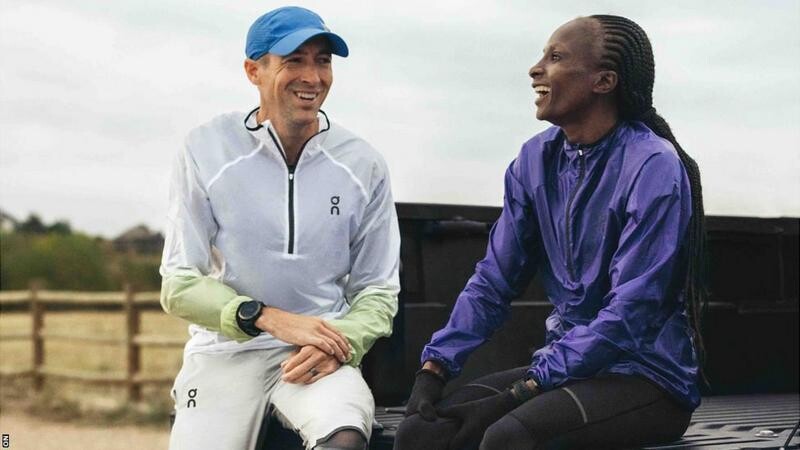
"That was one good moment for me, at the finish line seeing my daughter. I cannot even explain what I felt."
The rush of emotion, which left Obiri in tears, is understandable when placed in the context of her decision to uproot her family and move them from Kenya to the United States after she quit track running to target the marathon.
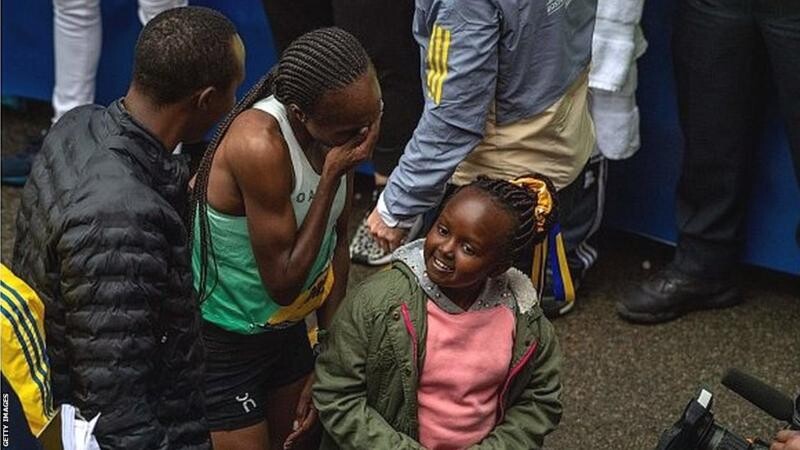
"When switching to the road, I felt I needed a coach on the ground with me in training," the 33-year-old explained.
"On track you can train without a coach present and do well, but with the marathon sometimes you need a coach to watch what you are doing."
The Obiris' new home is in the city of Boulder, Colorado. But her husband and daughter only arrived a few weeks before the race in Boston. For months before that Obiri had been on her own.
'Why am I here?'
Previously a 5000m specialist who claimed world titles over the distance in 2017 and 2019, the 2018 Commonwealth title and Olympic silver medals in 2016 and 2020, Obiri made her marathon debut in New York last November.
Two months prior she had moved to the US to join her coach, retired American athlete Dathan Ritzenhein.
At the time, it meant leaving Tania and Tom back in Kenya waiting on their visas.
"It was a challenge because you don't have a family in the US. Sometimes the time difference (for) calling is not good. Maybe when you call the child is sleeping," she said.
"The most important thing is the family understands what you are going there to do, because it's a short career. The family give me a lot of time, support and a lot of encouragement."
But the pain of separation sometimes led Obiri to question her decision.
"She (Tania) was always telling me 'Mommy, I want you to come now'. When she tells you, you feel like crying, you feel you don't have morale.
"Why am I here and my baby's crying there?"
Despite her best efforts to remain focussed, New York did not go as planned as poor race tactics saw her finish sixth on her marathon debut.
"I used to run from the front in track races. I thought even in a marathon I can run in front. That cost me a lot because in marathon you can't do all the work for 42 kilometres," she admitted.
"What I learned from New York is patience, just wait for the right time so you can make a move."
Obiri proved to be a fast learner. With her family now watching on, she won her second marathon, taking more than four minutes off her time in New York.
"When you have your family around you, that means you don't have stress.
"You don't need to think about anything else. You are thinking about your family and the race and when your family is there to watch you, they give you a lot of encouragement."
Rocking life in Boulder
With the family now settled in their Colorado home, Tom has enrolled as a student. But Obiri worries about how a seven-year-old Kenyan girl will adjust to life in a different country.
"The first week was terrible for her because she didn't have friends here, it's a new environment," she said, fretting as any mother would.
"(But) Tania is so friendly. So after one week and a half, she was coming and telling mum 'I have some friends, this one and this one...'"
Obiri also had concerns when it came to Tania enrolling in school.
"I was so worried. I wondered, how will the teachers treat her as she's from Africa?
"Maybe some schoolmates will think 'You are from Africa, we don't want to be your friends.'
"I used to ask after school, 'Who wasn't nice to you? Do they treat you well?' and she said 'No, I'm okay with my friends and my teachers'."
Olympic agenda
The 2019 world cross country champion says not all of her friends understood her decision to uproot her family, but Obiri blocks out the "negative talk" to focus on her athletic ambitions and is also now at peace with her family situation.
Her next big mission, away from the six World Marathon Majors - which are Boston, New York, Chicago, London, Berlin and Tokyo - is to try to complete her list of global titles, filling the one very obvious hole in her list of achievements.
"I will work hard to be in the Kenya (marathon) team for Paris 2024."
"I have won gold medals in World Championships so I'm looking for Olympic gold. It is the only medal missing in my career."
by Sports Africa
Login to leave a comment
Boston Marathon
Among the nation’s oldest athletic clubs, the B.A.A. was established in 1887, and, in 1896, more than half of the U.S. Olympic Team at the first modern games was composed of B.A.A. club members. The Olympic Games provided the inspiration for the first Boston Marathon, which culminated the B.A.A. Games on April 19, 1897. John J. McDermott emerged from a...
more...Eliud Kipchoge is human afterall
Eliud Kipchoge came to Boston seeking to add the world’s most storied annual marathon to his unrivaled trophy case. He will leave with a sixth-place result and questions about whether he can achieve two outstanding, unprecedented goals.
“I live for the moments where I get to challenge the limits,” was posted on Kipchoge’s social media four hours after he finished. “It’s never guaranteed, it’s never easy. Today was a tough day for me. I pushed myself as hard as I could but sometimes, we must accept that today wasn’t the day to push the barrier to a greater height.”
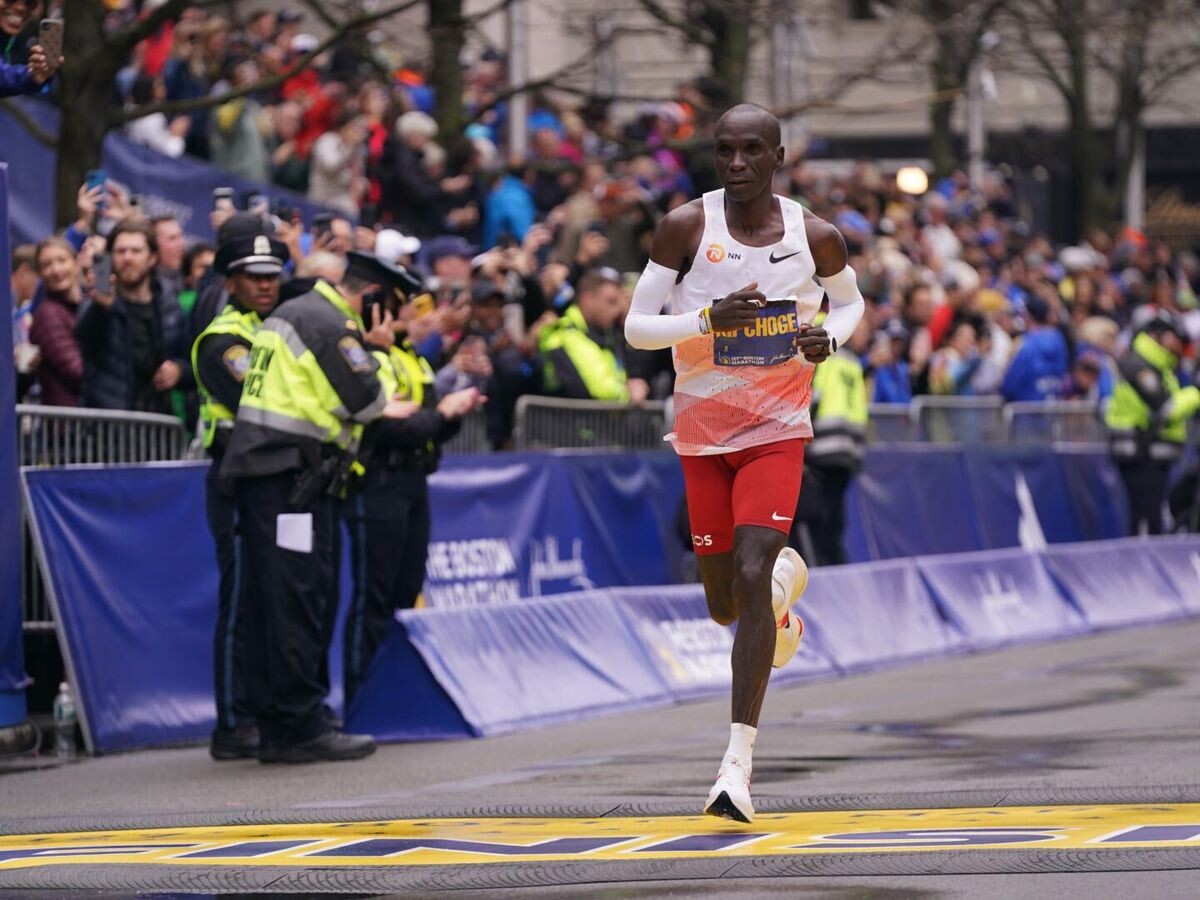
Kipchoge was dropped in the 19th mile in his Boston Marathon debut in the middle of the race’s famed hills. He finished 3 minutes, 29 seconds behind fellow Kenyan Evans Chebet, who clocked 2:05:54 and became the first male runner to repeat as Boston champion since 2008.
“I did not observe Kipchoge,” Chebet said of what happened, according to the Boston Athletic Association. “Eliud was not so much of a threat because the bottom line was that we trained well.”
It marked just Kipchoge’s third defeat in 18 career marathons, a decade-long career at 26.2 miles that’s included two world record-breaking runs and two Olympic gold medals.
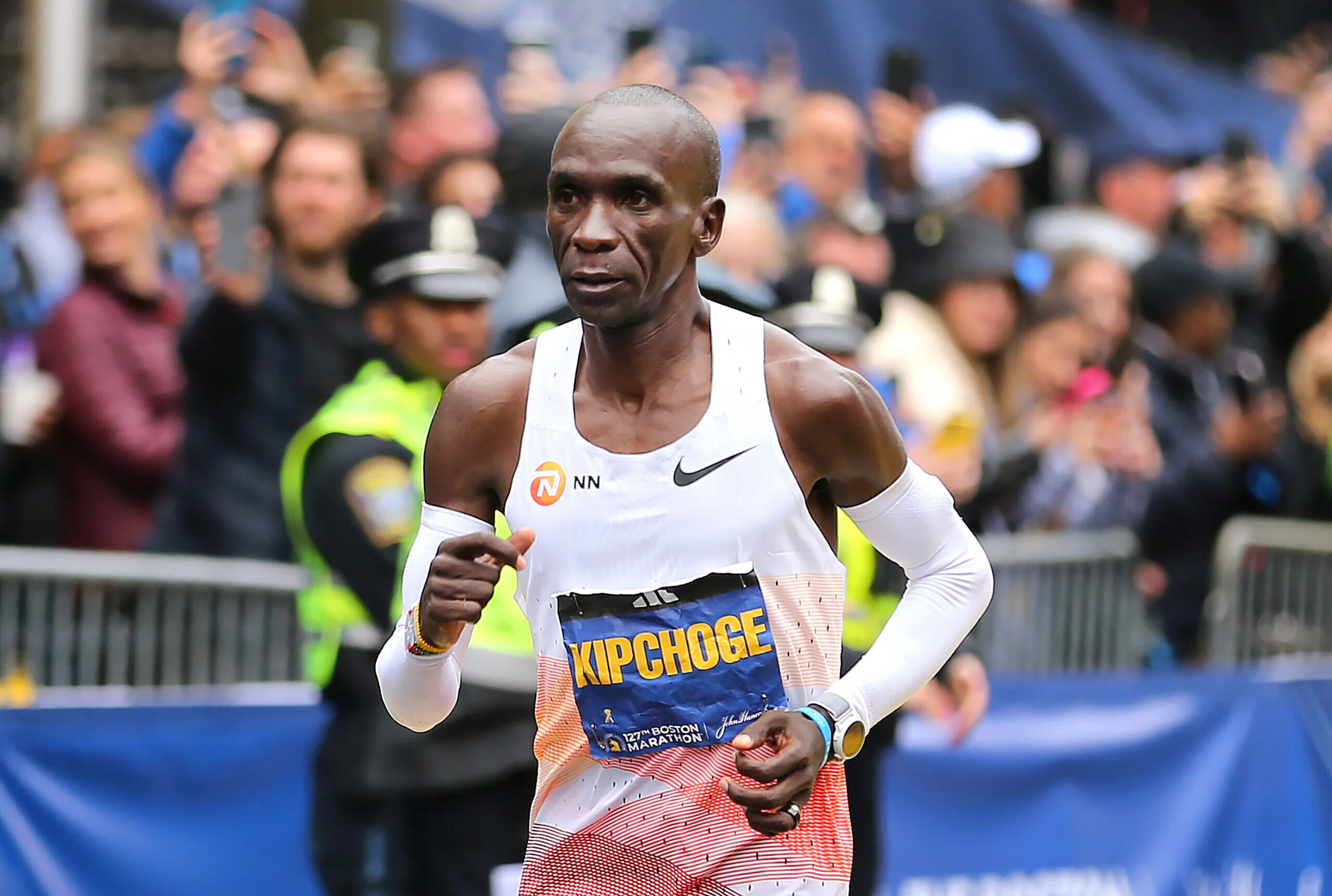
Kipchoge, 38, hopes next year to become the first person to win three Olympic marathons, but major doubt was thrown on that Monday, along with his goal to win all six annual World Marathon Majors. Kipchoge has won four of the six, just missing Boston and New York City, a November marathon that he has never raced.He skipped his traditional spring marathon plan of racing London to go for the win in Boston, the world’s oldest annual marathon dating to 1897.
Kipchoge has yet to speak to media, but may be asked whether a failed water bottle grab just before he lost contact with a leading pack of five contributed to his first defeat since he placed eighth at the 2020 London Marathon. Boston’s weather on Monday, rainy, was similar to London in 2020.
Kipchoge’s only other 26.2-mile loss was when he was runner-up at his second career marathon in Berlin in 2013.
He is expected to race two more marathons before the Paris Games. Kipchoge will be nearly 40 come Paris, more than one year older than the oldest Olympic champion in any running event, according to Olympedia.org. Kenya has yet to name its three-man Olympic marathon team.
“In sports you win and you lose and there is always tomorrow to set a new challenge,” was posted on Kipchoge’s social media. “Excited for what’s ahead.”
Kenyan Hellen Obiri won Monday’s women’s race in 2:21:38, pulling away from Ethiopian Amane Beriso in the last mile.
Obiri, a two-time world champion and two-time Olympic medalist in the 5000m on the track, made her marathon debut in New York City last November with a sixth-place finish. She was a late add to the Boston field three weeks ago after initially eschewing a spring marathon.
“I didn’t want to come here, because my heart was somewhere else,” said Obiri, who is coached in Colorado by three-time U.S. Olympian Dathan Ritzenhein. “But, my coach said I should try and go to Boston.”
Emma Bates was the top American in fifth in the second-fastest Boston time for an American woman ever, consolidating her status as a favorite to make the three-woman Olympic team at next February’s trials in Orlando. Emily Sisson and Keira D’Amato, who traded the American marathon record last year, didn’t enter Boston.
“I expected myself to be in the top five,” said the 30-year-old Bates, who feels she can challenge Sisson’s American record of 2:18:29, if and when she next races on a flat course.
The next major marathon is London on Sunday, headlined by women’s world record holder Brigid Kosgei of Kenya, Tokyo Olympic champion Peres Jepchirchir of Kenya and Olympic 5000m and 10,000m champion Sifan Hassan of the Netherlands in her 26.2-mile debut.
by Olympic Talk
Login to leave a comment
Boston Marathon
Among the nation’s oldest athletic clubs, the B.A.A. was established in 1887, and, in 1896, more than half of the U.S. Olympic Team at the first modern games was composed of B.A.A. club members. The Olympic Games provided the inspiration for the first Boston Marathon, which culminated the B.A.A. Games on April 19, 1897. John J. McDermott emerged from a...
more...Two-time Olympic medalist Hellen Obiri joins Boston Marathon elite list
On Wednesday, Hellen Obiri, a two-time Olympic medalist from Kenya, was announced as a late addition to the women’s elite field at the 2023 Boston Marathon on April 17, joining an already star-studded field featuring world championship and Olympic medalists.
This will be the second marathon of Obiri’s 12-year professional career. Her debut came last fall in New York, where she finished sixth in 2:25:49.
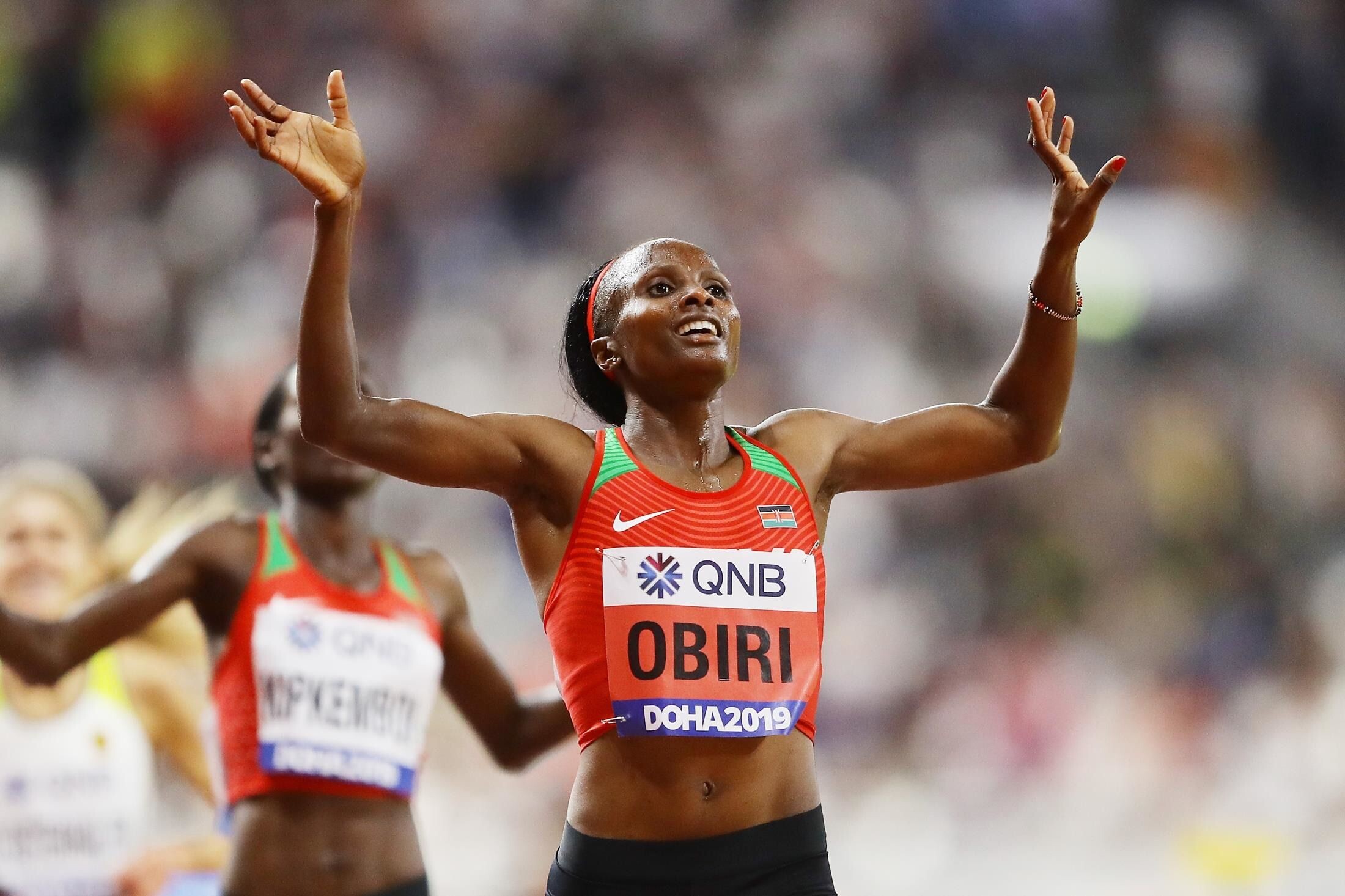
Last fall, Obiri moved from Kenya to Boulder, Colo., joining forces with coach Dathan Ritzenhein and On Athletics Club. She started her 2023 season with a bang, winning UAE’s RAK Half Marathon in February in 65:05 and setting a course record of 67:21 at the NYC Half two weeks ago. Obiri owns the fifth-fastest half-marathon result in history, with a personal best of 1:04:22 from February 2022.
This past week, Obiri made headlines on Strava as she did a 25-mile long run at 2:25 marathon pace with her OAC training partner Joe Klecker of the U.S. (who posted the run). According to Klecker’s Strava caption, Obiri hit 40K in 2:18 (even with a 7:14 first mile).
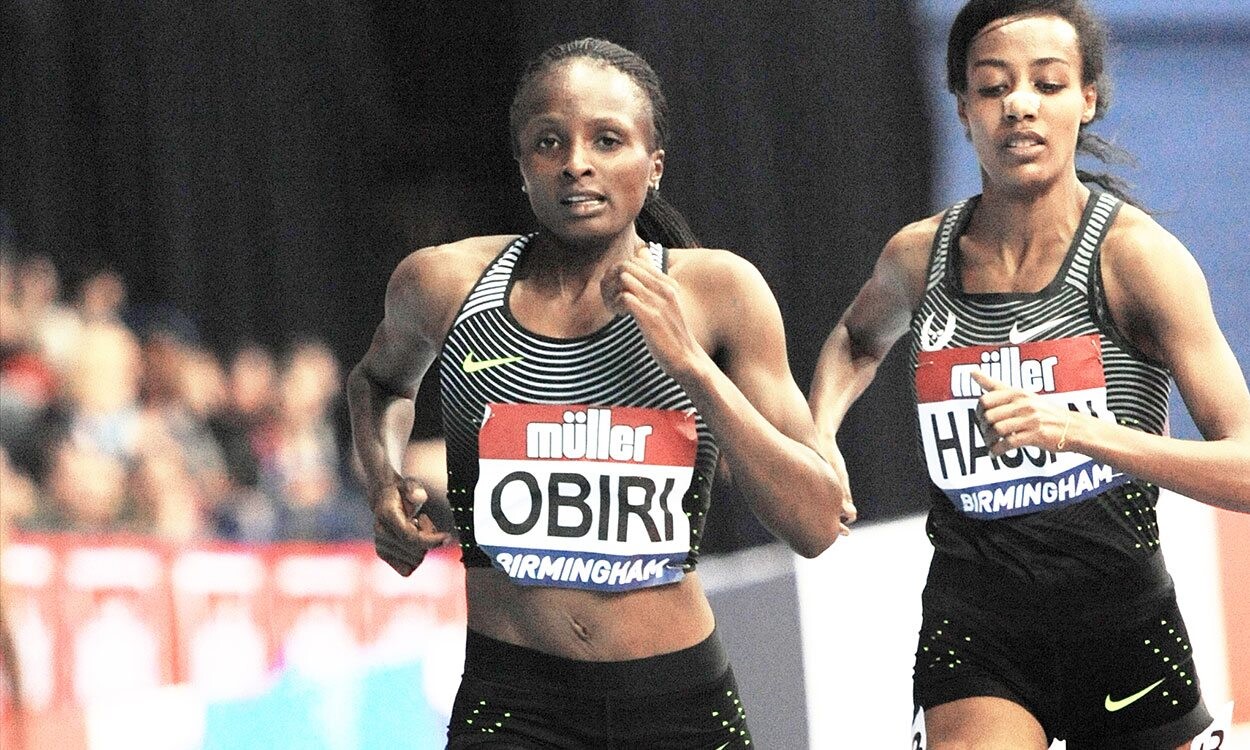
Obiri’s winning streak has indicated that she’s in great shape and now comes into Boston as one of the favourites in the women’s elite field. She will be challenged by 2022 world marathon champion Gotytom Gebreslase, 2020 Tokyo Marathon champion Lonah Salpeter and the woman who beat Obiri last fall in NYC, Sharon Lokedi.
We are less than three weeks away from the 127th Boston Marathon.
by Running Magazine
Login to leave a comment
Boston Marathon
Among the nation’s oldest athletic clubs, the B.A.A. was established in 1887, and, in 1896, more than half of the U.S. Olympic Team at the first modern games was composed of B.A.A. club members. The Olympic Games provided the inspiration for the first Boston Marathon, which culminated the B.A.A. Games on April 19, 1897. John J. McDermott emerged from a...
more...Here's Why It Feels Like Every Elite Runner Is Changing Sponsors Right Now
Tim Tollefson celebrated the new year shoveling a lot of snow, dreaming about a summer of possibility, and changing his shoes.
After six years with Hoka, Tollefson, 37, the well-known elite American ultrarunner from Mammoth Lakes, California, signed a new multi-year sponsorship deal with Craft. It might seem like a curious move this time of the year, but, in reality, most athlete sponsorship contracts in running are one-year partnerships that end on December 31. That typically gives brands the upper hand in these situations because they can have an easy out whenever an athlete doesn't have a great year of results, or they no longer fit with their marketing goals. It always comes down to the money, though sometimes it's in the athlete's best interests to start fresh, to leverage their recent results and social media platform to find a better deal with a brand that better fits their racing goals.
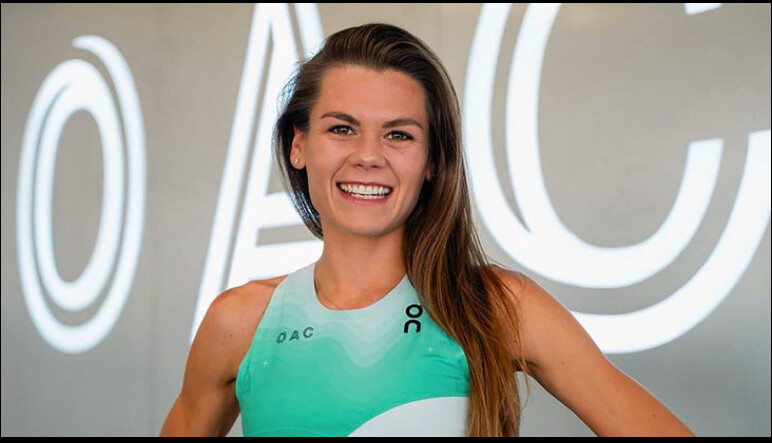

Because there are more brands partnering runners than ever before, and presumably more sponsorship money available, top-tier distance runners who are still at the top of their game-like Tim Tollefson, Allie McLaughlin, Josette Norris, Paige Stoner, David Ribich, Dani Moreno, Erin Clark, Natosha Rogers, Colin Bennie, Dillon Maggard, Camille Herron, and others-have been able to seek out new opportunities to continue their careers with the necessary support.
The terms of the newly signed deals haven't been disclosed, but there is a huge range in pay for professional distance runners-roughly $15,000 on the low end for a partially sponsored trail runner without significant international results, to $300,000 at the high end for a top-tier marathoner with Marathon Majors podium results. Certainly that means some live a life of luxury, while others are forced to work part-time jobs and pinch pennies to get by.
But there are also often signing bonuses, as well as premiums paid for earning appearance fees, major victories, global medals, podium finishes, breaking records, and other incentives, so running faster can be a fast track to a boost in income. However, most athletes are considered independent contractors, and many have to pay for their own healthcare, body work, and travel, depending on the details of their brand partnership.
"You start getting an idea of who's going to be available, for one reason or other, in the last few months of the year, and that's when brands and athletes start talking," said Mike McManus, Hoka's global sports marketing director. "As an athlete, you're as valuable as whatever money anyone wants to give you, but it's a process and all about negotiating. Sometimes you can match the money being offered; sometimes it just doesn't make sense for the partnership."
What Tollefson liked about Craft was similar to what he liked about Hoka six years ago-an upstart brand ready to make an impact in trail racing, its new line of trail shoes, and the trail community overall. Craft sees Tollefson as a runner with name recognition and several significant race wins in the past three years, not to mention a leader in the sport who started the Mammoth Trail Fest last year.
"This [new partnership with Craft] has reignited my deep passion for the sport and has reminded me of the things I want to accomplish," he said. "It's almost like a start-up situation led by passionate people who are excited to make an impact and want to support the people who are along for the journey. Curiosity drives me and I like a challenge. I know I am going to have some lifetime achievements ahead."
More Big Moves in Trail and Ultra
After an extraordinary year of racing on the trails, Allie McLaughlin changed from On to Hoka as her primary sponsor. The charismatic 32-year-old from Colorado Springs won the daunting Mount Marathon race in Alaska, placed among the top five in several Golden Trail Series races, and won both gold and bronze medals in the inaugural World Mountain and Trail Running World Championships in Thailand. She'll be representing the U.S. in this year's World Championships in Austria, in June, while also returning to the OCC 54K race, as part of the Ultra-Trail du Mont-Blanc (UTMB) festival in Chamonix, in August.
"It was really interesting to see how much trail means to them [Hoka], not only with their sponsorship of UTMB, but in general how they're helping push the sport forward," said McLaughlin, who had been with On since 2021. "There are a lot of reasons I like what Hoka is doing, but ultimately, the emphasis they're putting on the team and their athletes is really exciting."
Other trail and ultrarunners who have switched brands include Erin Clark, who finished 7th at last year's CCC, who left Hoka to sign with Nike, even though her partner, Adam Peterman, the 2022 Western States 100 champion and ultrarunning world champion, re-signed with Hoka.
Spanish trail runner Sara Alonso has changed from Salomon to ASICS, while Craft also signed Arlen Glick, a prolific 100-mile specialist from Ohio, and Mimmi Kotka, a Swedish runner with numerous podium finishes in Europe, to its team. Meanwhile, previously unsponsored American trail runners Tabor Hemming (Salomon) and Dan Curts (Brooks) are among those who have signed new deals.
Meanwhile, Dani Moreno, a world-class mountain runner from Mammoth Lakes, California, and Camille Herron, a record-setting ultrarunner from Warr Acres, Oklahoma, are both also leaving Hoka for yet-to-be-announced brands that offered better deals.
Bigger Transitions for Road and Track Runners
For track athletes and marathon runners, a change of shoe brands is often a more involved change, mostly because it often means changing training groups and coaches, too.
For example, Josette Norris, the fifth-place finisher in the 1,500m at the 2022 World Athletics Indoor Championships, not only switched from Reebok to On, but she left Reebok's Virginia-based Boston Track Club, and coach Chris Fox, and moved west to Boulder, Colorado, to join the On Athletics Club under Dathan Ritzenhein.
Similarly, David Ribich, one of the best American mile runners on the track last year, switched from the Seattle-based Brooks Beasts track club to the Nike-backed Union Athletics Club under Pete Julian.
Colin Bennie, the top American finisher in the Boston Marathon in 2021-previously with Reebok but unsponsored last year-signed with the Brooks Beasts but will be training on his own in San Francisco. Dillon Maggard, who was second at the U.S. cross country championships and ninth in 3,000m at the indoor world championships in 2022, is returning to Seattle to train with the Brooks Beasts, after being unsponsored last year. Natosha Rogers, who was a finalist in the 10,000m at last summer's World Athletics Championships in Eugene, Oregon, has changed from Brooks to Puma, but will continue to train on her own in Colorado. Middle-distance runner Cruz Culpepper, after short stints at the University of Washington and the University of Mississippi, gave up his remaining college eligibility to sign with Hoka and its NAZ Elite (NAZ) team.
Last summer, Paige Stoner left the Virginia-based Reebok group and Fox, her longtime coach, to train in Flagstaff, Arizona, partially because she didn't have other marathoners to train with on a regular basis in Charlottesville. She increased her volume last fall training with Sarah Pagano and Emily Durgin and won the U.S. championship at the California International Marathon in December with a course record of 2:26:02, her debut at the distance.
In January, Stoner parlayed that into a new deal with Hoka, as she also joined the Flagstaff-based Northern Arizona Elite and will be training with a group of strong marathoners-including Aliphine Tuliamuk, Alice Wright, Kellyn Taylor, and the recently unretired Stephanie Bruce-under the guidance of coaches Alan Culpepper, Ben Rosario, and Jenna Wreiden.
"I was especially drawn to NAZ because they have proven to be a powerhouse in the marathon, which will likely be my primary focus in the years to come," Stoner said. "I believe the team has all of the tools it takes to compete at the highest level in the sport, and I am eager to begin this new chapter."
Learning the Ropes
For track and road running, the path to success for elite-level, post-collegiate athletes typically includes earning a sponsorship right after the track season in June and joining a sponsored training group and coach. From there, it's all about improving times and placing high in U.S. championship races, with hopes of becoming fast enough to earn a spot in elite track meets in Europe or one of the World Marathon Majors.
But most road and track runners have agents to help smooth out those transitions, whereas most trail runners do not. Plus, trail running is considerably more unstructured, with a greater range of race distances and a lot more unknown variables. That means the challenge of figuring out what opportunities exist on the trails-what races to run, how to train on trails, what gear is needed, how to race considerably longer distances, and how to attract sponsors-often requires them to learn on the fly.
Those are all reasons professional trail runner Andy Wacker recently formed The Trail Team, a non-profit organization that will help guide young runners along the path becoming successful, potentially sponsored trail runners, while also playing a role in boosting the level of competitive trail running in the U.S.
The Trail Team put out a call for candidates to become one of six inaugural team members in 2023. Once selected this spring, those athletes will go through a training camp, receive a stipend, get continued mentorship from Wacker, McLaughlin, Adam Peterman, and Grayson Murphy, and prepare for a variety of U.S. races.
"I've reached out to a lot of young athletes and the main thing I found is they need a mentor," said Wacker, a Salomon-sponsored athlete. "They don't necessarily need a coach-a lot of them have a college coach that they might continue working with-but they need someone who is going to help them with all of their questions and translate everything to trail running.
"It's still really hard to be an individually sponsored athlete, and I think it's hard for a young athlete to get recognition and build their brand, so we're hoping to help with that," he added. "There are more participants and more excitement than ever in trail running, but there are also growing pains. So there are a lot of ways we think we can help so they don't have to figure it out on their own."
Like Wacker, Tollefson is one of those athletes who did have to figure it out on his own. He was a good runner in high school and college, but he never qualified for the state meet and never earned All-American honors. But, with a relentless work ethic, he's become one of the most successful American trail runners of the past decade, having placed second at the CCC 100K in Chamonix, in 2015, and twice placed third in the Ultra-Trail du Mont-Blanc 171K in 2016 and 2017.
Although his personal race plans aren't finalized yet, those deals are allowing him to step away from his career as a physical therapist and become fully immersed in running for the first time in his career.
"All of us athletes are multidimensional; we're more than just a pretty face rocking a bib," Tollefson said. "Everyone has a unique story. I think there are more brands interested in telling those stories, and Craft is definitely one of them. Some people have written me off, but I'm confident my best races are ahead of me. Craft believes in me, and I feel like I need that belief to get the best out of myself."
by Trail Runner Magazine
Login to leave a comment
Hellen Obiri Wants To Win NYC In Her Marathon Debut
After earning a silver medal in the 10,000 meters at the World Athletics Championships in Eugene, Oregon, in July, Hellen Obiri was already looking toward the next big thing: making her 26.2-mile debut at the 2022 New York City Marathon.
Racing in New York was always her main goal for 2022, even though she made a late decision to compete on the track at the world championships. Immediately after her September 11 win at the Great North Run in northeast England, Obiri finally made her long-planned move from Ngong, Kenya to Boulder, Colorado, to start training with the On Athletics Club under three-time Olympian and coach Dathan Ritzenhein.
Obiri’s agent and former coach, Ricky Simms, worked with Ritzenhein to plan out her training for the Great North Run and the New York City Marathon as she made the move, and although she’s only been training in her new environment for nearly two months, she has proven to be adjusting nicely to the transition.
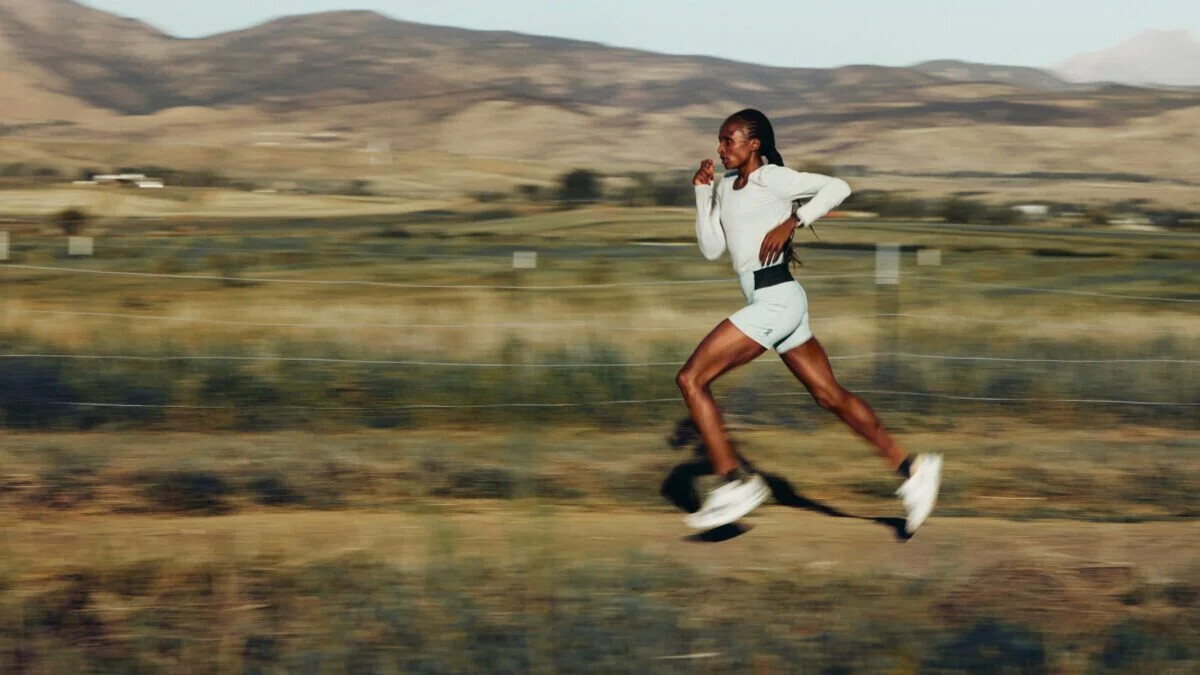
“Everyone has been very welcoming and the training environment is perfect; training is very similar to Kenya,” Obiri says. “I think it will be a good place for my daughter to grow up. The biggest challenge has been being away from my family, as I am missing them a lot. They have not been able to come as they do not yet have U.S. visas.”
So far, due to most of her teammates having been on vacation after the track season, Obiri, 32, has mainly trained with Ritzenhein, who either accompanies her on her training runs or leads her on a bike, and fellow countrywoman Edna Kiplagat, a two-time marathon world champion who has been living in Boulder for a decade and who will also be racing in New York.
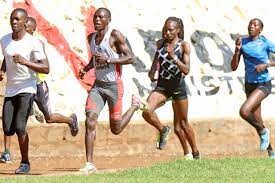
“Every day, I show up and wonder how Hellen is going to amaze me that day–she is completely dialed for New York,” Ritzenhein says. “We’ve spent a lot of early mornings out there, and it’s been a great couple months of getting to know each other and trusting in this new process. It’s really amazing to me how talented and focused she is.”
A Multifaceted Athlete
Obiri is one of the only women to have won world championships in outdoor track, indoor track and cross country. Among the 11 global championship medals she’s earned, she owns two world championship gold medals in the 5,000m (2017, 2019), another from the 3,000 at the 2012 indoor world championships and one more from the 2019 world cross country championships.
But the marathon has always been waiting in the wings. Given her speed, endurance and championship pedigree, Obiri seems to have the right qualities to be ever better over the longer distance, Ritzenhein says. After several weeks training in the U.S., he’s confident the challenging terrain Obiri has gotten used to in Kenya and now the rolling dirt roads north of Boulder will translate well to New York’s undulating course.
“Coming off the world championships this summer, we knew Hellen still had the wheels. But it had been a big increase in total running volume but also the volume and intensity of the long runs and workouts,” Ritzenhein says. “We tried to do some quality sessions on hilly terrain that mimics the course, and she has handled it all very well. I am very confident she will handle the course.”
Ritzenhein noted that Obiri will also likely eventually serve as a guide for fellow 10,000-meter runner Alicia Monson, who will likely make the move to the marathon within the next few years. The 24-year-old third-year pro placed 13th in the 10,000 at both the Olympics in 2021 and the World Athletics Championships in 2022.
“[Monson’s] track times are getting close, so hopefully the training with Hellen will be a bridge to her career on the roads in years,” Ritzenhein says. “Now that the team is back, [Obiri] will do some of the easy morning runs with them, but her workouts are still so much bigger than where they are in training.”
The Marathon Distance Beckons
After her solid 1:07:05 half marathon at the Great North Run, it’s no surprise that Obiri is exuding confidence as she approaches what’s expected to be a highly competitive field for her first go at the marathon distance. It was her fifth time competing in the half-marathon distance, which she says she has grown very comfortable with. In February, she finished second in a half marathon in the United Arab Emirates in 1:04:22, which remains the No. 2 time in the world this year.
“I aim to win [in New York]—the time doesn’t matter,” Obiri says.
Obiri is one of the only women to have won world championships in outdoor track, indoor track and cross country. Among the 11 global championship medals she’s earned, she owns two world championship gold medals in the 5,000m (2017, 2019), another from the 3,000 at the 2012 indoor world championships and one more from the 2019 world cross country championships.
But the marathon has always been waiting in the wings. Given her speed, endurance and championship pedigree, Obiri seems to have the right qualities to be ever better over the longer distance.
“With Peres [Jepchirchir, the reigning 2020 Olympic and 2021 New York City Marathon champion] now out of the race, it definitely changes the landscape a little,” Ritzenhein adds. “But with multiple world championship medalists and last year’s podium finishers, it’s still such a strong field. The marathon debut should always be cautious early on, but there isn’t anything that I think [Obiri] can’t handle.”
Obiri was also eager to share her thoughts on transitioning from training and racing in shoes from Nike, her former sponsor, to the On Cloudboom Echo 3.
“The fact that I was able to transition seamlessly to the new racing shoes and feel very comfortable in them is credit to the designers and team at On,” she says. “I hope I can give them more podium finishes.”
Looking ahead after New York, Obiri plans to continue to focus on road racing in 2023, though she may still jump into some track races if she feels as though she can remain competitive. After the marathon, she’ll wind down with a return to Kenya for the holidays, followed by some winter cross country running before jumping back for marathon training for a to-be-decided spring race, Ritzenhein says.
“[Obiri] could honestly train with the men’s team for much of the long training,” he says. “She’s doing things which are really incredible, and it’s inspiring for them and me to see.”
As with many elite long-distance runners, Obiri is unsurprisingly also looking ahead to the 2024 Paris Olympics as she plans out her future schedule and sets goals for future accolades.
“I have already won the world championships, world cross country championships, world indoor championships, Commonwealth Games and African Championships,” she says. “But I only have silver medals from the Olympics, and I would love an Olympic Games gold.”
by Emilia Benton
Login to leave a comment
TCS New York City Marathon
The first New York City Marathon, organized in 1970 by Fred Lebow and Vince Chiappetta, was held entirely in Central Park. Of 127 entrants, only 55 men finished; the sole female entrant dropped out due to illness. Winners were given inexpensive wristwatches and recycled baseball and bowling trophies. The entry fee was $1 and the total event budget...
more...Kenya's Hellen Obiri to train in US for New York Marathon
World 10,000 meters silver medalist Hellen Obiri plans to travel to America ahead of time before making her debut in New York Marathon race on November 6.
In an interview with Nation Sport, the double 5,000m world champion said that she will be heading to Colorado, USA to acclimatize.

Obiri said that she will be depending on her new coach Dathan Ritzenhein, who heads On Athletics Club, for guidance.
Ritzenhein is a former athlete who has previously competed in the New York Marathon.
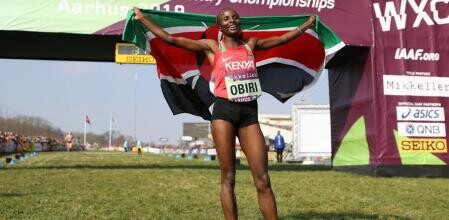
Obiri, who has plans to relocate to the US, said that she is not moving yet.
“There is still some paperwork that I’m working on before finalizing my move to the US. But, I will be going to Colorado for training because I want to acclimatize before the race. I look forward to a good race, but the most important thing for me is to learn,” she said.
The World Athletics Cross Country Championships title holder, who has been training in Ngong, Kajiado County, said that when she stepped up to marathon racing, it was not easy because the training is different.
“Marathon training is different from what I was used to while competing in track races. At fast it was tricky, but I persevered and I am now used to it,” she said.
The Olympic 5,000m silver medalist said that she was inspired to switch to marathon by two-time world marathon champion Edna Kiplagat.
“I was really inspired by Edna Kiplagat who has been doing well for long and is still competing. I have interacted with her, and when I learned that she was part of the elite field at New York Marathon, I felt encouraged that she will be racing with me,” said Obiri.
“Before the competition, I look forward to train with Edna in the US.”
The Istanbul Half Marathon champion said that she took a leap of faith to compete in full marathon after performing well in half marathon races.
Obiri clocked 64:38 to win this year’s Istanbul Half Marathon after having triumphed in the same race last year in 64:51.
The former 5,000m African champion has had a good season which climaxed in her winning a 10,000m silver medal at the World Athletics Championships in Oregon, USA on July 16.
In New York, Obiri will be up against defending champion and Olympic marathon champion Peres Jepchirchir, Edna, debutante Sharon Lokedi, Caroline Rotich and US-based Viola Lagat, who was second last year.
Other top names in the race are newly crowned world champion Ethiopian Gotytom Gebreslase and her compatriot Senbere Teferi, world bronze medalist Israel’s Lorna Chemtai Salpeter, USA’s Sara Hall and Aliphine Tuliamuk.
by Bernard Rotich
Login to leave a comment
TCS New York City Marathon
The first New York City Marathon, organized in 1970 by Fred Lebow and Vince Chiappetta, was held entirely in Central Park. Of 127 entrants, only 55 men finished; the sole female entrant dropped out due to illness. Winners were given inexpensive wristwatches and recycled baseball and bowling trophies. The entry fee was $1 and the total event budget...
more...World Championships Medalists Gotytom Gebreslase, Lonah Chemtai Salpeter, and Hellen Obiri to Join Women’s Field at 2022 TCS New York
Sara Hall, Emma Bates, Aliphine Tuliamuk, Des Linden, Nell Rojas, and Stephanie Bruce to anchor star-studded contingent of American women.
World Championships medalists Gotytom Gebreslase of Ethiopia, Lonah Chemtai Salpeter of Israel, and Hellen Obiri of Kenya will join previously announced New York City and Olympic champion Peres Jepchirchir in the women’s professional athlete division at this year’s TCS New York City Marathon on Sunday November 6. All three will make their TCS New York City Marathon debuts, with Obiri making her 26.2-mile debut across any course, and will line up against a star-studded contingent of American women that includes Sara Hall, Emma Bates, Aliphine Tuliamuk, Des Linden, Nell Rojas, and Stephanie Bruce. The 2022 TCS New York City Marathon women’s professional athlete field is presented by Mastercard®.
Women’s Open Division
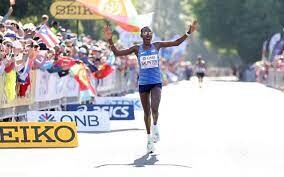
Fresh off her victory at the world championships marathon, where she finished the course in a championship-record time of 2:18:11, Gebreslase will make New York City her next stop. She will look to add a five-borough title to her resume, having previously won the 2021 Berlin Marathon and finished third at the 2022 Tokyo Marathon.
“Winning the World Championships was like a dream, and I am honored to run my next marathon in New York City,” Gebreslase said. “It’s home to the biggest marathon in the world, and many of the top athletes have run there. I understand it’s a challenging course, and I’m looking forward to seeing further success there.”
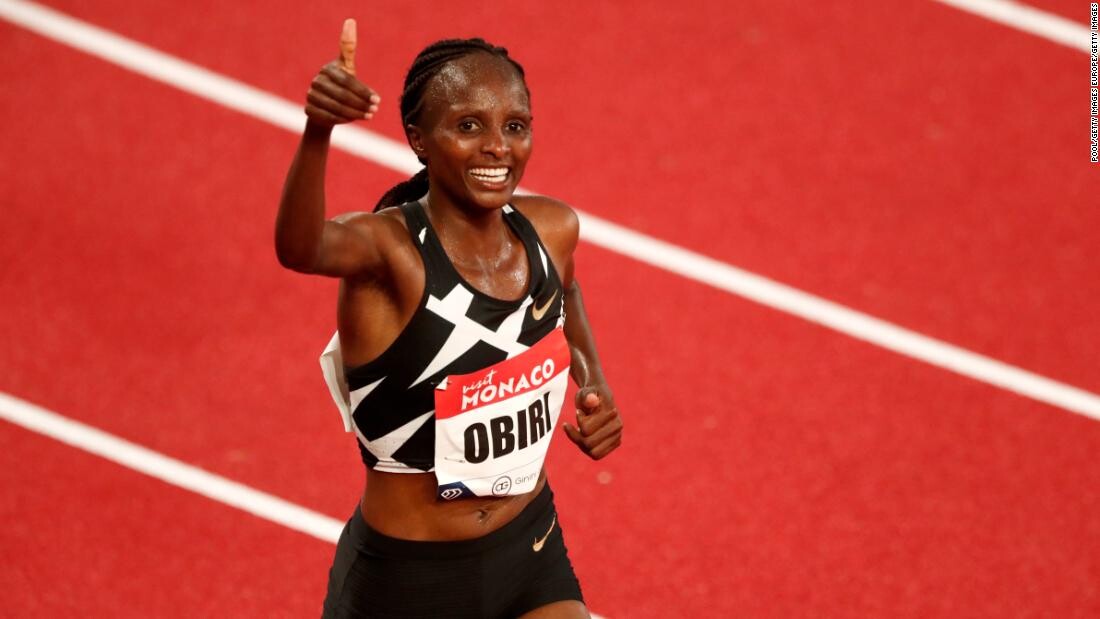
Two-time Olympian Salpeter, a Kenyan-born Israeli who won the bronze medal at the world championships marathon and was the 2020 Tokyo Marathon winner, will challenge Gebreslase once again. Obiri, a two-time Olympic medalist and seven-time individual world championships medalist, will make her highly anticipated marathon debut shortly after winning a world championships silver over 10,000 meters.
“I’m very excited to make my marathon debut at the TCS New York City Marathon,” Obiri said. “I have watched the race many times on TV and have seen my Kenyan colleagues compete there. I know New York is a tough course, but I hope my experience on track, road, and cross-country will help me navigate the ups and downs. I also plan to get advice and tips from coach Dathan Ritzenhein, who competed in the race several times in the past.”
In addition to Jepchirchir, the group will be racing against Ethiopia’s Senbere Teferi, who will look to become the first athlete to win the United Airlines NYC Half, Mastercard New York Mini 10K, and TCS New York City Marathon in one year. Three other Kenyans will also be strong contenders for podium places, including the 2010 New York City, 2014 London and 2017 Boston Marathon champion Edna Kiplagat, last year’s runner-up Viola Cheptoo, and newcomer Sharon Lokedi.
The American effort will be led by 10-time national champion Hall, who was the top world championships marathon finisher from the U.S. last month in Oregon, where she placed fifth. She is also the former half marathon national record holder, the runner-up from the 2020 London Marathon, and a two-time winner of the Mastercard New York Mini 10K. She will be joined at the Staten Island start line by Bates, who clocked a personal best to finish seventh at the world championships and was the runner-up at last year’s Chicago Marathon.
“From winning the Millrose mile to back-to-back Mini 10K wins, most of my favorite career moments have happened in NYC,” Hall said. “I’m all-in to add to that by having my best marathon yet at the TCS New York City Marathon. I can’t wait to be back racing my heart out in the five boroughs of my favorite city.”
Tokyo 2020 Olympian Aliphine Tuliamuk, and two-time Olympian and 2018 Boston Marathon champion Des Linden, will also return to New York, as will national champion Stephanie Bruce, who will race the five boroughs for the final time before retiring. The deep U.S. women’s group will additionally include Nell Rojas, the top American finisher from the last two Boston Marathons, Lindsay Flanagan, the top American finisher from the 2022 United Airlines NYC Half, Annie Frisbie, last year’s seventh-place finisher, and her training partner Dakotah Lindwurm, who won Grandma’s Marathon in June. Emily Durgin, the sixth-fastest U.S. half marathoner of all-time, will make her marathon debut.
by Running USA
Login to leave a comment
TCS New York City Marathon
The first New York City Marathon, organized in 1970 by Fred Lebow and Vince Chiappetta, was held entirely in Central Park. Of 127 entrants, only 55 men finished; the sole female entrant dropped out due to illness. Winners were given inexpensive wristwatches and recycled baseball and bowling trophies. The entry fee was $1 and the total event budget...
more...Kenya’s Hellen Obiri is moving to Colorado to pursue her marathon ambitions
When Hellen Obiri moves 14,000 kilometers from Kenya to Colorado later this year, she already knows she'll miss some of the comforts of home.
That includes Kenyan food and the country's staple of ugali -- a dense porridge made from maize flour.
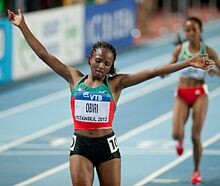
"Kenyans, we like eating ugali," Obiri tells CNN Sport. "I will have to find where I'm going to make my Kenyan food over there (in the United States)."
A good ugali may hold the keys to successfully fueling the next steps of her distance-running career. Obiri, a two-time world champion over 5,000 meters, is racing her first ever marathon in New York later this year, ahead of which she will team up with a new coach and new training group in Boulder, Colorado.
It's common for distance runners to make the move from track to road racing towards the end of their careers, but less common to do so by moving halfway across the world in the way Obiri has planned.
At the start of this year, the 32-year-old joined On Athletics Club (OAC), an elite team based in Boulder and led by former distance runner Dathan Ritzenhein. She hopes to move to the US next month in advance of racing the New York City Marathon on November 6.
"We've been wanting to move to the USA for training and to live there, so for me it's not a difficult move," Obiri, who will be based outside Kenya for the first time in her career, tells CNN.
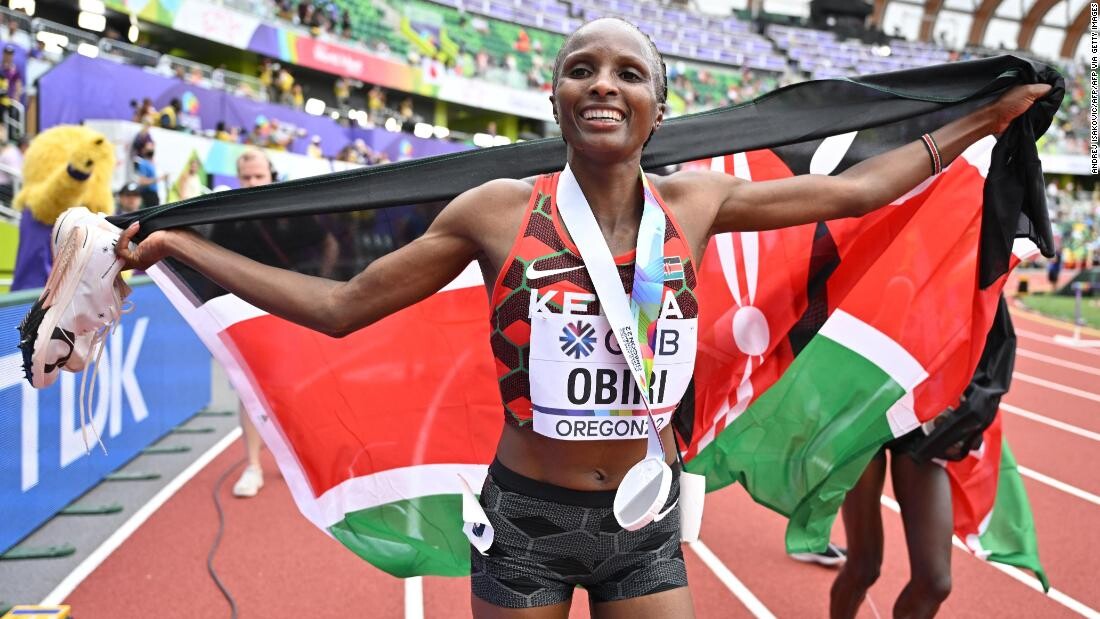
"I think as an athlete and for my family, I want to move there to acclimatize well as soon as possible ... It will take me two weeks at least to get used to it and catch up with my training.
Boulder's high-altitude, rolling trails and temperate climate make it an ideal location for distance runners. There, Obiri will join a relatively new team in OAC, which was launched by the Swiss sportswear brand On in 2020.
Under Ritzenhein's guidance, Obiri has already started her marathon program and this week increases her training load from 180 to 200 kilometers of running per week. She begins the next chapter in her career having established herself as one of the best 5,000 and 10,000-meter runners in the world over the past five years.
Just last month, she won a silver medal in the 10,000m at the World Athletics Championships -- clocking a personal best of 30 minutes and 10 seconds -- and has won 5,000m silver medals at the past two Olympic Games to go alongside her two world titles in the event.
'It showed me how strong our bodies can be,' says amputee athlete Jacky Hunt-Broersma after running 104 marathons in 104 days
Her debut in New York will be the first indicator of how Obiri's track-running pedigree translates over the 26.2 miles of the marathon.
"I can't say I'm going to target this time or this time -- it's my debut," she says. "I can't say maybe I want to do sub 2:20, 2:25 because I know the New York Marathon is a tough course, especially the second half."
Starting on Staten Island, the challenging course undulates through New York's five boroughs before finishing down Fifth Avenue and into Central Park.
"For me, I want to train well because it's my debut, and for sure, I'm looking forward to running a good race -- I'm looking forward to running my own race with no pressure and to finish well," Obiri adds.
She says she will miss racing her favorite distance of 5,000m but won't fully hang up her track spikes with the switch to marathon running.
"You can't move up to the marathon without speed," Obiri explains, adding that she hopes to stay sharp by competing in 5,000m races in Kenya next year.
The immediate focus, however, is on getting settled with her family in the US. Obiri hopes, visa-depending, that her seven-year-old daughter, Tania, will move in time to watch the race in New York.
"She's going to be so excited to go outside the country," says Obiri. "She actually watches most of my races and she's so excited about me winning some races over there.
"When I'm out at a race, she knows mommy's not around, mommy's going out there to do some work. She actually calls me and says: 'Mom, do your best and be number one.' She always wants me to be number one."
Obiri's daughter won't be the only one holding high expectations at the NYC Marathon. Kenyan athletes have dominated the event over the past decade with eight winners in the women's race since 2010, and those watching back home will be hoping Obiri can add to that legacy.
But regardless of how she performs, when she winds her way through New York's five boroughs in November, Obiri will signal the start of a new stage in her running career and a new adventure for her family.
by George Ramsay
Login to leave a comment
TCS New York City Marathon
The first New York City Marathon, organized in 1970 by Fred Lebow and Vince Chiappetta, was held entirely in Central Park. Of 127 entrants, only 55 men finished; the sole female entrant dropped out due to illness. Winners were given inexpensive wristwatches and recycled baseball and bowling trophies. The entry fee was $1 and the total event budget...
more...Kenyan Hellen Obiri to move up to the marathon with On
Over the weekend in Northern Ireland, two-time Olympic silver medalist from Kenya, Hellen Obiri, surprised the running world by winning the World Athletics Cross Country Tour Silver event, but not while wearing a Nike singlet. She was instead representing On – a brand that has recently been taking the world of athletics by storm, growing their team of elite-level sponsored athletes, including Canada’s Ben Flanagan.
A year and a half ago, On launched its first professional team, called On Athletics Club, coached by American distance runner Dathan Ritzenhein. “You need world-class athletes to build world-class products,” says Steve DeKoker, On’s head of global sports marketing. “Our goal is to build On as a global brand, and we need world-class athletes to help us develop.” Obiri’s signing is a huge acquisition for the Swiss sporting brand – she is the only athlete ever to win a world indoor, world outdoor and world XC title.
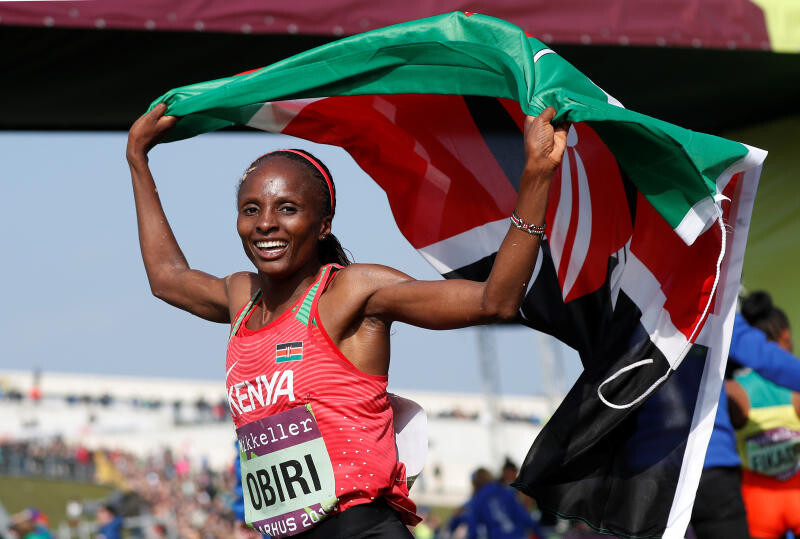
Ben Flanagan signs with On
“We want people that will fit the brand’s competitive values,” says DeKoker. “Both Obiri and Flanagan checked those boxes.” In her debut race wearing On product, the defending world cross country champion won the 8K easily in 26:44.
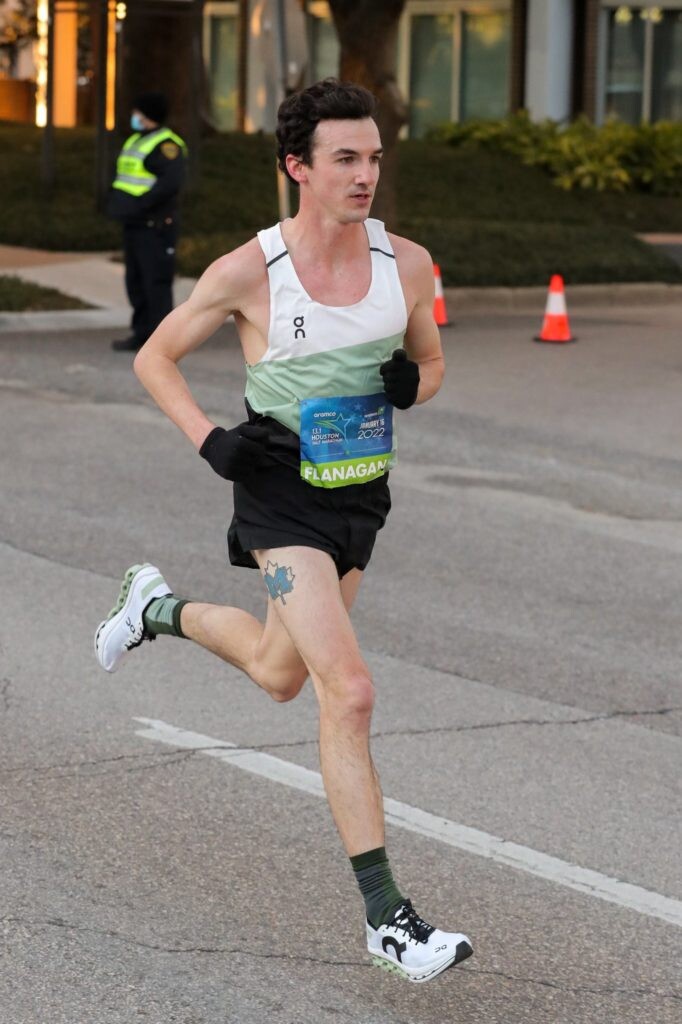
Obiri will head to the World Athletics Memorial Agnes Tirop XC race in Eldoret, Kenya on Feb. 12, before taking a shot at another 5,000m medal this summer at the 2022 World Championships in Eugene, Ore. “She will move up to the marathon distance in the fall of 2022,” DeKoker says. “And we will have our new premium-plated racing shoe on display for her debut.”
“The full expectation is to develop and supply our athletes with the top-of-the-line product to enhance their performance,” says DeKoker. “There are multiple On super-spikes scheduled to be released this year, with Alicia Monson racing in a pair this weekend at the NYC Millrose Games.”
Both Monson and Flanagan are two recent NCAA champions that DeKoker had his eyes on since they won their titles in 2018 and 2019. “When we found out Flanagan’s contract was up with Reebok, we knew we wanted to support him,” DeKoker says. “We feel he will have the Canadian half-marathon or marathon record in no time.”
For now, the brand plans to go all in to be competitive with the top distance brands on the roads and track, then dipping their feet in the sprint distances for the 2028 LA Olympics.
by Marley Dickinson
Login to leave a comment
Josh Kerr and Ollie Hoare to clash in men's Millrose mile
Olympic 1500m bronze medalist Josh Kerr and Olympic finalist Ollie Hoare will lead the charge for the WHOOP Men’s Wanamaker Mile at the 114th Millrose Games.
Kerr became Great Britain's second fastest ever 1500m runner with his 3:29.05 medal-winning run in Tokyo. While competing at the University of New Mexico, Kerr was the 2018 NCAA champion in the mile.
“The Wanamaker Mile has always been a staple in my indoor season, there is no race like it,” said Kerr. “I’m rested and ready to get ‘stuck in’ after a successful Olympics.”
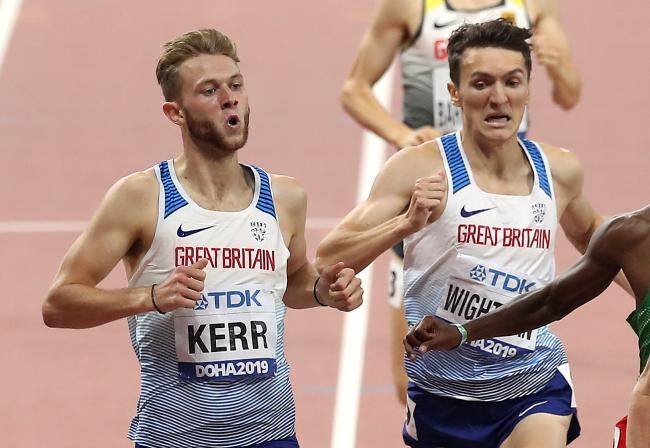
Australia's Hoare, meanwhile, placed second in the 2020 Wanamaker Mile and reached the Olympic final in Tokyo this past summer. He was the 2018 NCAA 1500m champion while at the University of Wisconsin, taking down Kerr in the process.
“The Wanamaker Mile is one of the most prestigious indoor mile races in the world,” said Hoare. “To be able to go and compete again for the third time in this event is a privilege.
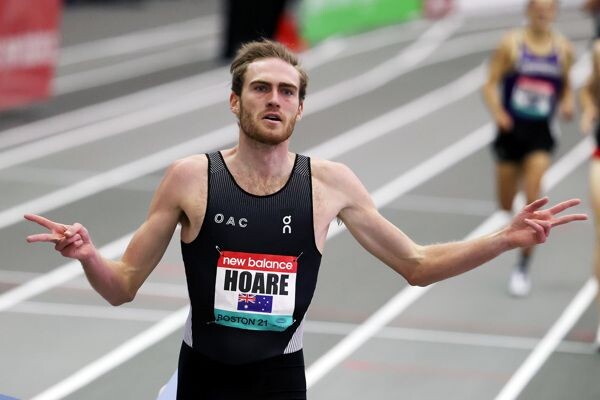
"Coach (Dathan Ritzenhein) and I are happy with where I am right now and I'm confident that I can take on whatever comes at me. Don't be surprised if you see some very fast mile times come out of New York.”
Five-time Olympian Nick Willis of New Zealand will also join the mix. The 38-year-old, who has finished as runner-up at the Wanamaker Mile three times, will be trying for a record 20th consecutive year of running a sub-four-minute mile.
There are talented US runners in the field, led by 2016 Olympic 800m bronze medallist Clayton Murphy, and he will be joined by 18-year-old Hobbs Kessler and world finalist Craig Engels, as well as Ireland's Andrew Coscoran and Canada's Charles Philibert-Thiboutot.
Rounding out the field will be Mario Garcia Romo, Henry Wynne and Colby Alexander.
Other top athletes so far announced for the Millrose Games include 2016 world indoor 60m champion Trayvon Bromell, world 100m hurdles record-holder Kendra Harrison, Olympic shot put champion Ryan Crouser, world shot put champion Joe Kovacs, Olympic 800m champion Athing Mu, Olympic pole vault champion Katie Nageotte and world indoor pole vault champion Sandi Morris.
by World Athletics
Login to leave a comment
NYRR Millrose Games
The Pinnacle of Indoor Track & Field The NYRR Millrose Games, first held in 1908, remains the premier indoor track and field competition in the United States. The 2025 edition will once again bring the world’s top professional, collegiate, and high school athletes to New York City for a day of thrilling competition. Hosted at the New Balance Track &...
more...Former University of Wisconsin athlete Alicia Monson qualifies for Olympics in the 10,000 m
Taking the lead in the fifth lap and never letting up, Emily Sisson won the 10,000 in 31:03.82 on June 26 at the U.S. Olympic Track & Field Trials. Despite a start temperature of 85 degrees, Sisson broke the 17-year-old Trials record of 31:09.65, set by Deena Kastor in 2004.
Karissa Schweizer moved from third to second in the final lap, finishing in 31:16.52, and Alicia Monson claimed the third team spot in 31:18.55.
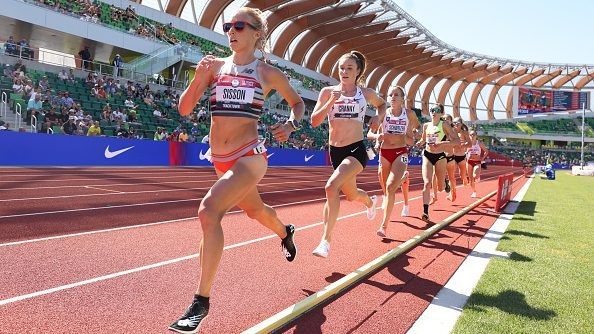
Monson, 23, who runs for On Athletics Club in Boulder, Colorado, also made her first Olympic team. She was wobbly in the final few laps, and after the medal ceremony, she collapsed and started vomiting and had to go to the hospital as a precaution, according to her coach, Dathan Ritzenhein.
“She’s the toughest person, the quietest, toughest person you could imagine,” he said. “I think she’s one of the next greats. She showed it today.”
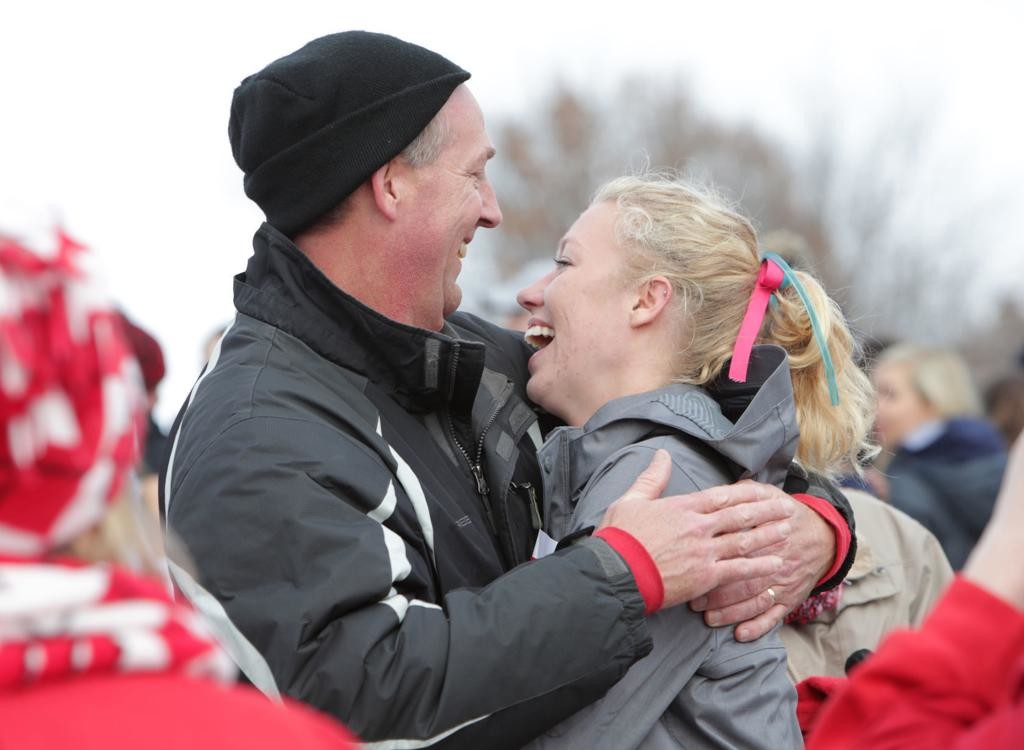
Schweizer also qualified for the 5,000-meter squad on Monday, and she said she was exhausted in the day’s heat. It is unclear whether Schweizer plans to run both events in the the Olympics. If she gives up her 5,000-meter spot, Abbey Cooper will be named to that team. If she gives up her 10,000-meter spot, Niwot native Elise Cranny, fourth in 31:35.22, and Rachel Schneider, fifth in 31:42.92, are eligible to run the 10K in Tokyo.
Cranny and Schneider, however, are also already on the 5,000-meter team. So if Schweizer, Cranny, and Schneider all decide to skip the 10K, then Sara Hall, sixth in 31:54.50, will run the 10K in Tokyo.
by Colorado Runner
Login to leave a comment
Tokyo 2020 Olympic Games
Fifty-six years after having organized the Olympic Games, the Japanese capital will be hosting a Summer edition for the second time, originally scheduled from July 24 to August 9, 2020, the games were postponed due to coronavirus outbreak, the postponed Tokyo Olympics will be held from July 23 to August 8 in 2021, according to the International Olympic Committee decision. ...
more...Emily Sisson Secures First US Title & Olympic Berth with a 10K Masterpiece
EUGENE, Ore. — The spirit of Molly Huddle lives on. Last week, Huddle announced her withdrawal from the 2020 US Olympic Trials, her 36-year-old body no longer able to generate the speed or smoothness that had carried her to five straight US 10,000-meter titles and an American record. But on a sunny Saturday morning at Hayward Field (82 degrees in Eugene at start), Emily Sisson delivered a run her erstwhile training partner would have been proud of, methodically squeezing the life out of the women’s 10,000-meter field to win in a meet-record of 31:03.82 despite 86-degree temperatures.
Actually, we know Huddle was proud of the effort
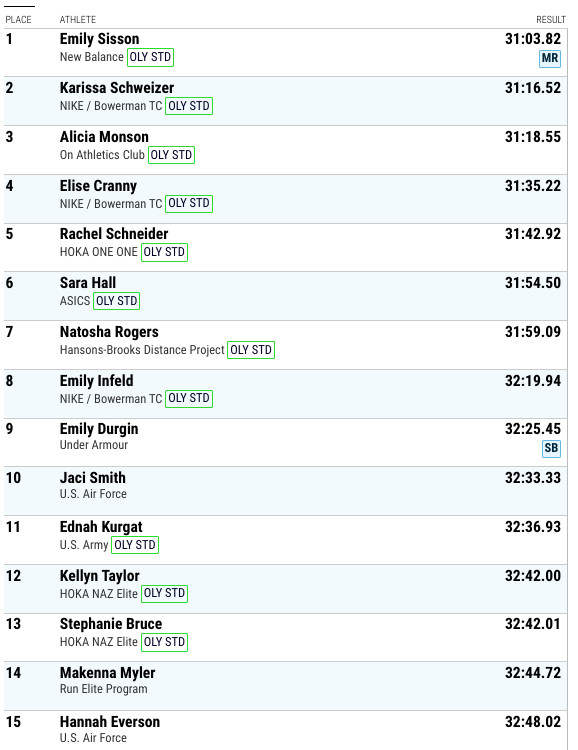
A Huddle comparison is selling Sisson short, however. This was dominance at a level we are unaccustomed to seeing at an Olympic Trials, particularly in an event in which 13 women in the field entered with the 31:30 Olympic standard. Only seven Americans (including Sisson) have ever run faster than her 31:03.82 today, achieved in the morning sun and without the aid of pacemakers. Her 12.70-second margin of victory left her almost a full straightaway clear of runner-up Karissa Schweizer.
Sisson had sealed the victory by building a 30-meter lead with three laps to go and would only pick it up from there, going 71.47-71.25-69.26 to close out a 15:14.67 final 5k and 4:44.45 final 1600. Schweizer took second in 31:16.52 to make the Olympic team at a second distance (she also made it in the 5k on Monday), while Alicia Monson gave On Athletics Club another Olympian by taking third in 31:18.55.
The top five women in this race will all be running in Tokyo — the top three in the 10k and fourth- and fifth-placers Elise Cranny and Rachel Schneider in the 5k.
Sisson lapped everyone in the field save for the top seven. The last person she lapped — in the final 100 meters — was none other than 2016 Olympian and 2015 world championship bronze medallist Emily Infeld, who stuck with the lead pack for 6k.
The Race
https://www.youtube.com/watch?v=OsYzi04MOQ4&feature=emb_title
The race had been shifted to a 10 a.m. start to avoid the hot weather (forecast to reach 100 degrees when this race would have originally been run at 6:44 p.m.), though the conditions were still hot and sunny when the gun was fired. Sisson took the lead just before two kilometers, dropping the pace from 78’s and 78’s to consistent 75’s, whittling the pack to 10 by 5k (15:49.15). Sisson would continue tightening the noose all the way home. She dropped the pace to 74’s just after halfway, which was enough to drop former New Mexico teammates and new US citizens Weini Kelati and Ednah Kurgat, as well as 2016 Olympian Infeld by four miles.
By 6800, Schneider, Hall, and 2012 Trials runner-up Natosha Rogers had been dropped as well, leaving a four-woman battle for three spots between Sisson, Cranny, Schweizer and Monson. After running consistent 74’s, Sisson let a 75 slip in for her 18th lap. From there, however, Sisson’s pacing was masterful: each of her final seven laps was faster than the one that preceded it. A 72.58 fifth-to-last lap gave her a 10-meter gap with a mile to go, and with 41 starters, it became hard to keep up with who was where as Sisson had been lapping multiple runners per lap. She would press on to win in dominant fashion, while Schweizer, who trailed Monson by 3.5 seconds at the bell, would use a big last lap (68.81, fastest in the field) to take second, with Monson safe in third, over 16 seconds up on Schweizer.
For the record, Schweizer said she plans on running both the 5k and 10k in Tokyo.
Quick Take: Total masterclass
Sisson has had some great performances in her career (she’s made two Worlds teams at 10k, won two USA road titles, and won two NCAA titles), but she had never had one like this.
Not only did she make her first Olympic team and win her first USATF track title, she put on a wonderful performance. She took the lead after the mile and never gave it up. She started clipping off 75-second laps (5:00/mile) through halfway. That whittled the lead pack down to 10. Then she upped the ante again, lowering the pace to roughly 74s through 8k. That made it a four-woman race for the three Olympic spots. Then she started running 72s or better and it was game over.
Quick Take: Redemption for Sisson, who used the extra year to her advantage
When we spoke to Sisson a month ago, she admitted that had the Trials been held as scheduled in 2020, she likely would not have been in contention to make the team. Her body felt broken after dropping out of the Olympic Marathon Trials on a brutal Atlanta course, and after a stellar 2:23 debut in London in 2019, she struggled to make sense of the result.
“Usually I’m good at moving on from bad races, but I struggled with that one,” Sisson.
It didn’t help that, after COVID postponed the Trials, there was nothing to move on to.
But eventually, Sisson was able to get back on track (she praised her husband, her former Providence College teammate Shane Quinn, for his support) and work back to incredible fitness. In December, she ran 67:26 to miss Huddle’s American record in the half marathon by one second, and she looked strong in her three track 5k’s this spring, running 14:55, 14:53, and 14:59. She had never broken 15 minutes prior to this year. Her plan today was to play to her strength and make it a fast race, as she knew she was in the best shape of her life.
“There were some workouts where I had to ask [my coach Ray Treacy] to repeat my splits, like what did I just run?” Sisson said.
QT: Alicia Monson pushed her body to the brink (and to the hospital) to make her first Olympic team
The newly-formed On Athletics Club (editor’s note: On Sponsored the Road to the Trials on LetsRun.com) got its second 10k Olympian at the Trials as Alicia Monson finished 3rd to make the team, joining teammate Joe Klecker who was 3rd in the men’s 10k on the first night of the Trials.
Coach Dathan Ritzenhein had been very bullish on Monson heading into the Trials, but how would she perform on the biggest stage and in the heat? Superbly well. While Monson was overtaken by Karissa Schweizer on the final lap, she was the last athlete to get broken by Sisson.
However, the effort really took its toll.
After the race, Monson did not look well. She eventually was resting in the shade in the bowels of the stadium, and was brought back out for an interview by NBC’s Lewis Johnson, where Schweizer helped support her. Monson said in the interview, “I have never gone to that point in a race before and I’ve always kind of wanted to. I think today was a good time to do that.”
Monson was able to go to the victory stand and do the award ceremony for the top 3, but the heat was still taking its toll.
Later as first reported by Sarah Lorge Butler, it was revealed that Monson collapsed after the medal ceremony and started vomiting and was taken to the hospital.
Ritzenhein told LetsRun he believes Monson will be okay, adding “she is just the toughest person I’ve ever met.” For anyone who remembers Ritzenhein’s all-out racing style, that is high praise indeed. Ritz even said she’d be available for an interview after she left the hospital. That definitely is a LetsRun.com first.
Quick Take: Sisson & Monson’s all-in bets pay off
When USATF switched the schedule to put the women’s 10k after the women’s 5k, athletes who qualified in both had a choice to make. If you thought your best shot to make the team was in the 10k, would you double — and perhaps wear yourself out with a heat and final in the 5k — or give yourself only one shot to make the team and focus on the 10k?
Both Sisson and Monson (and their coaches) felt their best shot was in the 10k and both decided to skip the 5k entirely. That paid off when both made the team today.
But both Schweizer and Cranny decided to attempt the double, and that decision worked out nicely for them as well, as Schweizer made the team in both events and Cranny was the US champ in the 5k. All four women are first-time Olympians.
Quick Take: Sara Hall’s Olympic dream is denied yet again, but she achieved her career-best Olympic Trials finish in 6th
Some great US runners over the years have failed to make an Olympic team. Chris Solinsky, the #2 US man ever at 5,000 and 10,000, never made an Olympic team, and Sara Hall, the 2nd-fastest US women’s marathoner ever at 2:20:32, may also end up with that label. Hall, 38, finished 6th in today’s race in 31:54.50, which was a career-best finish for her at the Olympic Trials.
Sara Hall at the Olympic Trials
2004 – 11th in 5000
2008 – 9th in 1500
2012 – 8th in steeple
2016 – DNF in marathon, 14th in 5000
2020 – DNF in marathon, 6th in 10,000
“I made all the right moves I needed to, I just didn’t have it. You know, those girls are really strong,” said Hall after the race. “Sisson, I’m really happy for her… I’m so happy she made the team, she’s so deserving… I respect all those women so much… I thought I had a shot at this team but at the same time that’s my highest Olympic Trials finish… I’m thankful I was able to do that today.”
Hall said she was rooting for her fellow marathoner Sisson — the US’s 8th fastest marathoner in history at 2:23:08 — to make the team.
“Emily’s run was so impressive, I didn’t doubt that she could do this… living in Phoenix, I’m pretty sure we’re all gonna wish we were living in Phoenix like she is… I was rooting for her so much because of the disappointment in Atlanta that was similar to mine,” said Hall, who said she’ll be announcing a fall marathon soon.
Saying Hall won’t make the team in 2024 may not be wise. The date for the 2024 marathon trials isn’t set yet, but they might be less than 2.5 years away and Hall is running better than ever. Bernard Lagat made an Olympic team at 41 in 2016. Hall will be 40 when the 2024 Olympic Marathon Trials take place. Of course, the difference is Lagat had been on many teams before.
Regardless of whether she makes a team, Hall’s late-career transformation has been incredible. At the 2016 Trials, Hall had pbs of 32:44 for 10k and 2:30:06 for the marathon. Now her pbs are 31:21 and 2:20:32.
Quick Take: Sisson handled the heat like a pro
At the last Trials, Sisson said she was “pretty out of shape and I actually overheated.” She handled the heat with ease today. That may be because she lives in Phoenix, Arizona (although she hasn’t been there since March, spending her buildup in Flagstaff and then Providence).
She wore sunglasses during the race but they weren’t hers. She often runs with glasses in Phoenix but didn’t have any today, so she just borrowed her husband’s pair before the race.
Quick Take: Emily Durgin has a strong run in 9th
The top 8 spots were all filled by people with the Olympic standard of 31:25. The first person without the standard was 9th placer Emily Durgin of Under Armour. No one in today’s race ran a PB, but Durgin came the closest. When her collegiate career at UConn came to an end in 2017, she had pbs of 16:00.93/33:49. Now she’s improved them to 15:24/32:22 and she ran 32:25 for 9th.
by Let’s Run
Login to leave a comment
Some Veteran Pro Runners Are Making Less This Year, and They're Ditching the Sport
Many athletes are confronting a bleak financial reality. Some are quitting the sport entirely.
What do Noah Droddy, Ben True, and Andy Bayer have in common?
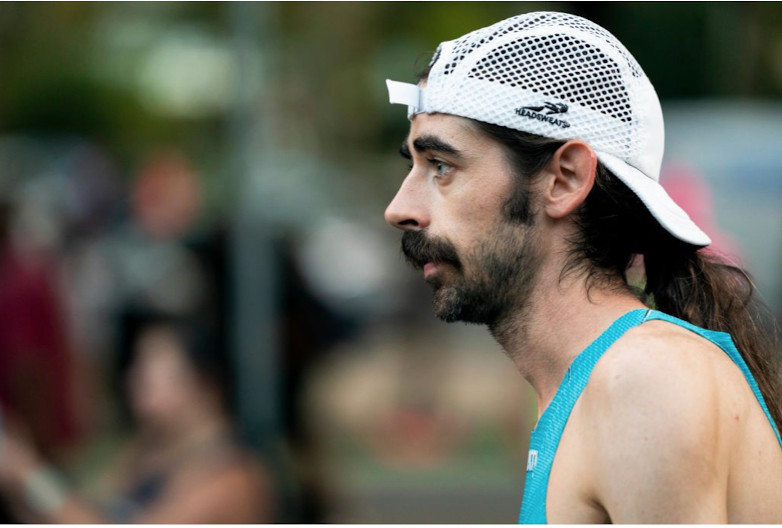
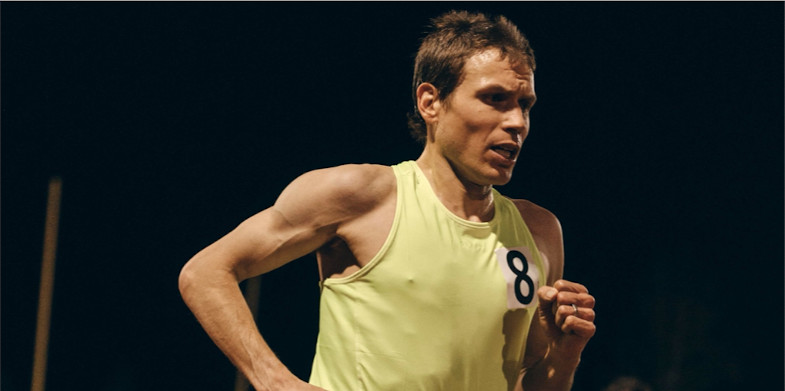
They’re all ranked among the top 10 Americans of all time in their events—Droddy in the marathon, True in the 10,000 meters, Bayer in the steeplechase.
How Much Do Pro Runners Make? For Some Veterans, It’s Less This Year
And they were all dropped by their sponsors at the end of 2020.
This news took a while to seep out—after all, athletes don’t tend to publicize it when their sponsors reduce their pay or stop supporting them altogether. But Droddy, 30, and True, 35, have been open about their status and confirmed it in calls with Runner’s World (both had been sponsored by Saucony), and Bayer told the Indy Star that Nike dropped him and he has left the sport, at age 31, for a job in software engineering.
Droddy—one of running’s most recognizable figures in races with his long hair, backward baseball cap, and habit of losing his lunch at marathon finish lines—summed up his situation in a tweet on February 19.
Is he right? Is it typical for top runners, at the height of their careers, to lose financial backing from shoe companies? Or is this an anomaly at the end of an unusual, pandemic-marred 15 months?
Runner’s World had conversations with eight athletes, four agents, two marketing employees at brands, and three coaches to get a sense of the current economics for athletes. They painted a complex picture.
Are most pro runners broke?
Many are just getting by. For years, America’s pro runners have been on shaky financial footing. With the exception of those who win global medals or major marathons, distance runners often struggle to earn enough money to pay for their essentials (rent and food), plus cover all their running-related expenses, such as coaching, travel to races and altitude camps, health care, gym membership, and massage.
Over the past year, the pandemic has erased lucrative racing opportunities. Additionally, shoe companies have been reevaluating their sports marketing budgets, from which runners are paid. Experts say that the result has been an increasing bifurcation between the sport’s haves and have nots.
The most successful, those destined for the Olympic team or starring on the roads, are earning generous base payments and bonuses for setting records or winning. Many of the rest are scraping by, with smaller contracts, if any, and they’re supplementing their shoe company earnings with jobs.
Running’s middle class, much like America’s, is shrinking.
The exception is runners who belong to a single-sponsor training group, like those in Flagstaff, Arizona (Hoka); Boston (New Balance); and Portland, Oregon (Nike). In those cases, coaching, travel, and training camp costs are absorbed by the club, easing the financial pressure on athletes and making it possible for them to pursue the dream.
Brands these days appear to be more eager to devote dollars to groups and the athletes who train with them, rather than individual athletes training on their own in different locations. That presents a quandary for midcareer runners who have achieved a level of success. Faced with the loss of a sponsorship, they aren’t always willing to pick up and move to a new town and a new coach.
What do contracts look like?
If you’re a top runner in the college ranks, and you’ve won multiple NCAA titles at the Division I level, shoe companies—Nike, Adidas, Brooks, Saucony, Hoka, and others—will usually come calling, offering more than $100,000 a year for multiple years, with a spot in a group or a stipend to pay your coach. Those companies are betting on those NCAA champions to be Olympians of the future.
Dani Jones, for instance, won three individual NCAA titles at the University of Colorado, and she signed with New Balance at the end of last year. Her agent, Hawi Keflezighi, said she entertained competing offers from other companies.
A midcareer athlete with a breakthrough performance—hitting the podium at a major marathon or making an Olympic team, for instance—might also be rewarded with a base contract worth $50,000 to $100,000.
The top sprinters earn even more (although their careers are typically shorter). Usain Bolt famously made millions, and Canadian sprinter Andre De Grasse was 21 when he signed a deal worth $11.25 million—before bonuses—from Puma in 2015, the Toronto Star reported.
The payouts drop significantly after that. Let’s say you’re a distance runner, but you haven’t been able to get a big win in college, although you’ve come close. The lucky ones are looking at deals for about $30,000 to $75,000 per year.
Your agent takes a 15 percent cut of that. And this base salary most often comes without benefits: no health insurance, no 401(k). As independent contractors, pro runners are paying all their own taxes. (In contrast, traditional full-time employees have half of their Social Security and Medicare taxes paid by the employer.)
Many young runners out of college join pro groups, and they’re not making anything beyond free gear and coaching. Others might get a stipend worth $10,000 or $12,000 a year.
The contracts typically sync with the Olympic calendar. At the end of 2020, many athletes’ contracts were expiring—even though the Olympics didn’t happen. That’s how Droddy, True, and Bayer were dropped. Shannon Rowbury, a three-time Olympian, told Track & Field News her deal with Nike was extended for one year, two if she makes the Olympic team this summer.
If an athlete has a good Olympics, the sponsoring company often has an option to extend the deal for an additional year, which includes the world track & field championships. It’s at the company’s discretion—not the athlete’s.
Parts of the sponsorship model appear to be changing, but slowly. When NAZ Elite announced a new deal with Hoka last fall, it included health insurance for the runners. Similarly, members of Hansons-Brooks in Rochester, Michigan, get health insurance if they work in the Hansons running specialty stores. And last May, Tracksmith brought Mary Cain and Nick Willis on as employees at the company—Cain in community engagement, Willis as athlete experience manager—with the plan that both would continue to train and race at an elite level.
Why doesn’t anyone know exactly how much runners are making?
As part of these deals, athletes have to sign non-disclosure agreements (NDAs), promising to keep the terms quiet. If an athlete violates the NDA, the sponsor can void the contract—or sue for breach of contract.
This is, in fact, similar to other sports. In basketball, LeBron James is being paid $39.2 million this season by the Los Angeles Lakers. But he also has an endorsement deal with Nike, and the exact structure of that is unknown.
In running, prize purses are publicized—$150,000 for winning the Boston Marathon, $25,000 for being the top American at New York in 2019, $75,000 for winning the Olympic Marathon Trials.
But as in other sports, the terms of the sponsor deals are kept mum. And appearance fees at major races, as well as time bonuses within those appearance fees, which represent a major source of income for road runners (mainly marathoners), are also mostly unknown.
Athletes feel that the silence around sponsor contracts and appearance fees puts them at a disadvantage—it’s hard to know their market value. Yes, they can—and do—have quiet conversations with peers about it. But lacking broad knowledge, they lack power.
And as a result, the industry is rife with rumors and assumptions. Athletes’ values are often inflated through the grapevine.
“I think it is very similar to the dynamic that would occur if no one knew the price of home sales,” Ian Dobson—a 2008 Olympian who ran for Adidas and Nike during his pro career, which ended in 2012—told Runner’s World. “How could you ever be confident in a sale price if you didn’t know what any other homes in your neighborhood were selling for? Granted, we don’t know every detail of every home sale in the neighborhood, but it’s certainly helpful to know in general terms the dollar amount that these are going for so that we can all understand what value our home might have.”
Also, athletes keep quiet when their circumstances change. They feel embarrassed. One athlete told Runner’s World, “No one in track wants to be the one to say, ‘I got dropped,’ or ‘I got reduced.’ It's all taboo.”
Even so, $30,000 is nothing to sneeze at—especially for a job that’s about pursuing individual goals.
No, it’s not. But not every contract is structured the same way.
Some pay that base amount, no matter what. Other contracts penalize athletes with reductions if, for instance, they don’t finish in the top three in the country in Track & Field News rankings, or if they get injured and can’t race a certain number of times per year.
That’s why numerous Nike athletes seemed to be eagerly seeking racing opportunities of any kind last summer amid the pandemic. Marathoner Amy Cragg raced a 400 meters at an intrasquad meet on July 31, and finished in 90.15 seconds—6:00 pace—presumably to check a box on her contract. On August 7, she ran 800 meters in 3:03.85. The record of those races are in her World Athletics profile.
A Nike spokeswoman, when asked about athletes racing in 2020 to meet contractual obligations, responded: “We do not comment on athlete contracts.”
Time bonuses, once seen as a reliable way to beef up athletes’ base payments, are also becoming less frequent or harder to hit, as shoe technology improves and fast times become more common, according to one agent.
What role do agents play?
For athletes who have never previously had a sponsorship deal, it’s almost impossible to secure one without the help of an agent, who can get in the door at all the major brands.
For American distance runners, there are nine main agents—all men—negotiating the deals (Keflezighi, Josh Cox, Paul Doyle, Ray Flynn, Chris Layne, Dan Lilot, Tom Ratcliffe, Ricky Simms, and Mark Wetmore). Karen Locke, one of the few female agents in track and field, represents a few distance runners among her roster of clients in field events.
Of course, all the prominent agents—who have multiple clients across multiple brands and at various stages of their athletic careers—have data about what athletes are worth. But they have a duty to each one to maintain confidentiality about the specifics of that deal.
Agents bring to their athletes a broad picture of the market and what each might command, providing advice to those considering offers: Yes, this a fair offer, a solid deal. Or no, you can do better.
They also help get athletes into competitive track races like the Diamond League and elsewhere, or into the World Marathon Majors. They can handle travel arrangements to meets and help to make sure records get ratified. Generally, their role is to go to bat for athletes, no matter what they need.
For their services, they take 15 percent of everything an athlete earns: sponsor deals, appearance fees, and prize money, no matter how small the race or winnings.
Agents are supposed to negotiate on behalf of each client individually, but athletes have no idea if that’s happening. Are they being used as part of a package deal? Thrown in at a minimal rate as a thank you to a brand for giving a generous deal to a superstar? Or, on the upside, getting a small appearance fee from a major marathon that they wouldn’t be able to get into on their own, because they have the same agent as a mega-star?
“Agents want to bring in the most money for their combined athletes—if they manage 20 athletes, they’re trying to bring in the maximum money they can across 20 athletes,” one athlete told Runner’s World. “That doesn’t necessarily mean they’re trying to maximize for each individual. The difference between earning $20,000 a year and $30,000 a year is profound in terms of your ability to actually train as a professional. But it translates into a small amount [$1,500] for the agent.”
Why is the market tricky right now?
The pandemic caused upheaval in marketing budgets. Also, the people who work in marketing at shoe brands can be inexperienced in the running industry, and turnover often runs high at those positions, jeopardizing relationships between athletes and brands that have lasted years.
The marketing budget questions are not limited to running, said Matt Powell, a sports business analyst and vice president for NPD.
“I think brands are taking a more circumspect view of endorsement contracts in general—whether it’s teams, leagues, or individual athletes,” he said. “They’re [questioning whether] they’re getting the return on that investment.”
Nike is rumored to have cut its marketing budget for running, amid layoffs at the company. Nike did not return an email from Runner’s World seeking clarification on the budget or the numbers of runners it currently sponsors.
Although Nike’s superstars are said to be fine and not facing any reductions in their deals, one Nike athlete, a 2016 Olympian, told Runner’s World, “It’s pretty much assumed that everyone is getting less.”
And it’s believed that several of these contracts are for shorter periods of time than they might have otherwise been: through the world championships in 2022 in Eugene, Oregon, instead of through the next Olympics in 2024.
In answer to questions from Runner’s World about True and Droddy—as well as rumors about a new Saucony-sponsored training group—Saucony responded with an emailed statement from Fábio Tambosi, Saucony’s chief marketing officer:
“At Saucony we believe you cannot have a sports brand without the inclusion and authentic connection with athletes. We are excited about the evolution of Sports Marketing as a brand pillar for years to come, and remain committed to building an athlete strategy that aligns with this goal.” 

Good news abounds, too
On the positive side for distance runners, Puma has re-entered the distance running market. Molly Seidel was lured from Saucony to Puma, and Aisha Praught Leer told Women’s Running she signed a “big girl contract” with Puma. Additionally, the company started a group in North Carolina, coached by Alistair Cragg and with three athletes so far.
The shoe company On has also invested heavily, starting a new team in Boulder, Colorado, coached by Dathan Ritzenhein and with athletes like Joe Klecker and Leah Falland.
Keira D’Amato, 36, signed her first pro contract, with Nike, after a string of impressive performances during the pandemic on the track and roads. She has kept her job as a realtor.
Keflezighi sees an opening for apparel brands that don’t have footwear to sponsor more athletes. Women’s apparel company Oiselle has done this for years, and Athleta is now sponsoring Allyson Felix. Could a menswear company be far behind? These arrangements leave athletes free to choose their own running shoes, which can be advantageous as shoe technology advances so quickly.
Why do brands have pro runners anyway?
Beyond the individual dollar amounts in contracts, brands seem to be rethinking what the role of a professional athlete is. Is it to inspire with performances, and hope those performances translate into shoe sales? Or is it to connect with fans on social media and promote product sales that way?
“You have to kind of look at it big picture,” True told Runner’s World. “These companies aren’t giving athletes money for charity; they’re doing it for a marketing investment and they’re looking for a return on their investment. And currently—and this is not ideal, in my mind—you look at the rise of social media and influencers. They are very inexpensive for marketers to go after and they get their products in front of a lot of eyeballs.”
A 2:20 male marathoner who also has a drone and a great Instagram account or YouTube channel might be gaining followers, True said, while a 2:05 marathoner is training hard and devoting his craft toward the next race.
“The average person, they don’t understand that 15-minute difference,” he said. “One historically will cost that company a lot of money. The other does not cost much at all and will get a whole lot more eyeballs on the product. You have to understand that.”
In his nine years with Saucony, True, training on his own in Hanover, New Hampshire, was part of only one ad campaign the company ran. The company preferred to use models for its ads and catalogs.
In February, True ran 27:14 for 10,000 meters, a personal best and faster than the Olympic standard. He wore Nike spikes and a plain yellow singlet. If all goes according to plan, he’ll race the U.S. Olympic Track and Field Trials in June and try to make his first team. His wife, professional triathlete Sarah True, is pregnant and due in July. And after that, he’ll run a fall marathon. True intended to debut at the marathon last fall, before the pandemic canceled all the races.
He’s moving ahead and training hard, despite the financial uncertainty. “I would have loved to have spent my entire career with Saucony,” he said. “I very much enjoyed working with them. I’ve been fortunate enough that I have had probably a lot more support than many other people in my position. That’s been nice.”
At this point, he is hoping another company will pick him up to take him through the next few years. “If a company just gave me a bonus structure that is fair for the result, I’d be happy with that,” he said. “It’s not like we’re looking for huge amounts of money. I’m very pragmatic and very realistic. I don’t think you should be paid for potential; I think you should be paid for results.”
by Runner’s World
Login to leave a comment
New Salazar documentary questions reasons for his 2019 suspension
Nike’s Big Bet, the new documentary about former Nike Oregon Project head coach Alberto Salazar by Canadian filmmaker Paul Kemp, seeks to shed light on the practices that resulted in Salazar’s shocking ban from coaching in the middle of the 2019 IAAF World Championships. Many athletes, scientists and journalists appear in the film, including Canadian Running columnist Alex Hutchinson and writer Malcolm Gladwell, distance running’s most famous superfan.
Most of them defend Salazar as someone who used extreme technology like underwater treadmills, altitude houses and cryotherapy to get the best possible results from his athletes, and who may inadvertently have crossed the line occasionally, but who should not be regarded as a cheater. (Neither Salazar nor any Nike spokesperson participated in the film. Salazar’s case is currently under appeal at the Court of Arbitration for Sport.)
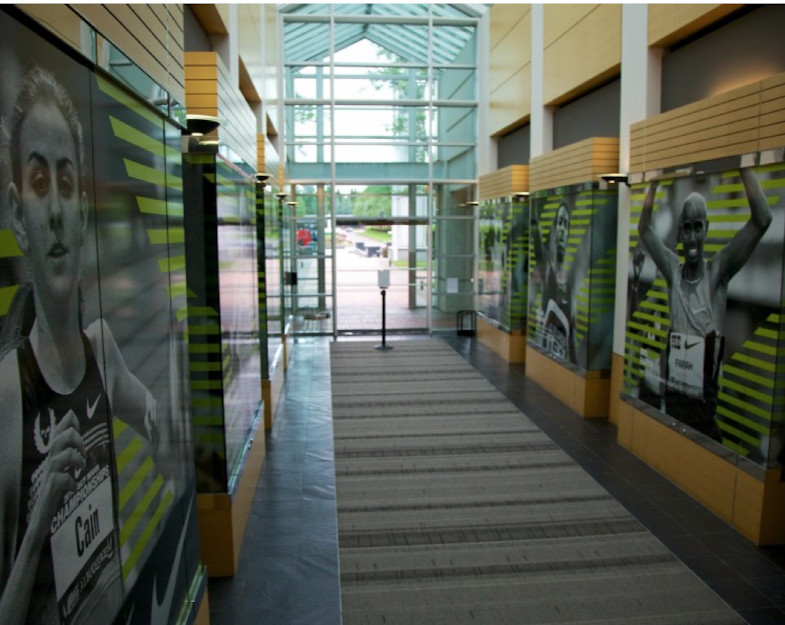
Salazar became synonymous with Nike’s reputation for an uncompromising commitment to winning. He won three consecutive New York City Marathons in the early 1980s, as well as the 1982 Boston Marathon, and set several American records on the track during his running career.
He famously pushed his body to extremes, even avoiding drinking water during marathons to avoid gaining any extra weight, and was administered last rites after collapsing at the finish line of the 1987 Falmouth Road Race.
Salazar was hired to head the Nike Oregon Project in 2001, the goal of the NOP being to reinstate American athletes as the best in the world after the influx of Kenyans and Ethiopians who dominated international distance running in the 1990s. It took a few years, but eventually Salazar became the most powerful coach in running, with an athlete list that included some of the world’s most successful runners: Mo Farah, Galen Rupp, Matt Centrowitz, Dathan Ritzenhein, Kara Goucher, Jordan Hasay, Cam Levins, Shannon Rowbury, Mary Cain, Donovan Brazier, Sifan Hassan and Konstanze Klosterhalfen.
Goucher left the NOP in 2011, disillusioned by what she saw as unethical practices involving unnecessary prescriptions and experimentation on athletes, and went to USADA in 2012. An investigation by the U.S. Anti-Doping Agency followed on the heels of a damning BBC Panorama special in 2015, and picked up steam in 2017.
When Salazar’s suspension was announced during the World Championships in 2019, he had been found guilty of multiple illegal doping practices, including injecting athletes with more than the legal limit of L-carnitine (a naturally-occurring amino acid believed to enhance performance) and trafficking in testosterone – but none of his athletes were implicated. (Salazar admitted to experimenting with testosterone cream to find out how much would trigger a positive test, but claimed he was trying to avoid sabotage by competitors.)
That Salazar pushed his athletes as hard in training as he had once pushed himself is not disputed; neither is the fact that no Salazar athlete has ever failed a drug test. Gladwell, in particular, insists that Salazar’s methods are not those of someone who is trying to take shortcuts to victory – that people who use performance-enhancing drugs are looking for ways to avoid extremes in training.
That assertion doesn’t necessarily hold water when you consider that drugs like EPO (which, it should be noted, Salazar was never suspected of using with his athletes) allow for faster recovery, which lets athletes train harder – or that the most famous cheater of all, Lance Armstrong, trained as hard as anyone. (Armstrong, too, avoided testing positive for many years, and also continued to enjoy Nike’s support after his fall from grace.)
Goucher, Ritzenhein, Levins and original NOP member Ben Andrews are the only former Salazar athletes who appear on camera, and Goucher’s is the only female voice in the entire film. It was her testimony, along with that of former Nike athlete and NOP coach Steve Magness, that led to the lengthy USADA investigation and ban.
Among other things, she claims she was pressured to take a thyroid medication she didn’t need, to help her lose weight. (The film reports that these medications were prescribed by team doctor Jeffrey Brown, but barely mentions that Brown, too, was implicated in the investigation and received the same four-year suspension as Salazar.) Ritzenhein initially declines to comment on the L-carnitine infusions, considering Salazar’s appeal is ongoing, but then states he thinks the sanctions are appropriate. Farah, as we know, vehemently denied ever having used it, then reversed himself.
It’s unfortunate that neither Cain, who had once been the U.S.’s most promising young athlete, nor Magness appear on camera. A few weeks after the suspension, Cain, who had left the NOP under mysterious circumstances in 2015, opened up about her experience with Salazar, whom she said had publicly shamed her for being too heavy, and dismissed her concerns when she told him she was depressed and harming herself. Cain’s experience is acknowledged in the film, and there’s some criticism of Salazar’s approach, but Gladwell chalks it up to a poor fit, rather than holding him accountable.
Cain’s story was part of an ongoing reckoning with the kind of borderline-abusive practices that were once common in elite sport, but that are now recognized as harmful, and from which athletes should be protected.
Gladwell asserts that coaches like Salazar have always pushed the boundaries of what’s considered acceptable or legal in the quest to be the best, and that the alternative is, essentially, to abandon elite sport. It’s an unfortunate conclusion, and one that will no doubt be challenged by many advocates of clean sport.
by Running Magazine
Login to leave a comment
Three American Records and 10 National Records Fall at the New Balance Indoor Grand Prix
Elle Purrier’s indoor two-mile American record was just one of many highlights in New York.
Many of the best track and field athletes in the world returned to competition—some for the first time in several months, due to the COVID-19 pandemic—at the New Balance Indoor Grand Prix on February 13. The event, typically held at the Reggie Lewis Center in Boston, was relocated to the Ocean Breeze Athletic Complex in Staten Island, New York, because the Boston venue is serving as a mass vaccination site.
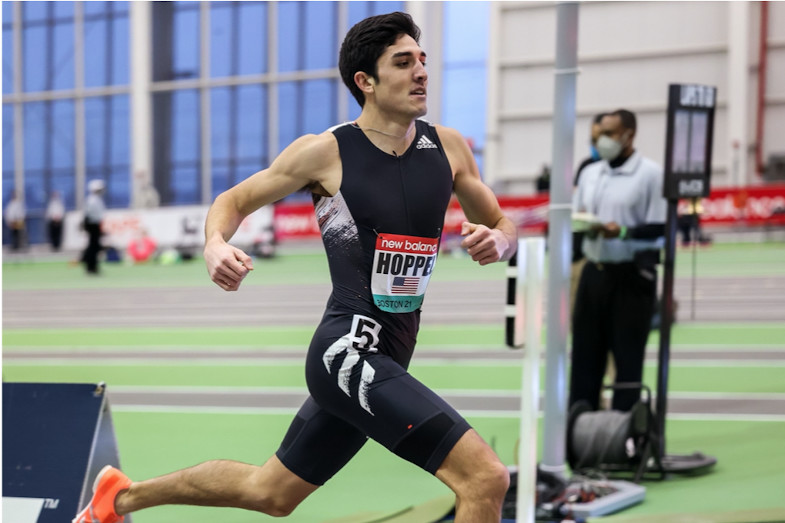
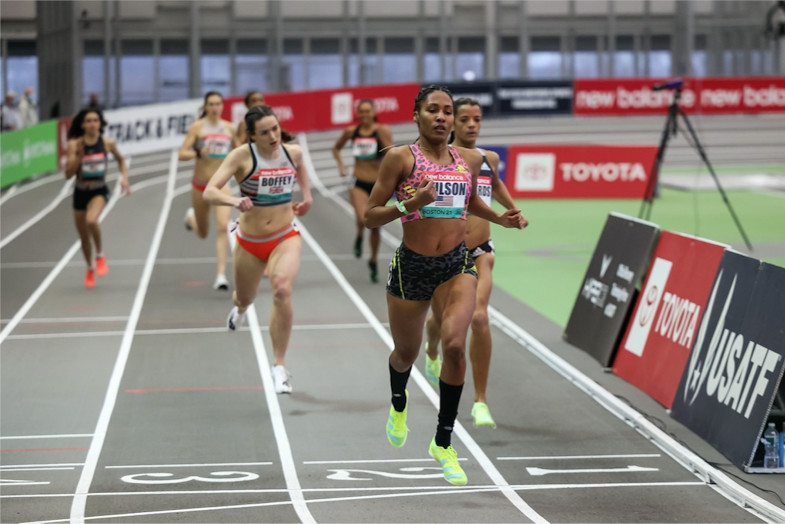
And the athletes made the most of this racing opportunity by breaking three American records and 10 national records total on Saturday.
Almost one year after shattering the American record in the mile at the Millrose Games, Elle Purrier broke another national record by winning the women’s two-mile in 9:10.28. Her time improves on the previous American record (9:18.35) set by Jenny Simpson in 2015. Purrier’s performance is also the third-fastest two-mile ever run in history. For Purrier, the victory follows a runner-up finish and 2:02.05 personal best in the 800 meters at the Prickly Pear Invitational in Phoenix, Arizona on February 6—her first race of 2021.
“I felt pretty confident going in, but you never know when you’re just training,” Purrier told journalists in a virtual mixed zone. “[Coach] Mark [Coogan] felt pretty confident about my fitness level, but after that [race] I’m feeling pretty good now.”
Looking back on her mile record a year ago, Purrier—who trains under Coogan with the New Balance group in Boston—said navigating the challenges of 2020 brought some silver linings to her process.
“Millrose was probably one of the biggest highlights of my career, and I think stopping after that was kind of a bummer because I felt like I was on a roll and the team was on a roll,” Purrier said in the mixed zone. “But we were able to kind of just wait it out this summer and get into some great training. And I went home and I find a lot of happiness there, and so I think that built this up to another great training block this fall and this winter.”
The 2018 NCAA mile champion followed the pacemaking set by Leah Falland, who brought the field through the first mile in 4:41. For the remaining laps, Purrier and steeplechase world champion Emma Coburn ran 1-2 in the front. With three laps to go, Purrier broke away from Coburn to seal the win and the record, running the final 400 meters in 63 seconds.
Five seconds behind Purrier, Coburn finished second in a personal best of 9:15.71. In the same race, Julie-Anne Staehli of Canada (9:22.66) and Amy-Eloise Markovc of Great Britain (9:30.69) broke national records for their respective countries.
Hoppel Sets a World Best for 2021
About 20 minutes later, Bryce Hoppel followed the momentum by running a world lead and U.S. national record in the 1,000 meters. The former Kansas Jayhawk and NCAA 800-meter champion broke the previous American record (2:16.76) set by the late David Torrence in 2014.
“It means everything,” Hoppel said. “It’s just something you dream of as a kid, and I couldn’t have done it without all the support that I have, my family, and my coach. They all make it possible. I mean, it feels awesome to get it. That was what I was going for.”
Behind Hoppel, Marco Arop of Canada finished second in 2:17.10, and Charlie Grice finished third in 2:17.20, a national record for Great Britain.
An American Record for Donovan Brazier
Two weeks after being forced to withdraw from the American Track League meet due to COVID-19 exposure, Donavan Brazier returned to the track with a vengeance.
The 2019 world champion lowered the American record by winning the men’s 800 meters in 1:44.21, more than two seconds ahead of runner-up Jamie Webb of Great Britain. Brazier set the previous American record (1:44.22) at the Millrose Games last year.
After Saturday’s victory, Brazier said his coach, Pete Julian, didn’t want him to hold back, and the strategy proved to be successful.
“Pete wanted me to go out and die. That was literally what he said, word-for-word,” Brazier said. “He said, ‘go out hard, see if you can hold it, and we’ll just gauge where you’re at from a fast pace.’ ... I don’t think I’m quite where I was at in Millrose last year, but I still think I’m in decent shape.”
Ajeé Wilson Returns to Competition
The women’s 800 meters featured an unexpected performance from a four-time world championship medalist and American record-holder.
Ajeé Wilson was a late entry to the meet after receiving treatment for a hamstring injury earlier in the week. Unlike her signature racing tactic of leading from the gun, Wilson ran behind the race-leader Kaela Edwards until the homestretch, where she sprinted ahead to finish first in 2:01.79.
“Not knowing exactly how things will play out with my body, I wasn’t trying to take any chances and felt a little more comfortable hanging behind,” Wilson said. “That’s something that we’ve been working on in practice. We’re maybe five strong in our group now, so that definitely prepared me for today and just being comfortable and also making sure I was still in a good position so when I wanted to move, I could.”
The performance is Wilson’s first race since winning the 800 meters at the 2020 USATF Indoor Championships on February 15, 2020. After Saturday’s race, Wilson said she didn’t feel comfortable traveling for competition last year amid the COVID-19 pandemic, as she interacts with people who are more at risk of catching the virus. Instead, she focused on training at her home base in Philadelphia. Her next competition will be the Texas Qualifier in Austin, Texas from February 26 to 27.
“Although things aren’t much better, I'm feeling a little more comfortable with the precautions we're all taking to be safe,” she said.
Behind Wilson, Sophia Gorriaran—a 15-year-old high school sophomore from Rhode Island—finished fifth in 2:03.94. One week earlier, Gorriaran notched the standard to compete at the 2021 U.S. Olympic Team Trials by running 2:02.44 against a professional field at the American Track League meet in Fayetteville, Arkansas.
Two National Records in the Men’s 1500
The men’s 1500 meters featured two national records. Oliver Hoare—who trains under coach Dathan Ritzenhein with the On Running pro group in Boulder, Colorado—kicked to victory in 3:32.35, a national record for Australia. Jake Wightman of Great Britain finished second in 3:34.48, and Sam Tanner—a sophomore at the University of Washington—finished third in 3:34.72, breaking the national record for New Zealand.
The women’s 1500 meters was won by Heather MacLean who out-paced Cory McGee in the final lap to win in 4:06.32.
Michael Norman Races the 400 Meters for the First Time in a Year
For the first time since the 2019 World Championships in Doha, Qatar, track fans got to see Michael Norman compete in his signature event, the 400 meters.
The former USC Trojan and NCAA champion—who broke the world record in the indoor 400 meters (44.52) at the NCAA championships in 2018—battled with his training partner Rai Benjamin down the homestretch to secure the victory in 45.34. Benjamin finished second in 45.39.
“The instinct just kicked in,” Norman said. “We're very competitive at practice, especially when it comes to competition. So having that little fun practice rivalry going on, I couldn't have Rai beat me in the race, but he's an amazing competitor, so it was a lot of fun.”
In 2019, Norman failed to make the world championship final in Doha after suffering from an injury in the semifinals. He raced once in 2020—9.86 in the 100 meters at a COVID-adjusted meet in Fort Worth, Texas last July. After a long hiatus from competition, Norman said he felt pleased with the effort on Saturday.
“I’m feeling good,” Norman said. “There's a lot of work that needs to be done, but the main purpose of today was just to go out and compete, have fun and to kind of knock the cobwebs off because it's been over a year since I’ve run that distance.”
Another National Record for Shaunae Miller-Uibo
In her second meet of the year, Shaunae Miller-Uibo broke another Bahamian national record by running 50.21 to win the women’s 400 meters. The time makes her the eighth-fastest performer all-time indoors. The 2016 Olympic champion achieved the mark two weeks after breaking the national record in the indoor 200 meters at the American Track League meet, where she ran a personal best of 22.40.
World record-holder Keni Harrison also ran a world leading time on Saturday. The 2018 world indoor champion won the 60-meter hurdles in 7.82 seconds.
In the same race, Sydney McLaughlin finished last in 8.56. The race was McLaughlin’s highly anticipated return to the track after earning silver in the 400-meter hurdles and contributing to Team USA’s winning performance in the 4x400-meter relay at the 2019 World Championships. Saturday’s race was McLaughlin’s first time contesting the event since 2015, when she was in high school.
After the race, she said the race was an exercise in training with her non-dominant leg over hurdles. “It’s something we've been thinking about for awhile, just being able to hurdle efficiently with both legs, and what better way to do that than the short hurdles?” McLaughlin said. “It's such a short race and such a fast-paced race that you can really work on that technique. It was good to get into a fast race and really be forced to use it without being able to think that much.”
Noah Lyles Keeping His Eyes on Tokyo
Noah Lyles did double duty in the sprints on Saturday. The 2019 200-meter world champion ran the first round of the 60 meters in 6.76 seconds and returned to the track to contest the 200 meters. Holding off competitors Deon Lendore and Jaron Flournoy, Lyles made it to the finish line in 20.80, well off the typical winning times in his signature event.
While Lyles admitted he wasn’t pleased with the time (and his body language conveyed as such), he still took the experience as a lesson moving forward in his bid to represent Team USA and win more medals at the Tokyo Games this summer.
“We’ve been training for a lot of strength and endurance and it obviously paid off because I was able to come into the 60, warm up, and then I was able to shake off any type of fatigue I had from it,” Lyles said. “I still feel really good, even coming off of the 200, like I could run three more. So I actually feel strong, which is really what we were trying to get out of training, and coming here was to see how much speed we got in the tank. To be honest, it actually proved that what we’re doing is working.”
Trayvon Bromell Crosses First in the 60 Meters
After battling a series of injuries for the past few years, Trayvon Bromell returned to his winning ways on Saturday. After leading the 60-meter semifinal in 6.53, the 2016 world indoor champion won the final in 6.50 by breaking away from his competition in the second half of the race. Runner-up Demek Kemp followed in 6.65.
Looking back on the challenges of the past few years, Bromell credited his spirituality with his return to form and a newfound motivation.
“I'm here to run and make an impact on kids, adults who may have lost hope,” Bromell said. “I feel like my testimony of what I’ve been through gives people that, and it shows the sport in another light than just winning medals or running fast times. That’s all good, but what impact do you leave? I’m trying to be impactful, not impressive.”

by Runner’s World
Login to leave a comment
Dathan Ritzenhein talks about becoming head coach of On Athletics Club
The three-time Olympian outlines his journey from success on the track and roads to becoming head coach of On Athletics Club
I was ready to move on – my body had just about had it!
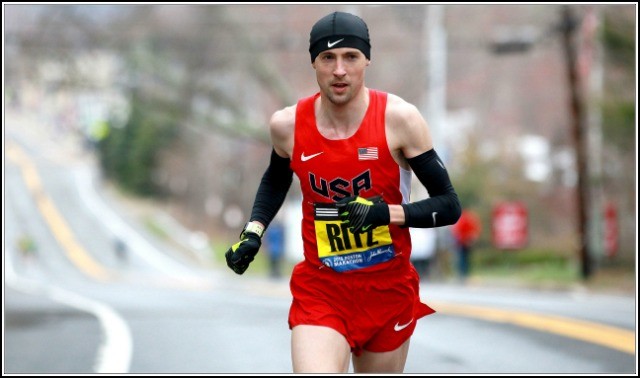
I was happy that I got just about everything I could out of it. I had some really significant foot problems towards the last two years of my career and I found it pretty hard to do a lot of really good quality in training so, when the opportunity from On came up, I was really excited for it.
I can see why a lot of athletes could really struggle with retirement. For me, I was fortunate to go into a situation and a position where I could still have a lot of involvement with the sport. You’re not pushing your body but you’re there and involved with the thing that you love.
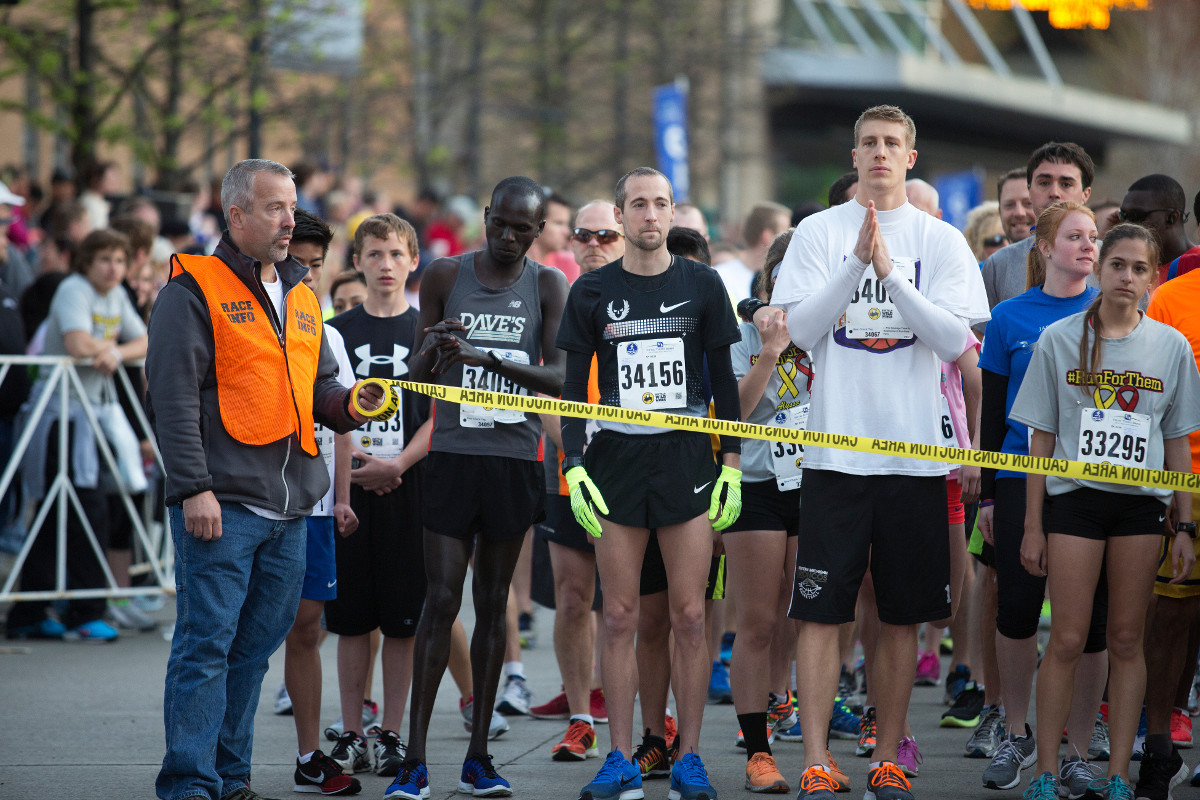
For 16 years I was a professional runner and before that at college and high school. It’s really all I know and a lot of athletes are like that.
It’s not really a job, it’s a lifestyle, and with every workout you take that attitude home so when athletes finally do make that call and go into retirement there’s a void sometimes.
If you don’t have a passion – whether it’s your work, your family, a hobby – something that you can put that same energy and devotion into, it can be difficult.
There’s an old quote that says ‘athletes die twice’ and it’s true. It’s like a little part of you dies when you know you’re never going to be at the peak of your physical prowess again.
I had come to that realization already but I do miss the feeling of doing the incredible stuff that you think ‘man, not many people can do that’. Already that seems far away.
Coaching is the next best thing to racing
We have eight runners in the On team so you’re managing varying degrees every day but you have the same emotional highs and lows that you have as a runner.
If someone runs really well then the high is really high but then you also have to manage it if someone is hurt and there’s that low.
The runners thrive off an energy that I bring so I can’t bring anything negative.
If someone is not feeling good then I’ve got to help that person but then I’ve got to bring positivity to the person that’son fire and doing really well. That part is a balancing act which is maybe a little different from life as an athlete.
The job is much more consuming than I’d realised
There’s so much stuff that gets done behind with the scenes which, as an athlete, you don’t even really know is going on. Dealing with the agents, the meets and all of that stuff – it just gets done or, as a runner, you pay your agent to deal with a lot of those things.
There’s a misconception that you write the training plan, you’re at the track and then it’s done – but it’s not really like that!
It’s such a rewarding job
It (running) was my real passion for 25 years. Eventually the body is done but being able to help others do it, see others do it…
As a long career goes on you maybe get numb to some emotions. Because you’ve been around it for so long, you’ve doneso many things, you kind of forget the first-time emotions of something really exciting and to see that has been rewarding for me.
Most of these guys and women are coming out of college and there’s lot of unknown. Then throw that on top of the COVID world where there’s more unknown – it’s great to be able to help guide them and to see the excitement when things go well.
This is a special opportunity for these guys and I’m happy that I can be part of it.
by Euan Crumley
Login to leave a comment
Runners sponsored by smaller companies might be in a better position than those who are signed by major brands
Earlier this week, the Swiss running shoe company On announced that it was starting an elite training group in Boulder, Colorado, called the On Athletics Club. It’s safe to say that this doesn’t seem like the most auspicious time to invest in professional running. Even though the Diamond League—the world’s premier track and field competition circuit—is scheduled to begin an abridged summer season on Friday, this year has seen an unprecedented number of race cancellations and it’s difficult to predict when the bleeding will stop.
International Olympic Committee President Thomas Bach has already gone on record saying that the Tokyo Games, which have been postponed to summer 2021, will not be delayed a second time. If they can’t be staged next August, the Olympics will be canceled outright, thus depriving track athletes of their quadrennial moment in the sun.
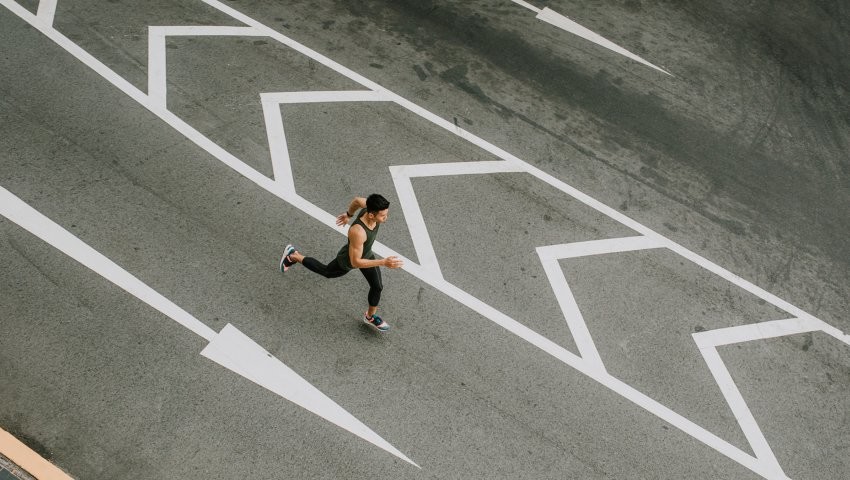
According to Steve DeKoker, On’s Global Sports Marketing Manager, the company has long been looking to develop an elite running team and the Boulder-based group represents the most significant move in that direction to date. For now, the On Athletics Club consists of eight runners, all of whom are in their 20s and were standout NCAA athletes (the University of Colorado’s Joe Klecker and the University of Wisconsin’s Alicia Monson are the headliners).
Recently retired Olympian Dathan Ritzenhein will act as coach. It has been disclosed that these athletes will be signing multi-year deals with no reduction clauses (i.e. performance quotas)—a risky move, perhaps, but one that On might currently be well-positioned to make thanks to a potential pandemic-inspired uptick in recreational running.
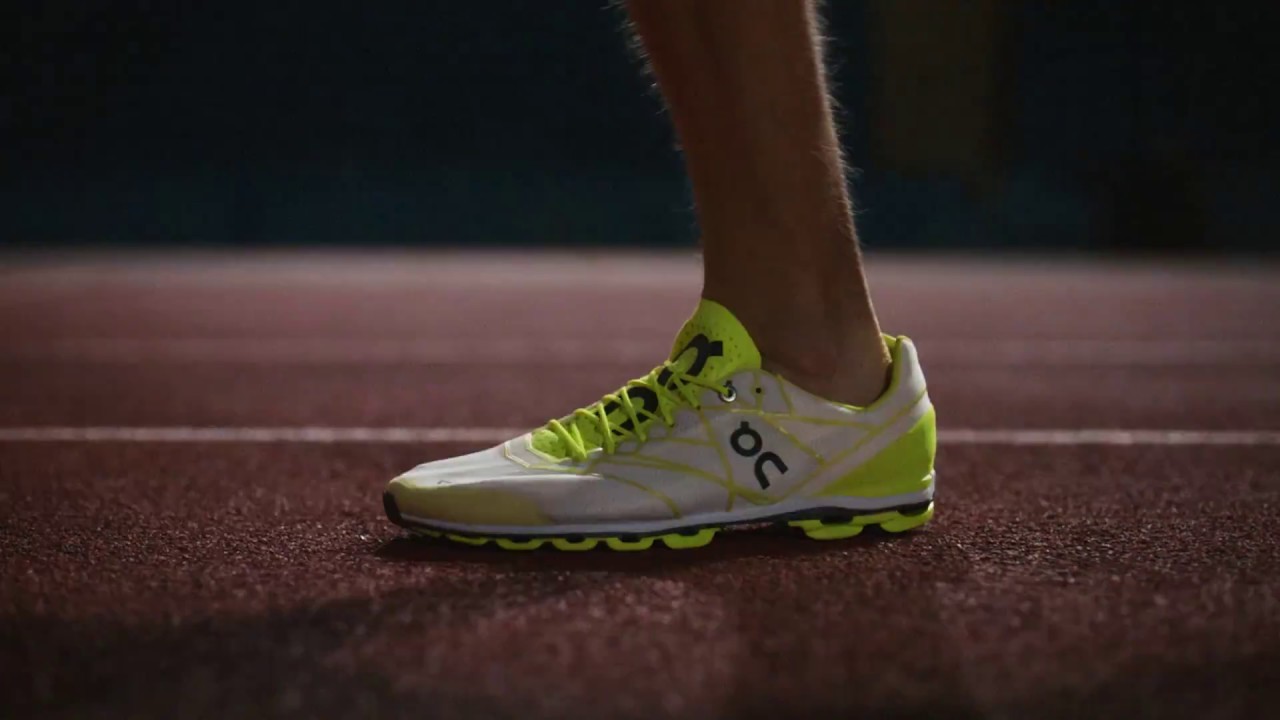
“Running is kind of experiencing this second boom,” DeKoker told Letsrun.com. “We’ve got all these folks at home who are struggling with different issues, but running is a viable activity for them. Whereas if you’re Nike, and you’re in 50 different verticals, running might be a positive one, but you’ve got a bunch of other sports that are hemorrhaging right now.”
There has been some evidence to bear this out. Nike has reported a 38 percent decline in total revenue through May 31. More specifically, last week, the market research company NPD published an article noting that prominent brands (Nike, Adidas, Under Armour) had an overall sales decline in athletic footwear in the first half of 2020, while several running-focused shoe companies had fared conspicuously well.
Hoka One One and On, in particular, saw year-over-year sales increases of 75 and over 50 percent, respectively. (An On representative has confirmed this, and added that the brand had recorded its highest ever sales month in June 2020.) Matt Taylor, the co-founder and CEO of the independent running apparel brand Tracksmith, told me that “there’s been a noticeable uptick in people running over the last few months,” and that Tracksmith was “seeing this trend reflected” in its business.
While the running industry will never be entirely insulated from the state of the overall economy, there is some logic to the notion that the sport is well-suited to weather a financial downturn. To use DeKoker’s term, running is a “viable activity” for many people because it is relatively cheap, accessible, and offers both physical and mental health benefits during times of uncertainty.
The most recent running boom occurred during the years immediately following the Great Recession; starting around 2008, there was a continual increase in running event participation, culminating in 2013, when a record 19 million runners took part in U.S. road races.
Of course, from a running perspective, one of the uniquely cruel aspects of the COVID-19 recession is that the pandemic has precluded the staging of most mass participation events. The New York Road Runners, the largest non-profit running events company in the United States, laid off eleven percent of its employees and furloughed an additional 28 percent in July. Hence, any discussion about how the pandemic might end up “benefiting” the running industry in shoe or apparel sales must be weighed against this freeze of running events.
For professional runners, meanwhile, the cancellation of big-ticket races signifies a loss in prospective appearance fees and prize money. Some athletes might also be contractually obligated to run a pre-set number of races, which, needless to say, has not been so easy in 2020. That’s why this has been the summer of intrasquad competitions, in which training partners take part in de facto time trials that have been spruced up just enough to qualify as official meets. While some of these events have yielded impressive performances—most notably Shelby Houlihan, of the Bowerman Track Club, breaking her own American record in the 5,000-meters—there have also been farcical scenarios where world-class athletes phoned it in, presumably so that they can reach their race quotas. (Last week, reigning Olympic 1,500-meter champion Matthew Centrowitz “raced” an 800... and ran 3:08. His personal best in the event is 1:44.)
It’s not a coincidence that the most prominent examples of these sham races have involved Nike athletes. After all, the Oregon-based company sponsors far more runners than any other brand. They have the funds to do it, but casting a wide net might also make it more difficult for Nike to offer elite runners the contractual perks of smaller, running-focused companies like Oiselle, On, and, recently, Tracksmith. For now, reduction clauses still seem to be the norm for the typical Nike track athlete. (A Nike spokesperson told me that the company does not comment on athlete contracts.)
Hawi Keflezighi, an agent whose clients include his brother Meb Keflezighi and recent U.S. Olympic Trials Marathon champion Aliphine Tuliamuk, agreed that this was likely to be the case. “I think Nike deserves credit for all the athletes and events that they sponsor, but at the same time, within that business model, if you have a lot of athletes, you can’t be as flexible as when you only have five or ten athletes on your roster,” Keflezighi, whose brother was a Nike athlete for years before signing with Skechers in 2011, told me. He added that, while it’s typical for companies to reassess which athletes they want to sponsor at the end of an Olympic cycle, the current uncertainty surrounding the fate of the Games, and looming recession, mean that conditions for athletes are even more cutthroat than usual.
“I think the bigger brands definitely have tougher decisions to make, just because they have a bigger investment overall,” Keflezighi says. “The athletes with those brands, especially if they are not medal contenders or in a great position to make the US Olympic team—under this environment, those athletes’ contracts are a little bit more vulnerable. If you have a smaller roster of athletes, you might be able to say, ‘Hey, you know what? Let me give that athlete an extra year or two.”
DeKoker echoed this sentiment. “Obviously, performance is going to be a key element, but it’s not the only element with On,” he says. “I do think that, at some of these other companies, it’s much more of a numbers game and unfortunately some athletes are going to be on the losing end of that.”
What will the “numbers game” look like in a worst case scenario where next year’s Olympics ultimately do get canceled? With any luck, we won’t get to find out.
by Outside Online
Login to leave a comment
Nick Willis, Emma Coburn, Cory McGee, Ce’Aira Brown And Morgan McDonald Among Those Competing At The Music City Distance Carnival
Putting on an invitational track meet in the United States is hard in the best of times, but is nearly impossible during the current COVID-19 pandemic. Meeting the USA Track & Field requirements for a COVID-safe meet are very difficult, never mind getting adequate sponsorship in the middle of a recession, attracting the attention of top athletes who are hunkered down at home just trying to stay safe, and having to stay within state and local regulations for in-person gatherings. Large crowds aren’t permitted anywhere, so you can forget about revenue from ticket sales.
But Dave Milner of the Nashville Track Club is an especially determined meet director. The 49 year-old coach and former athlete, originally from Leeds, England, was determined to hold the 18th edition of the Music City Distance Carnival this year, and do it at a high level despite the crisis. After several delays, countless hours of work, and a little bit of good luck, his meet is set to go this Saturday in Nashville and will feature top-level athletes with Olympic or World Championships credentials like Ben Flanagan of Canada; Nick Willis of New Zealand; Edose Ibadin of Nigeria; Morgan McDonald of Australia; and Emma Coburn, Cory McGee, and Ce’Aira Brown of the United States.
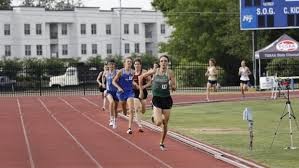
Milner started the process of re-thinking the meet when the COVID crisis first struck in March.
“The meet is typically end of May, beginning of June,” Milner told Race Results Weekly in a telephone interview today. He continued: “When all of this stuff happened in early March I was still optimistic that I could get it done that weekend. Nobody knew then how bad it was going to be.”
But as the virus spread in the United States, especially in the south, keeping the meet on it’s normal date became impossible. Milner first tried for a one-month delay, thinking at the time that it would be adequate.
“I pushed it back to the end of June, still thinking, yeah, we can have the meet,” Milner said. He was in communication with USA Track & Field about the new requirements for battling the spread of COVID and thought that staging the meet was doable in that time frame. He had a core set of training groups which had traditionally sent athletes to the meet including Team Boss in Boulder, the Atlanta Track Club, and the Under Armour District Track Club in Washington, D.C., and he felt he could count on those athletes for 2020.
But Milner had another big problem: securing a venue. The meet had usually been staged at Vanderbilt University, but that wasn’t an option this year.
“I was having a hard time trying to find a venue,” Milner said. “Vanderbilt, where the meet usually is, didn’t really want to have anything to do with it. I foresaw that early and started speaking to other venues as early as April.”
Eventually, Lipscomb Academy agreed to host the meet, and Milner decided to push the date back much further to increase the chances that athletes would be in shape and that he wouldn’t have to delay it again. He also wanted his meet to fall into a sequence with the two other meets planned for the southern region, Sir Walter Miler in Raleigh, N.C., (scheduled for August 7, but ultimately cancelled), and the Ed Murphey Classic in Memphis (scheduled for August 22).
Milner also caught another break. Swiss shoe company On, which just launched a new USA training group in Boulder under coach Dathan Ritzenhein, decided to come on board as a sponsor. To give his new sponsor the best exposure, Milner wanted the meet to have a free, live broadcast. Working with timing and meet production consultant Cody Branch from PrimeTime Timing, the meet will be broadcast live via YouTube with commentary (link to be posted on the meet website at runmcdc.org).
“We really felt there was an opportunity to hit this out of the park from a production stance,” Milner said enthusiastically. He added: “It will be live and free, which I think people will be thrilled about.”
On Saturday, access to the track will be tightly controlled. The athletes (except high school athletes) have to demonstrate that they have had two negative COVID tests since August 8 in order to compete, and the tests have to be at least 24 hours apart. Athletes must present proof of the negative tests before they will be allowed to compete, and most are emailing those results in advance of their arrival to the track at Lipscomb. Event staff and officials will have to wear masks at all times, and the athletes will have to wear masks while they are not warming up, competing or cooling down. The races are spaced out wider than usual on the schedule because competitors must leave the track completely before athletes running the next race are allowed onto the track. Milner also has to follow state guidelines to control the total number of people who are in the stadium.
“As far as the total number of people at the event, we’re allowed 250 at any given time,” Milner said. “We’re asking people not to show up for their event more than 90 minutes beforehand. And we’re asking people after they run to leave, please. We’re not encouraging people to stick around and watch the meet.”
Milner has organized some excellent races for Saturday, despite the lack of prize money. Many athletes will be trying to earn qualifying marks for next year’s USA Olympic Team Trials (standards are here: https://bit.ly/3kDXDlb). The two 1500m races may be the best with top athletes like McGee, Yolanda Ngarambe of Sweden, Coburn, Katie Mackey and Emily Lipari in the women’s section, and Abraham Alvarado, Willy Fink, Sam Prakel, Ollie Hoare and McDonald of Australia, and Carlos Villarreal of Mexico in the men’s. Milner is hoping for the fastest time on U.S. soil for this year (currently 3:34.53 by Britain’s Josh Kerr in Newberg, Oregon, on July 31).
“That race is stacked,” said Milner of the men’s 1500m. “We’re pacing it for 3:33-high pace.”
by Let’s Run
Login to leave a comment
No runner had ever run a mile in less than four minutes in the state of Colorado—until now.
In a certified intrasquad time trial on Monday, August 3, Olli Hoare and Joe Klecker, of the newly formed On Athletics Club, became the first two people to ever run a sub-four-minute mile in Colorado, finishing in 3:56:8 and 3:58:4, respectively. This time trial came after only a month of team workouts for the newest pro running group.
Klecker—a standout at the University of Colorado-Boulder, who took second at the 2019 NCAA cross country championships—was the first to sign with the team earlier this summer. On worked to set up the new group around Klecker, considering his input on where the team should be based, who should be the coach, and who else should be on the team.
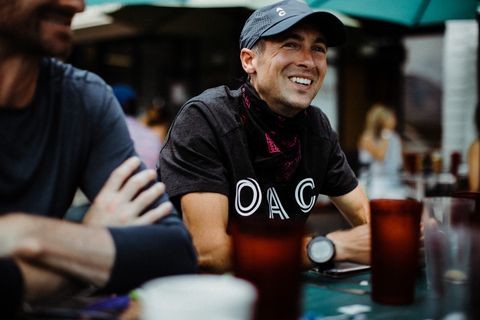
“[On’s] commitment to this team and to developing top of the line footwear stands out,” Klecker told Runner’s World. “We’ve been going a month and they’ve already sent their product development team out to Boulder, we’ve been on video calls, and they’re listening to what we have to say about the product and team and implementing them. They just rolled out their first spike, and we used their new carbon shoe on the track [Monday night], not the one on the market so far.”
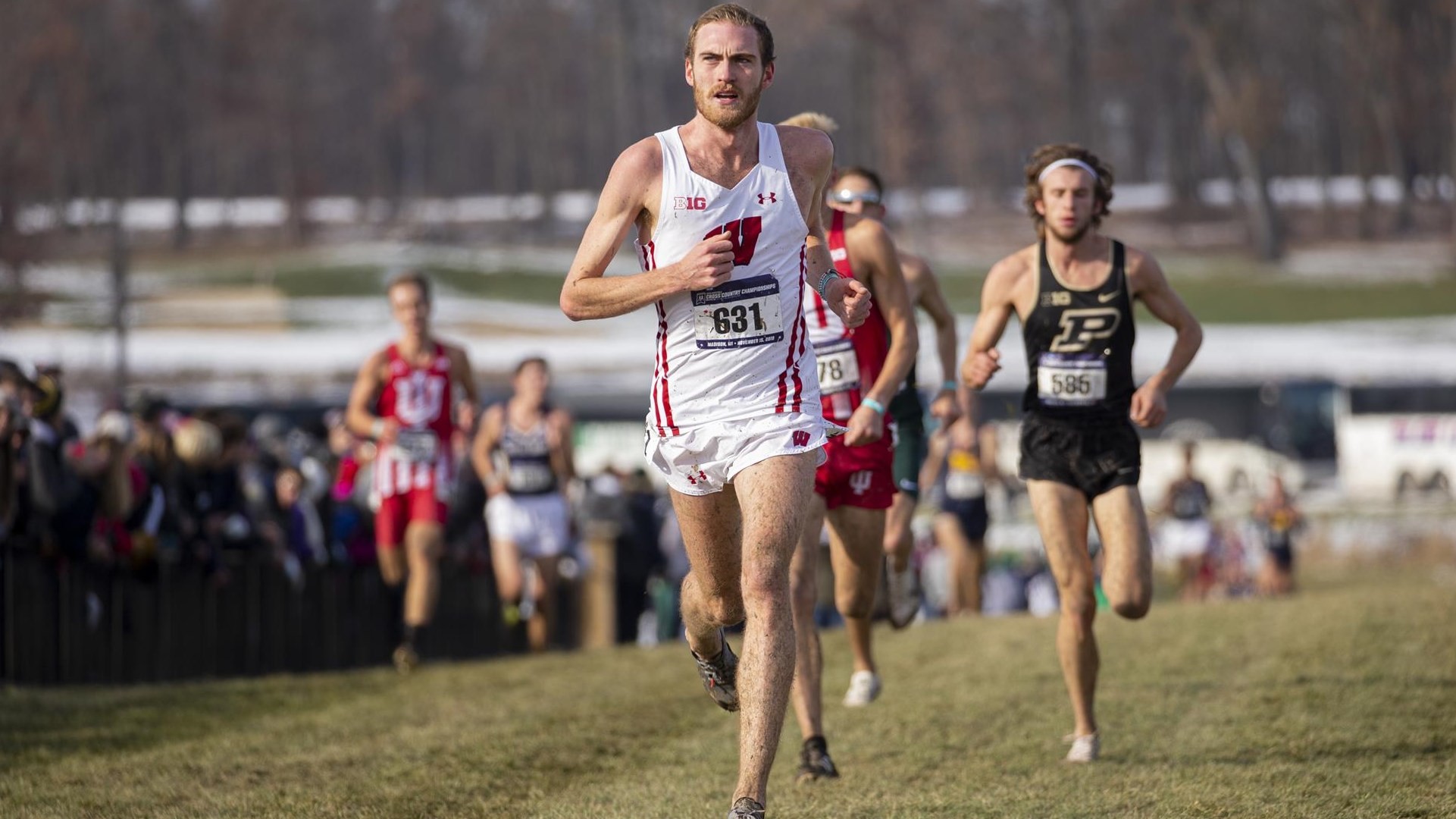
The group is coached by three-time Olympian Dathan Ritzenhein, who retired from pro running earlier this year. Ritzenhein moved his family from Michigan to Boulder, Colorado, to take on the coaching role.
by Andrew Dawson
Login to leave a comment
Dathan Ritzenhein Retires at Age 37
Dathan Ritzenhein, a high school prodigy who went on to become a two-time global medalist, three-time Olympian, five-time national champion and a 2:07 marathoner, has decided to retire after 16 years of professional running.
The 37 year-old, who grew up in Rockford, Mich., and competed for the University of Colorado during his collegiate career, decided that he had accomplished all of his main goals and the time was right to shift his focus away from competitive running.
“I guess I’m not necessarily 25 and retiring in my prime,” Ritzenhein told Race Results Weekly by telephone from his Michigan home yesterday just after finishing a hard 10-mile run. He continued: “I have things that I wish that I have done in my career, but I’m also very satisfied, too. I think right now it’s something that I thought a lot about the last year.
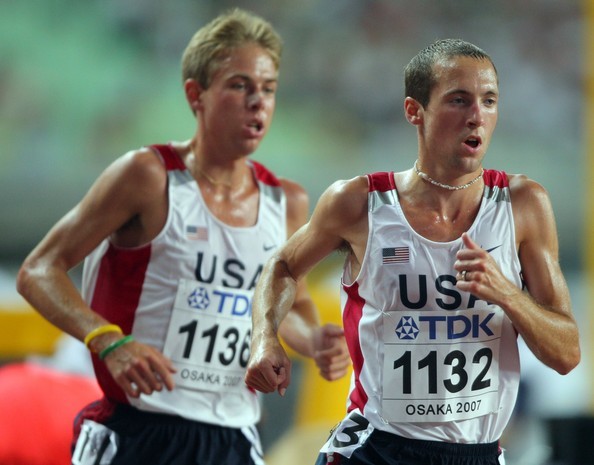
I’ve had a lot of nostalgic moments, looking back a lot more than looking forward. So, I don’t know that I had a lot more goals that I was looking to accomplish.”
While still competing for Colorado, Ritzenhein made his first of three Olympic teams in 2004, despite finishing only 22nd at the USA Olympic Trials in the 10,000m. Ritzenhein made the team because he was one of only five athletes entered who had the Olympic “A” standard of 27:49.00 (he had run 27:38.50 in his debut at the distance in April, then a U.S. collegiate record). Trials winner Meb Keflezighi opted for the marathon (where he would win the silver medal) and Bob Kennedy dropped out. That left Abdi Abdirahman, Dan Browne (who would also compete in the Marathon) and Ritzenhein to run the 10,000m in Athens, the three remaining finishers who had the standard. Running on a badly injured foot in Athens, Ritzenhein failed to finish.
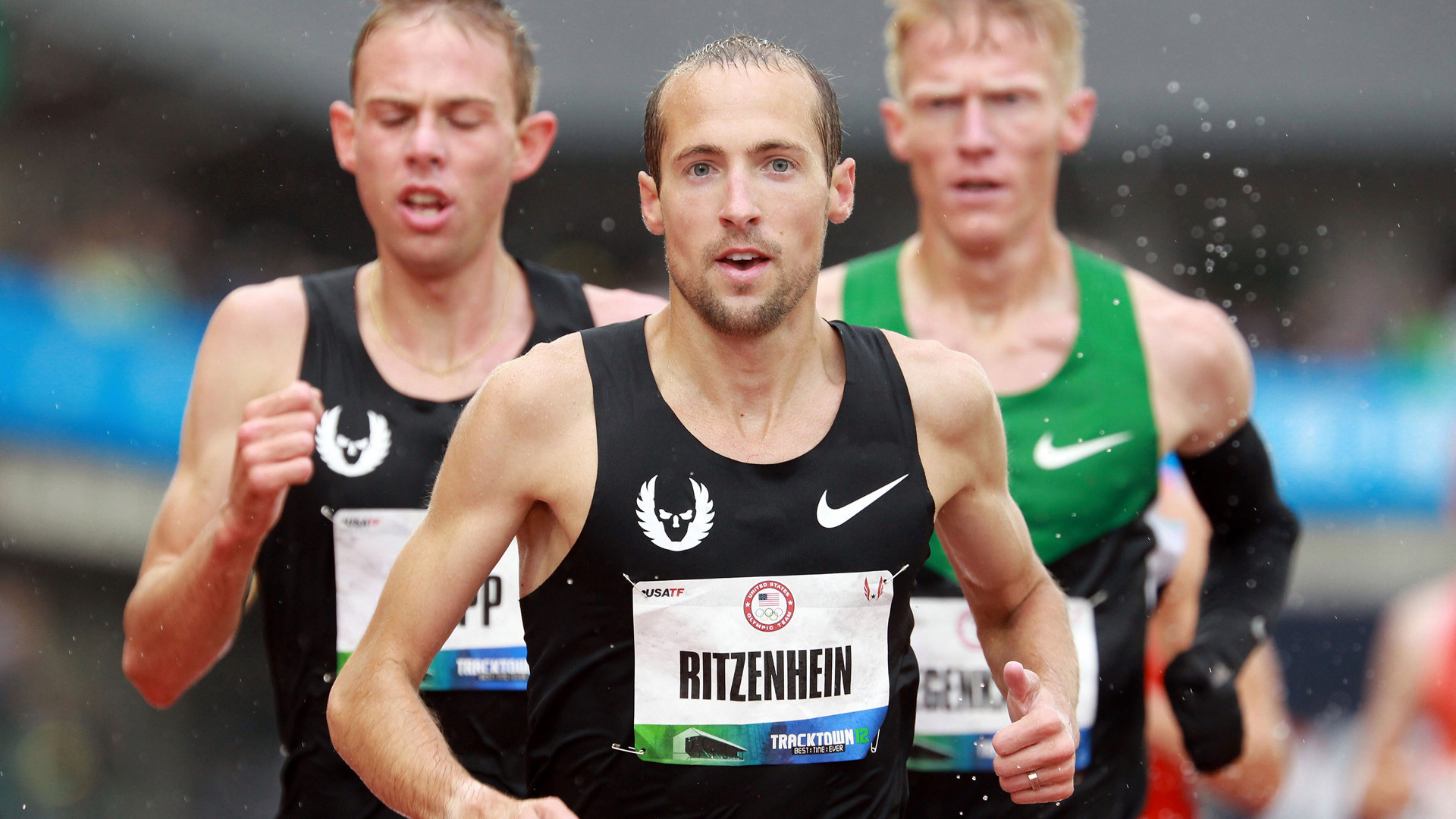
“My first one was a miserable experience where I hobbled my way on,” Ritzenhein said of making his first Olympic team. He continued: “I made the standard, and just not many people had it. Bob Kennedy had it and Meb, and Dan Browne and Abdi. Meb ended up running the marathon and Bob Kennedy dropped out of the 10-K, and I knew I just had to finish the race.”
Ritzenhein made his professional racing debut at the Boclassic 10-K in Bolzano, Italy, on December 31, 2004, the day after his 22nd birthday. He pushed the pace with two laps to go in the 8-lap race and finished third behind Sergey Lebed of Ukraine and Stefano Baldini of Italy (Baldini was the reigning Olympic Marathon champion). Ritzenhein had signed with Nike just prior to the Athens Olympics, and Brad Hudson became his coach. He won both the USATF cross country and 10-K road running titles in 2005, and under Hudson’s coaching jumped right to the marathon in 2006, making his debut at the New York City Marathon. It was a controversial decision, and after a 1:05:35 first half he finished 11th in 2:14:01, calling the discomfort he endured in the last four miles “undescribable.”
Almost exactly a year later, Ritzenhein returned to New York for the 2008 USA Olympic Trials Marathon (which were held in November, 2007), and he finished second to Ryan Hall in 2:11:07, a personal best. He would go on to finish ninth in the Olympic Marathon the following year in Beijing, and it looked like Ritzenhein was going to focus mainly on the marathon.
But unlike other track runners who moved up, Ritzenhein wasn’t so quick to abandon the track, cross country or road races below the marathon distance. He used his marathon strength to great effect in training, and his track running was never better. In one of his best years, 2009, he set the American record for 5000m of 12:56.27 (since broken), ran a 10,000m personal best of 27:22.28 when he finished sixth at the IAAF World Championships 10,000m, and won a bronze medal at the IAAF World Half-Marathon Championships, running 1:00:00. He was also the runner-up at the USATF championships for both the 10,000m and half-marathon, and finished 10th at the London Marathon.
“That’s what always drove me,” said Ritzenhein. “I would always have these goals and you’d have these valleys between them. Really high moments, like the American record, bronze medal at the world junior championships (in cross country), or the world half-marathon championships. Those are the races where you just feel invincible.”
But he was not invincible. Ritzenhein suffered numerous injuries throughout his career (he recalled having over 40 MRI’s), and had to have surgeries three times. He missed most of 2011 due to a surgery to his right Achilles tendon, but his long recovery (made even longer by a lingering infection) set him up for his most dramatic year, 2012.
“After three years away from the track I had doubts,” Ritzenhein said. “I poured it all out there. At the Olympic Trials it was an epic day. I didn’t have the standard and quite a few people in the race did.” He added: “It seemed like an impossible task.”
Ritzenhein said that he will always be a runner, and that he’ll still run hard sometimes (he averaged a six-minute pace on yesterday’s 10-miler, he said). He already coaches a few athletes, including marathoner Parker Stinson.
“This isn’t the end for sure,” he said. “This is all I know. The sport of running is my passion and my love.” He added: “I’m looking forward to continuing to give back to the sport; coaching is a passion of mine. I love writing, to talk to people, and give people advice. It’s in my DNA. I’ll always run. It’s just something I can’t go without.”
by David Monti
Login to leave a comment
Galen Rupp and Jared Ward, who placed first and third at the 2016 U.S. Olympic Team Trials – Marathon lead the way Saturday, headlining a deep and talented men’s field that brings together the best of the best
The U.S. Olympic Team Trials – Marathon are the second stop on the 2020 USATF Running Circuit. The top three finishers Saturday will represent the United States as the Olympic Games in Tokyo this summer. Fans can tune-in for the live broadcast beginning at 12:00pm ET on NBC or NBC Sports Gold, with the men’s race beginning at 12:08pm ET and the women’s race starting at 12:20pm ET.
While Rupp had to drop out of the Bank of America Chicago Marathon in October, he still enters Saturday’s race as the prohibitive favorite. Rupp ran the top qualifying mark at the Prague Marathon in 2018, finishing in 2:06:07, while earning fifth at the Bank of America Chicago Marathon that fall in 2:06:21. In addition to earning bronze in the marathon at the Olympic Games in Rio, finishing second at the Boston Marathon in 2017 and winning in Chicago in 2017, Rupp has unmatched big-race experience against the field.
The Portland-based runner recently ran a tune-up half marathon in Arizona, finishing in 1:01:19, proving he’s in excellent shape. Not to be outdone, Ward also has some impressive finishes to his name after finishing third in Los Angeles four years ago.
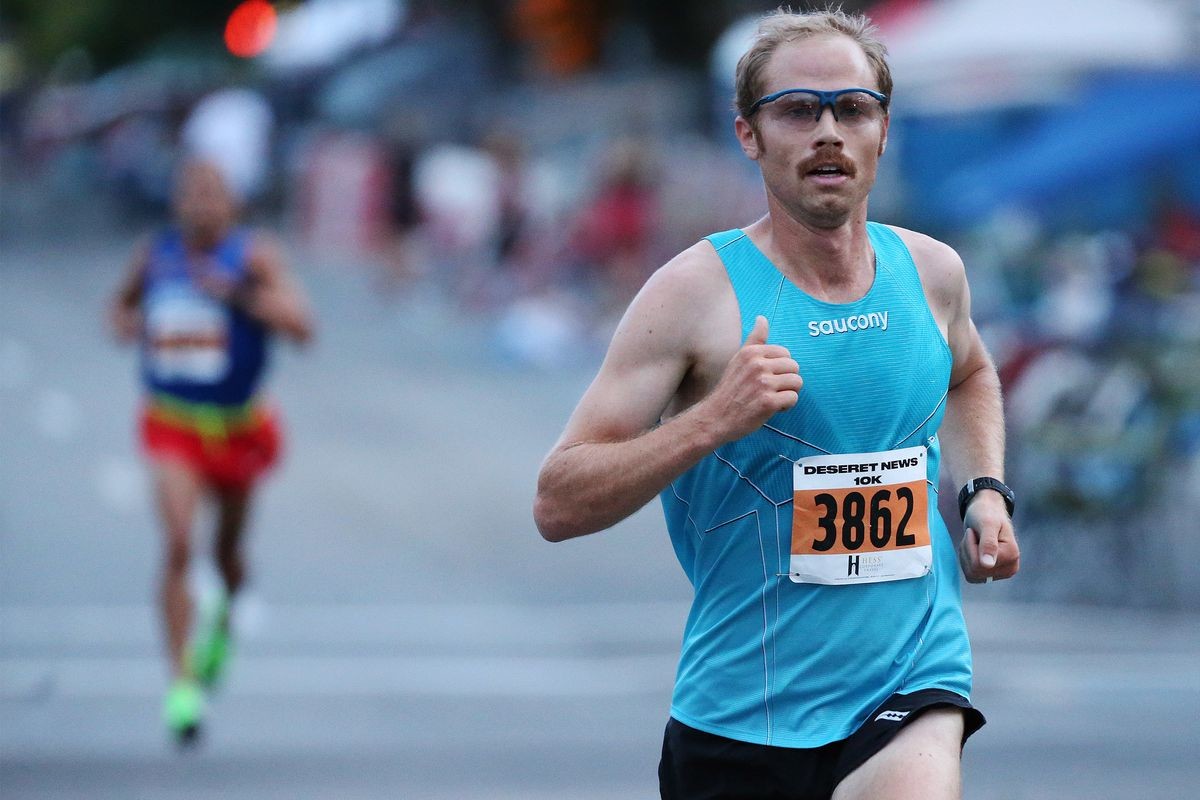
The Utah-based standout placed sixth at the Olympic Games in Rio and has consistently shown his ability to finish well up the results at major events.
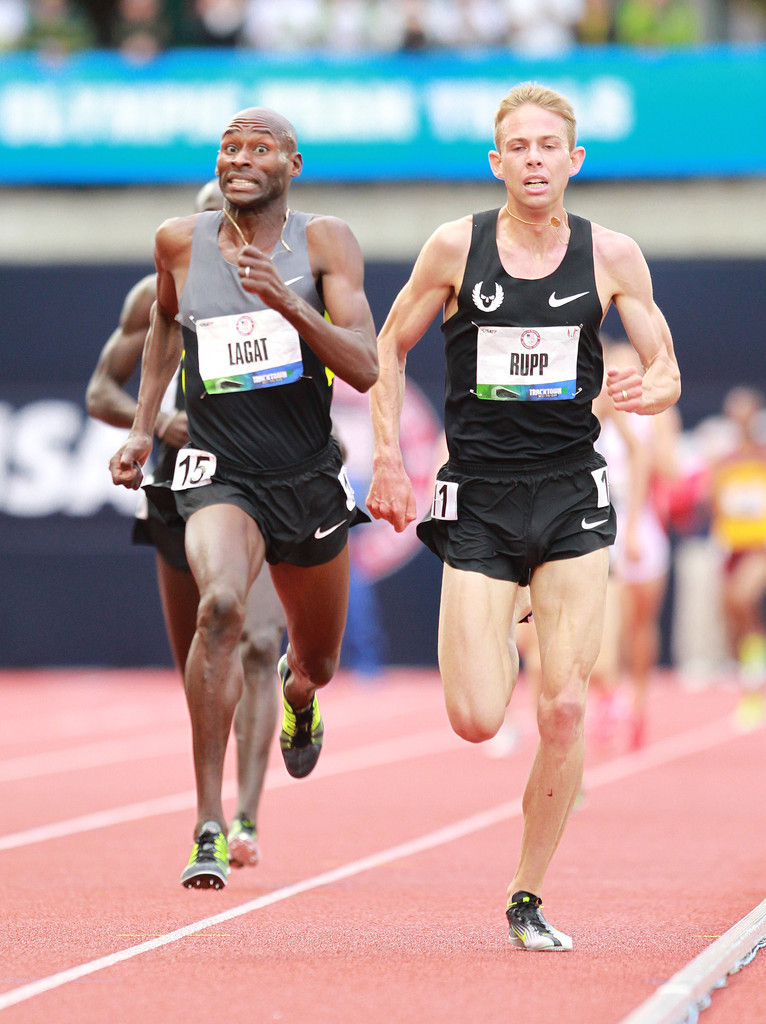
Ward ran to an eighth-place effort at the Boston Marathon last spring, finishing in 2:09:25, while earning top American status at the TCS New York City Marathon in November with a sixth-place effort. Recently running 1:01:36 at the Aramco Houston Half Marathon and finishing as the top American gives Ward plenty of momentum heading into Atlanta. On paper, Leonard Korir is the next top challenger.
While Korir has only run one marathon, it was a great performance. At the Amsterdam Marathon last fall, Korir ran the second fastest qualifying mark of Saturday’s field, placing 11th overall in 2:07:56, making him the top American performer over the distance in 2019. Along with his success on the USATF Running Circuit, as well as on the track, Korir certainly has the ability to push for the win. Next up is Scott Fauble.
The HOKA ONE ONE Northern Arizona Elite star has proven himself time and time again the past two years, quickly rising the ranks of American marathoning. Fauble placed seventh at the TCS New York City Marathon in 2018, finishing only four seconds behind Ward, while placing as the top American at the Boston Marathon in 2019 in 2:09:08, while beating Ward.
The trio of Jacob Riley, Jerrell Mock and Parker Stinson are also prime to put themselves in contention over the final miles, pushing for a spot on the Olympic team. The trio finished ninth, tenth and eleventh at the 2019 Bank of America Chicago Marathon. Riley has the most experience of the group and his 2:10:53 effort in Chicago rank him as one of the top five fastest in the field Saturday.
Two other notable top contenders are Elkanah Kibet and Shadrack Biwott. Kibet has quietly become one of America’s best marathoners, having placed 11th at the Boston Marathon in 2019 and eighth at the 2018 Boston Marathon. Owning a personal best of 2:11:51, he ranks well in Saturday’s field.
The trio of Matt Llano, Andrew Bumbalough and Chris Derrick are also looking to make an Olympic-sized result Saturday. Bumbalough enters with a 2:10:56 best coming at the 2019 Bank of America Chicago Marathon.
Another trio of incredibly experienced veterans are also entered and will be looking to make one more push for an Olympic berth. Bernard Lagat, Abdi Abdirahman and Dathan Ritzenhein are all American distance running legends. Each has qualified for at least three Olympics and represented the United States extremely well on the world stage.
by Scott Bush
Login to leave a comment
2028 US Olympic Trials Marathon
Most countries around the world use a selection committee to choose their Olympic Team Members, but not the USA. Prior to 1968, a series of races were used to select the USA Olympic Marathon team, but beginning in 1968 the format was changed to a single race on a single day with the top three finishers selected to be part...
more...Dathan Ritzenhein is Withdrawing from 2019 Chicago Marathon
Dathan Ritzenhein‘s injury woes continue. On Monday, Ritzenhein, the fourth-fastest US marathoner ever, announced that he is withdrawing from next month’s Bank of America Chicago Marathon due to chronic foot problems that “flared up some other areas.”
Ritzenhein’s Chicago preparations appeared to be going well. He ran 64:27 to win the Rock ‘n’ Roll Chicago Half Marathon on July 21, and ran 47:19 at the Crim 10-Miler in Michigan on August 24, his fastest performance over that distance since 2015. But after that race, Ritzenhein said, a nagging arthritis problem in his foot flared up and caused him to miss a few weeks of running. Fellow American Chris Derrick also withdrew from Chicago after suffering an ankle fracture at Crim.
“I’m feeling better now,” Ritzenhein told LetsRun.com, “but missed a few weeks of running and need a few more rebuilding.”
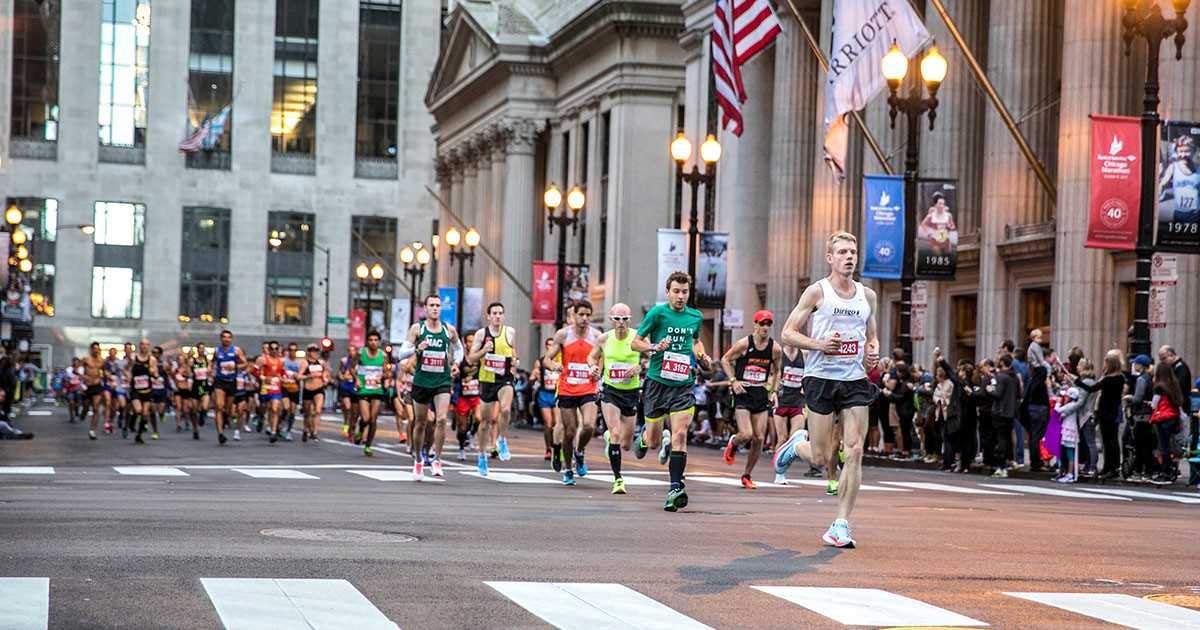
Ritzenhein said he still plans on being in Chicago on October 13 supporting fellow pro Parker Stinson, whom Ritzenhein has been coaching since last fall.
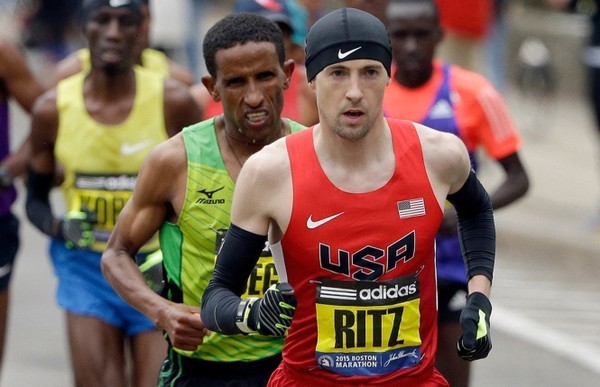
After making three consecutive Olympic teams in 2004, 2008, and 2012, injuries have consistently derailed the 36-year-old Ritzenhein in recent years. He was forced to drop out of the 2016 Olympic Trials and 2016 New York City Marathon and withdrew from the 2018 Boston Marathon just days before the race with a sacroiliac joint injury.
He has finished just one marathon in the last four years, placing 19th in Boston in April in 2:16:19 after attempting an abbreviated eight-week buildup in order to stay healthy.
While Ritzenhein officially broke the news of his withdrawal on social media on Monday, a poster on the LetsRun messageboard — who claimed to be the same person who correctly predicted that both Amy Cragg and Jordan Hasay would withdraw from Chicago last year — started a thread on Sunday predicting that Ritzenhein would withdraw from the race.
Login to leave a comment
Bank of America Chicago
Running the Bank of America Chicago Marathon is the pinnacle of achievement for elite athletes and everyday runners alike. On race day, runners from all 50 states and more than 100 countries will set out to accomplish a personal dream by reaching the finish line in Grant Park. The Bank of America Chicago Marathon is known for its flat and...
more...Kenyan Julius Kogo won the men’s 10-mile Crim race for the eighth time in his career on Saturday
Julius Kogo wins 8th Crim race under sunny skies in downtown Flint.
Kogo finished the race with a time of 46:52, according to race results.
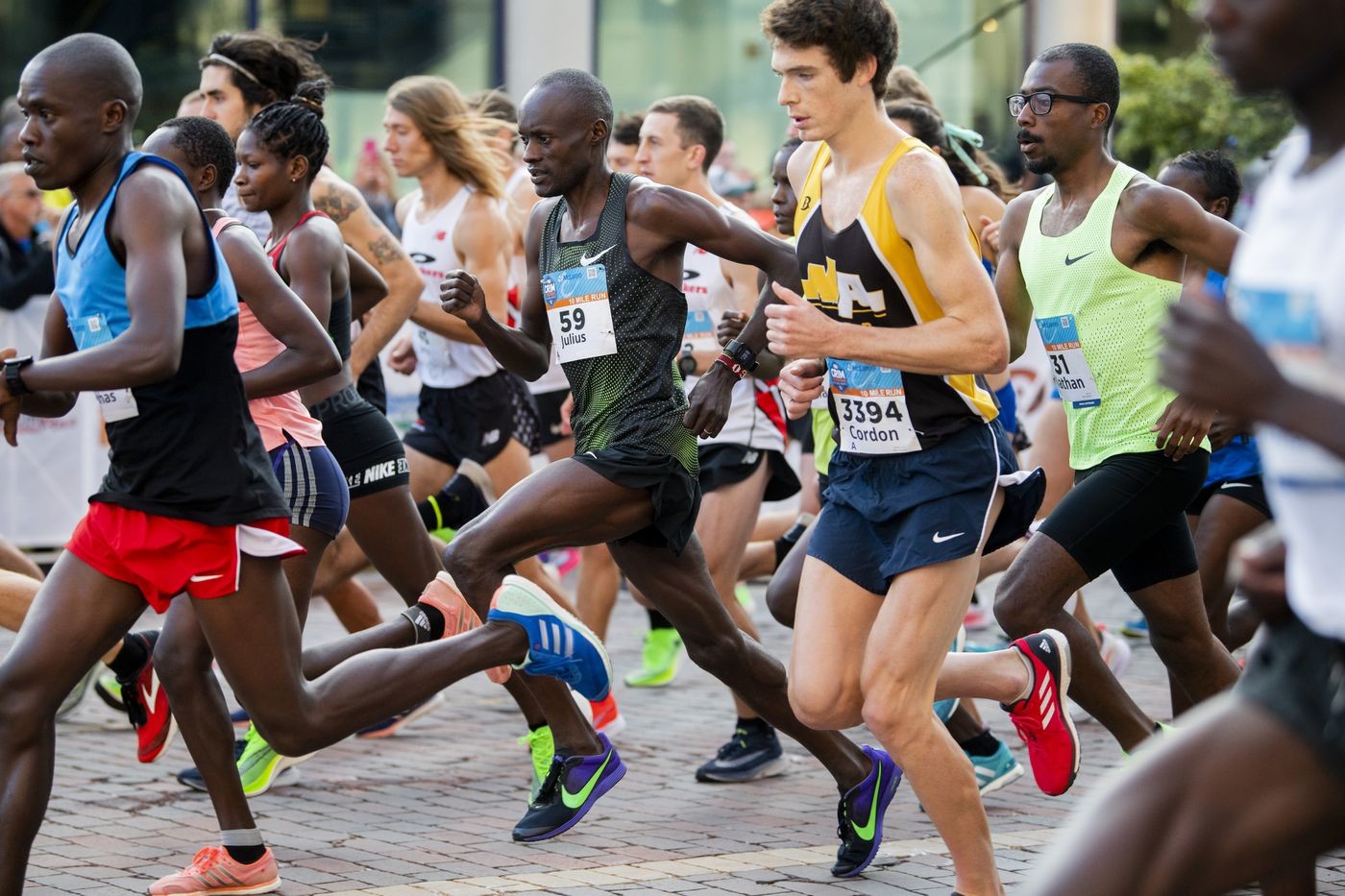
“I know the course, and though (late in the race) my body was not good, I felt my strength and prayed to God, and just did my best,” Kogo said moments after crossing the finish line. “God willing as I stay healthy, next year I’ll be back.”
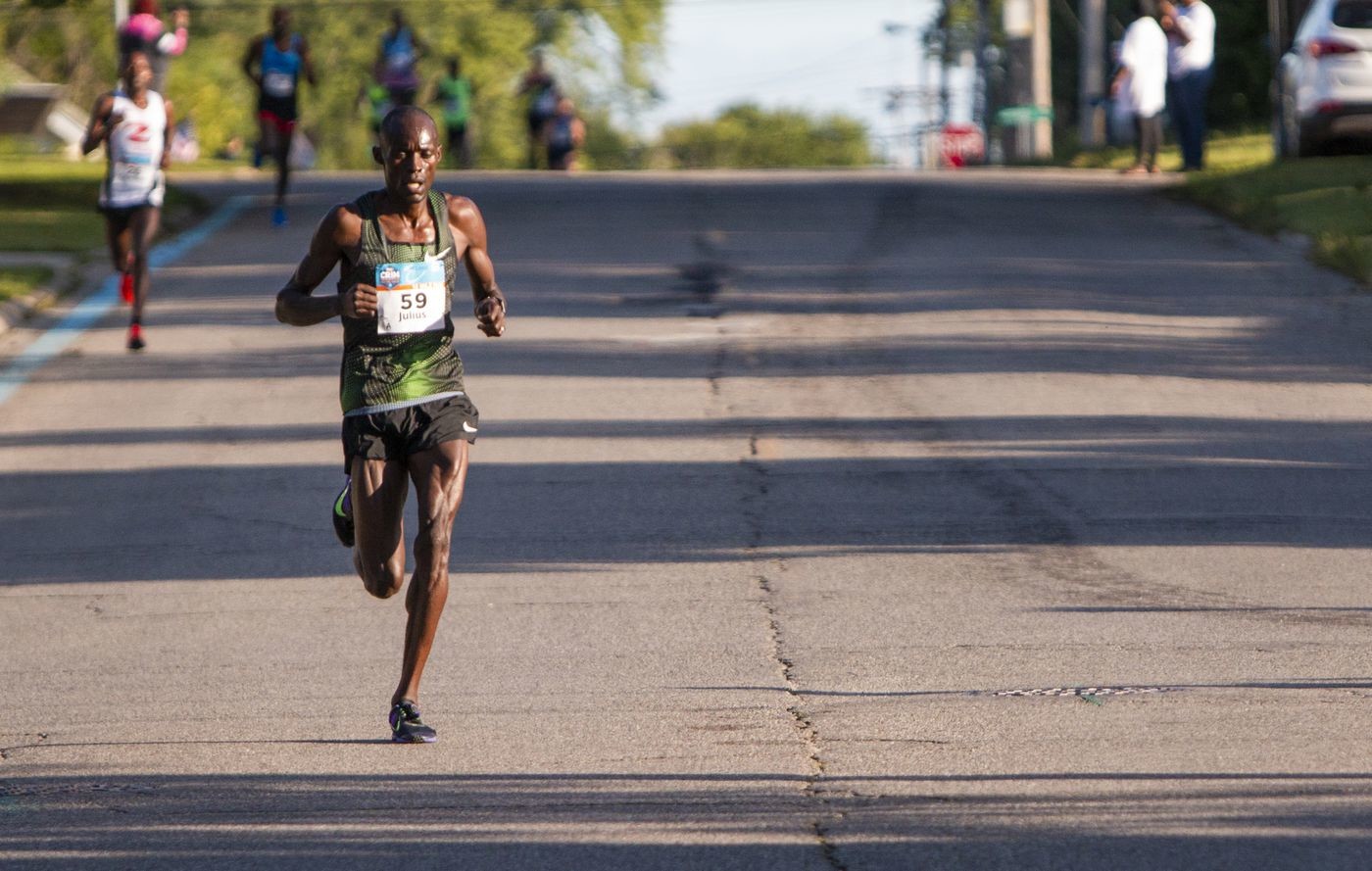
Rounding out the top five were second place Nathan Martin, 46:56; third place Dominic Korir, 47:04; fourth place Dathan Ritzenhein, 47:19 and fifth place Andrew Bumbalough, 47:41.
An estimated 12,000 to 13,000 racers participated in the event, according to Race Director Andy Younger.
by Jake May
Login to leave a comment
Crim 10-Miler
In August of 1977, Michigan House Speaker Bobby Crim and his assistant Lois Craig launched the first Bobby Crim 10 Mile Road Race. Little did they know that they were embarking on a journey that would change the City of Flint forever! In the 40 plus years since those first days as a race organization, the Crim Fitness Foundation has...
more...Boston marathon champion Lawrence Cherono has confirmed he will compete in Chicago Marathon against Britain's Mo Farah
Speaking from his training base in Kaptagat, Kenya Lawrence Cherono says he is focused on making two wins in a year in major U.S. marathons. He bagged the Boston title in April against a spirited challenge from compatriots and Ethiopians rivals.
Now, the 31-year-old, has raised his ante in training as he seeks to be in peak condition before stepping out on the flat Chicago course.
"I feel strong and ready for the challenge in Chicago. The determination and drive to excel in major marathon races is there and of course it will help a lot in my dream to make the Kenya team to the Tokyo Olympics in 2020 should I win in Chicago," said Cherono on Wednesday.
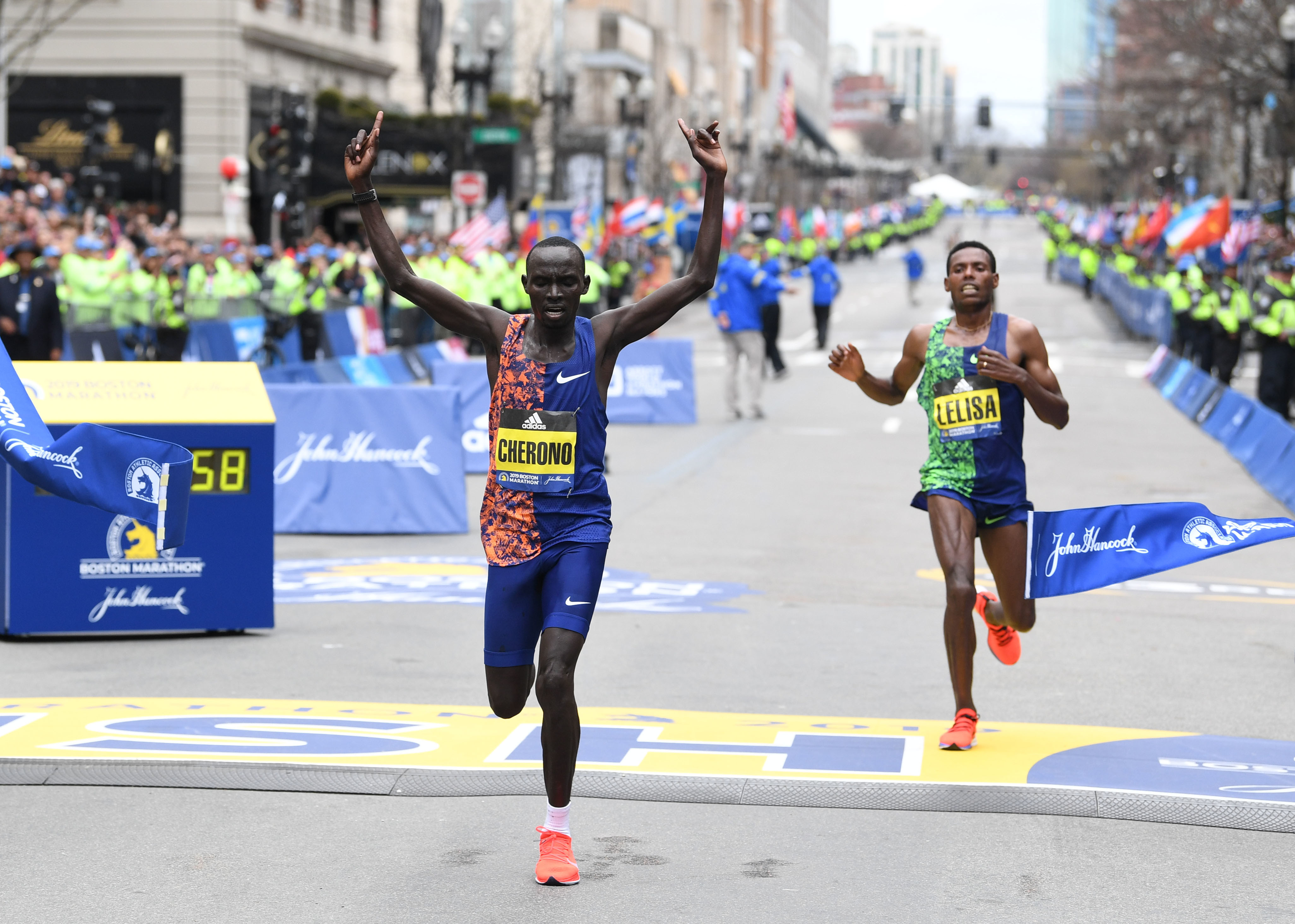
Making the Kenya team in marathon is not for the faint hearted and Cherono is choreographing his path to the games by picking up wins in major city marathons and road races.
His last outing this year was in Colombia last month where he finished second at a half marathon race in Bogota clocking an impressive 64.09 minutes.
This was barely two months after he had also ended up second at the Rock 'n' Roll Half Marathon in San Diego California clocking 60:46 minutes. "I always put my best in training because when you go out of Kenya to trace, it is like going to war. Everyone targets to beat you and I want to be at my best when I head to Chicago because it will not be an easy walk through the park," he added.
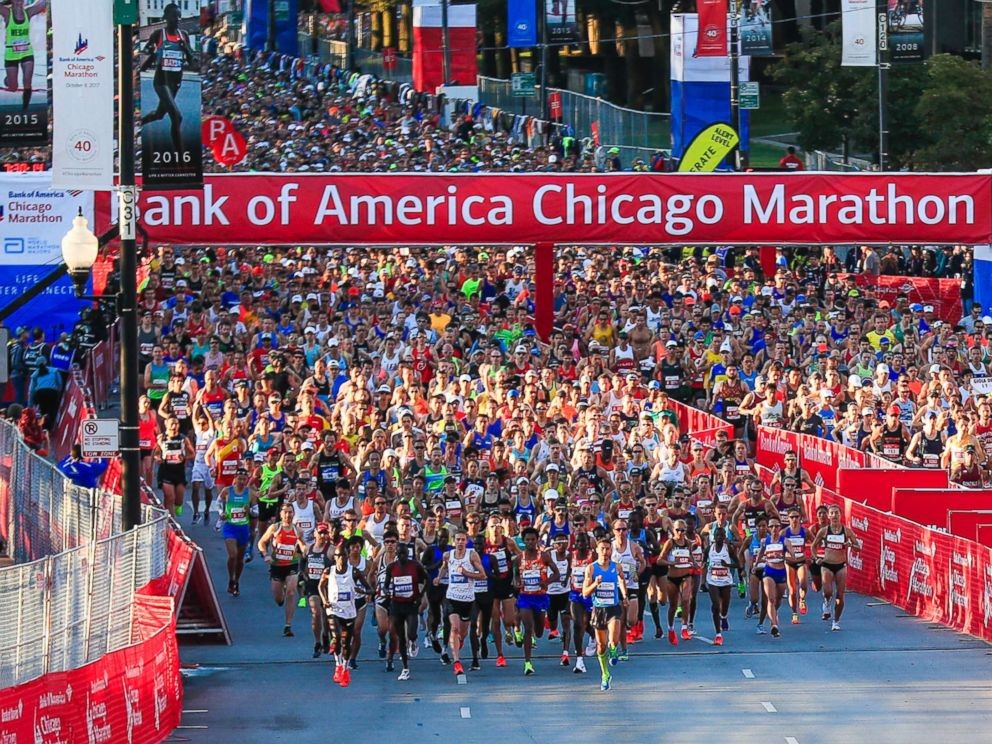
Indeed, in Chicago, Cherono will face one of his biggest challengers when he comes up against Olympic champion Mo Farah. The Briton won the race in 2018 and confirmed that he is focused in defending his Chicago Marathon title on Oct. 13.
Though he has not ruled out the prospects of running at the World championships in the 10,000m race that will be on Oct. 6 in Doha, Qatar. "I am a reigning world champion, so I do get an automatic spot anyway," Farah said of the 10,000m, where he is a three-time reigning world champion.
Farah also said on Tuesday that he can wait until "the last minute" to change his mind and also enter the Doha 10,000m by the deadline which is on Sept. 16. In April, Farah finished what he called a disappointing fifth in the London Marathon in 2:05:39, three minutes behind winner and world record holder Eliud Kipchoge.
Farah said a satisfying result in Chicago would be a win above worrying about a specific time. The last man to repeat as Chicago champ was Kenyan Sammy Wanjiru in 2010. Now Mo faces the challenge from Cherono and America's Galen Rupp and Dathan Ritzenhein.
Login to leave a comment
Bank of America Chicago
Running the Bank of America Chicago Marathon is the pinnacle of achievement for elite athletes and everyday runners alike. On race day, runners from all 50 states and more than 100 countries will set out to accomplish a personal dream by reaching the finish line in Grant Park. The Bank of America Chicago Marathon is known for its flat and...
more...Dathan Ritzenhein won the 2019 Humana Rock 'n' Roll Chicago Half Marathon
Nearly 13,000 registered runners from age 12 to 81 took to the streets of the Windy City this weekend to participate in the 11th running of the Humana Rock ‘n’ Roll Chicago Half Marathon.
With a renewed focus on the core pillars of great music in a community environment, runners of all athletic levels enjoyed the sights and sounds of Chicago.
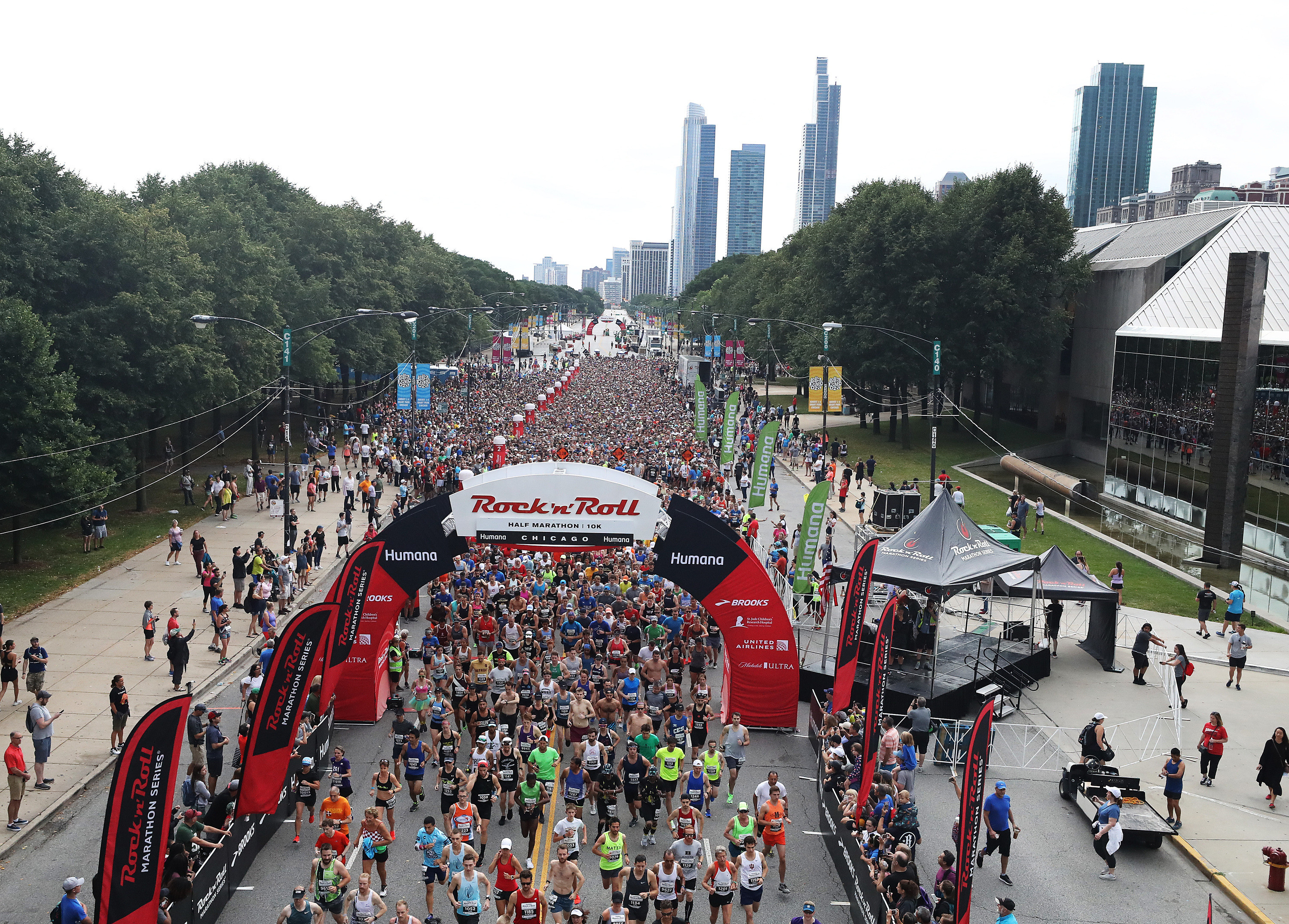
The best-in-class running event kicked off on Sunday morning. The half marathon and 10K hosted runners from all 50 states and 38 countries taking off on a tour of Chicago. Both courses started in Grant Park taking runners on a scenic tour of downtown Chicago with epic views of the Chicago skyline, Lake Michigan, Chicago River and more.
In the half marathon, Dathan Ritzenhein (Grand Rapids, Michigan) won the race with his first-place effort clocking a time of 1:04:27.
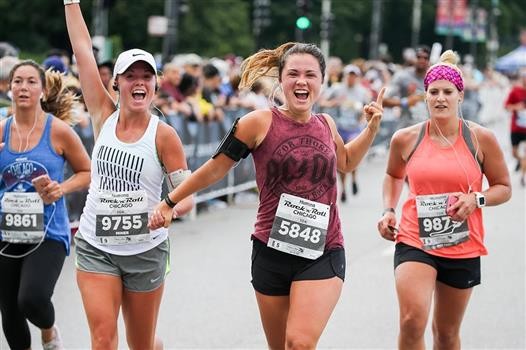
Colin Mickow (Naperville, Illinois) was second with a time of 1:05:22. Noah Corbett (Columbus, Ohio) followed in third place finishing in 1:11:03.
Kaylee Flanagan (Louisville, Illinois) was the women’s champion with a final time of 1:18:14 with Elizabeth Northern (Fort Worth, Texas) with a time of 1:21:44 and Kelley Gallagher (Buffalo Grove, Illinois) rounded out the podium in 1:24:02. In the 10K, Ryan Duffy (Chicago, Illinois) won the race with his first-place effort time of 37:11, Lucas Creek (Mapleton, Illinois) finished second at 37:19 and Scott Kandelman (Chicago, Illinois) finished third at 38:05.
Margarita Masias Guineo (Temuco, Chile) finished first for the females at 39:20, Marissa Lovell (Milwaukee, Wisconsin) at 42:25 and Allison Lampert (Indianapolis, Indiana) finished with a time of 42:33. Due to the continued excessive heat warnings which had been issued in the Chicago area over the past week and athlete safety being paramount, race officials made the decision to cancel Saturday’s 5K race which was a part of the Humana Rock ‘n’ Roll Chicago Half Marathon event weekend.
Login to leave a comment
Rock 'n' Roll Chicago Half Marathon
Humana Rock ‘n’ Roll Chicago Half Marathon returns for its 12th year in 2020. Prepare for a weekend of running fun starting with a health and fitness expo on Friday and Saturday, with experts, tips and gear. On Saturday, run a 5K – the perfect shake out before Sunday’s half marathon and 10K. Plan to run both days and earn...
more...Strong field of American runners will join previously announced superstars Galen Rupp and Jordan Hasay at the Chicago Marathon on October 13
“This year’s elite field highlights an exciting resurgence we are seeing in American distance running right now,” said Bank of America Chicago Marathon Executive Race Director Carey Pinkowski. “We have a deep pool of American runners who are coming to Chicago to run fast, and we cannot wait to welcome them in the fall. We could see new American records and a lot of personal bests in October.”
With a PR of 2:20:57, Jordan Hasay leads this year’s women’s field as the second-fastest American woman in history and the fastest to ever run the Bank of America Chicago Marathon. Hasay hopes to put Deena Kastor’s long-standing American record, 2:19:36, in jeopardy.
But Hasay’s primary competitor won’t be the clock alone – Amy Cragg, Emma Bates, Stephanie Bruce, Lindsay Flanagan and Taylor Ward represent a strong contingent of U.S. women all vying for podium finishes. The last time three American women finished in the top five in Chicago was 1994, and the last time U.S. women claimed the top two spots was 1992. Chicago’s history could be rewritten this fall.
Cragg, a member of Nike’s Bowerman Track Club since 2015 and the winner of the 2016 U.S. Olympic Marathon trials, enters this year’s field as the fifth-fastest American woman in history with a personal best of 2:21:42. Cragg stunned the world at the 2017 IAAF World Championships Marathon when she ended a 34-year medal drought by taking home the bronze. While she hasn’t raced much in 2019, she won the one-time Road to Gold eight-mile road race in Atlanta in March.
Galen Rupp, a two-time Olympic medalist in the marathon (bronze) and 10,000m (silver) and the current holder of four American records, stands out in the men’s field as the 2017 Bank of America Chicago Marathon champion and as one of the fastest runners in U.S. history with a PR of 2:06:07. While it will be difficult to match the foot speed of someone like Rupp, several American men have the potential to run significant personal bests and place inside of the top ten.
Brogan Austin, Chris Derrick, Scott Smith, Diego Estrada, Dathan Ritzenhein, Noah Droddy and Brendan Gregg are among some of the top Americans in this year’s field. Austin closed out 2018 with a career-boosting win, a national title and a huge personal best, 2:12:38, at the California International Marathon. Prior to that breakthrough performance, he broke the course record at the Indiana Monumental Half Marathon, clocking 1:02:39. He built on his 2018 momentum by winning the Road to Gold eight-mile road race in March.
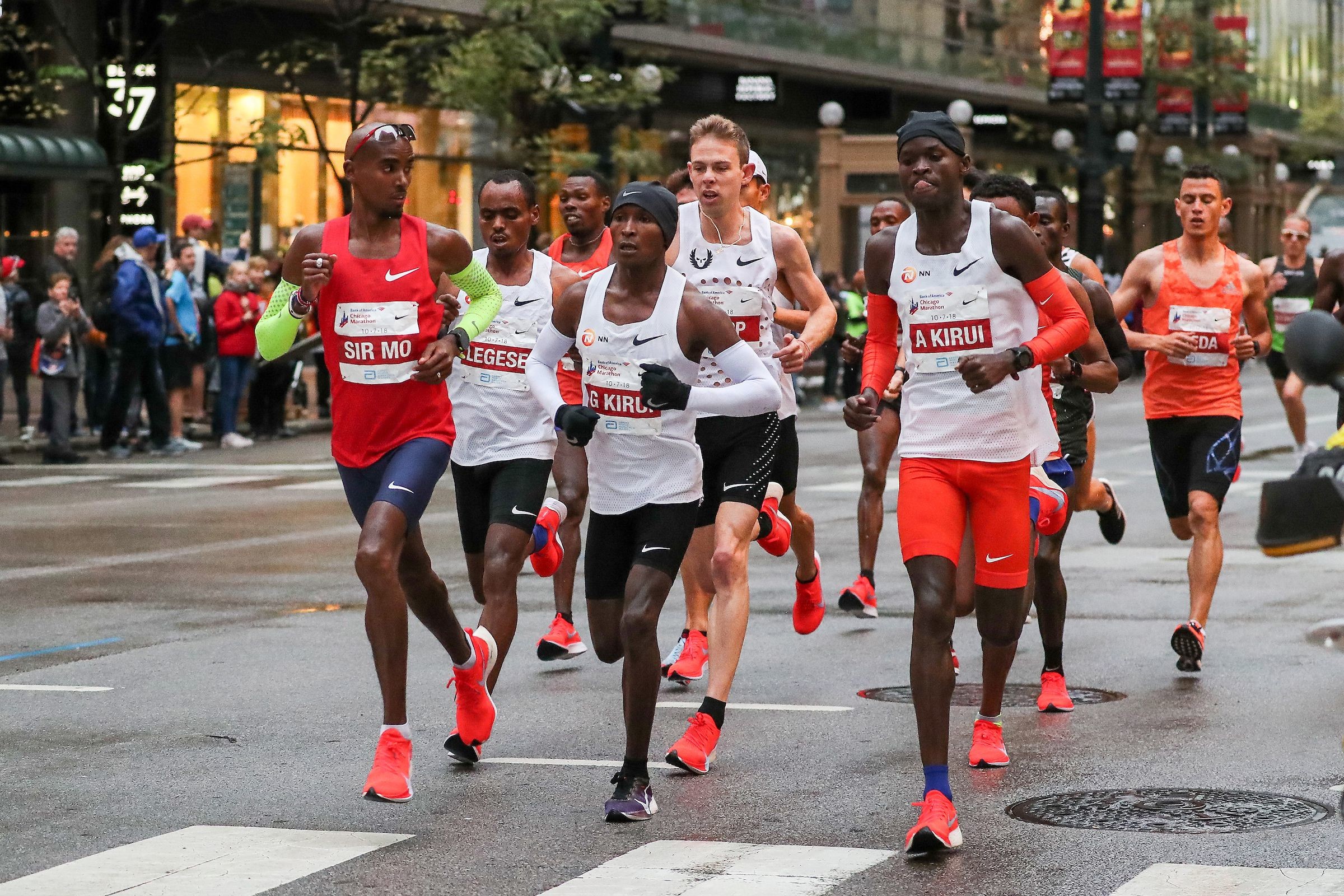
The Chicago Marathon will be Austin’s third go at the marathon. Derrick, a native of Naperville, Illinois and the 2013-2015 U.S. Cross Country champion, made his highly anticipated marathon debut in Chicago in 2017, running 2:12:50 to finish ninth. He followed up his debut performance with a ninth-place finish in 2:13:08 at the 2018 New York City Marathon.
Derrick, one of the elite pacers for Nike’s Breaking2 project in 2017, is one of the most versatile runners in the field with PRs of 13:08 in the 5,000m, 27:31 in the 10,000m, and 1:01:12 in the half marathon.
Smith, a 4:01-miler, experienced a huge breakthrough in the marathon in 2017 when he posted a 2:12:21 in Frankfurt, and then he hung on to finish sixth overall at the 2018 Boston Marathon (the now infamous year where runners endured whipping winds and freezing rain). He trains with Northern Arizona Elite, and he has represented the U.S. internally in both the half marathon and marathon at the IAAF World Championships. Smith’s strongest performance came in May when he finished second at the USATF 25K national championships.
Estrada has been a favorite among Chicagoans, ever since his 2016 breakout performance in Chicago and his second-place finish at the 2017 Bank of America Shamrock Shuffle. After slipping on a bottle at the 10K mark during his Chicago debut and badly twisting his ankle, Estrada rallied to finish eighth overall (first American) in his still-standing personal best, 2:13:56. He finished 16th in 2017 and he did not race a marathon in 2018. Estrada hasn’t raced much on the roads in 2019, but his half marathon speed (1:00:51) and 2:13 PR indicate that he has the talent to be a top marathon runner heading into 2020.
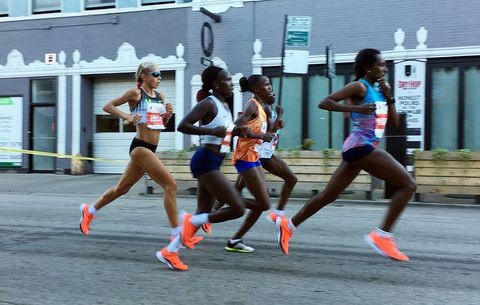
Ritzenhein (“Ritz”), a three-time Olympian and the fifth-fastest American in history, enters Chicago with one of the most impressive resumes. He has broken 13 minutes in the 5,000m, run 27:22 in the 10,000m, collected four national titles, and earned a bronze medal at the 2009 IAAF World Championships Half Marathon. He set his marathon PR seven years ago in Chicago, 2:07:47. At 36 and now racing with the Hansons-Brooks Distance Project, Ritzenhein is a veteran, but his 1:01:24 half marathon earlier this year still makes him a top contender.
Droddy and Gregg both bring massive potential to this year’s field. Droddy, always a crowd favorite, ran his personal best, 2:16:26, in Chicago in 2017, but his half marathon best, 1:01:48, suggests that there is room to demolish his PR this fall. Gregg made his debut in Chicago in 2014 in 2:18:30, and he experienced his best performance in 2018 at the California International Marathon, running 2:13:27.
This year’s field also includes 25K American record-holder, Parker Stinson, and exciting debuts from Reed Fischer and Justin Gallegos. In 2018, Gallegos became the first professional athlete with cerebral palsy to sign a contract with Nike.
Login to leave a comment
Bank of America Chicago
Running the Bank of America Chicago Marathon is the pinnacle of achievement for elite athletes and everyday runners alike. On race day, runners from all 50 states and more than 100 countries will set out to accomplish a personal dream by reaching the finish line in Grant Park. The Bank of America Chicago Marathon is known for its flat and...
more...Justin Gallegos, a runner with cerebral palsy, is set to run the 2019 Chicago Marathon
Gallegos, a runner with cerebral palsy, plans to run the 2019 Chicago Marathon, race organizers announced on Thursday.
The Oregon senior completed his first half marathon in May 2018 and finished the 13.1-mile course in two hours and threes minutes. Gallegos became the first professional athlete with cerebral palsy to sign a contract with Nike in October 2018 and with his reaction went viral in a film captured by a film crew.
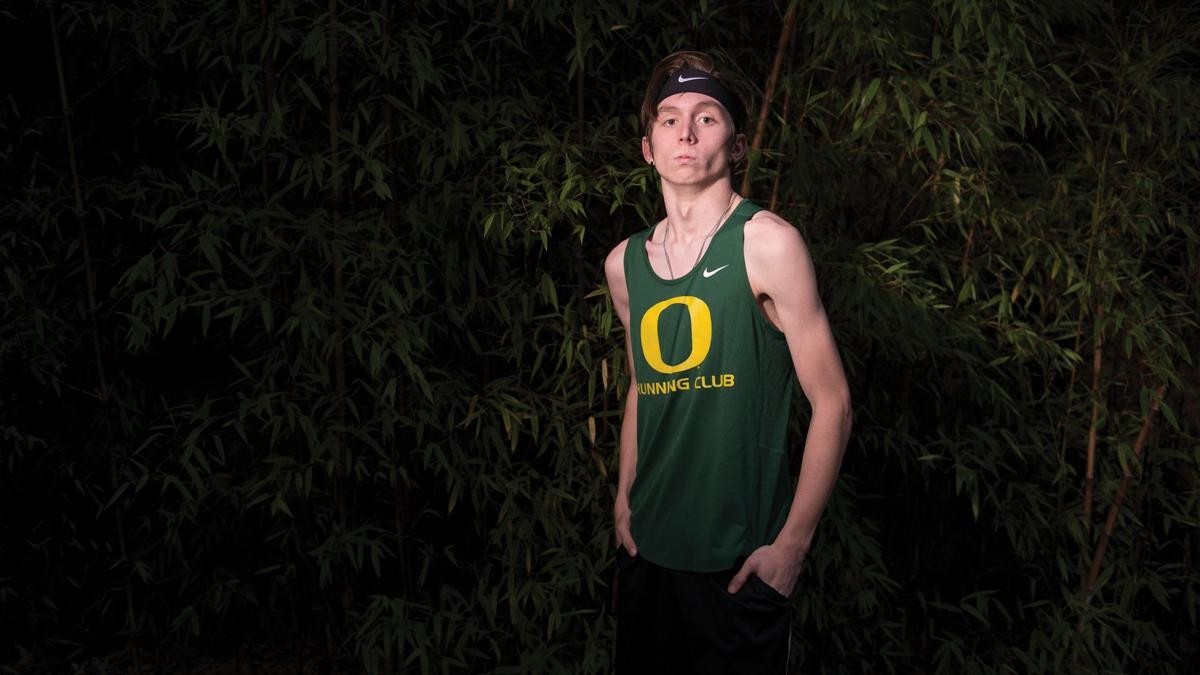
Before signing with Nike, Gallegos played a major role in the company's testing and promotion of the Fly Ease running shoe that features a zipper on the heel to assist someone with putting the shoe on.
“I’ve always wanted to work myself up to a full marathon and beyond,” Gallegos said in May 2018.
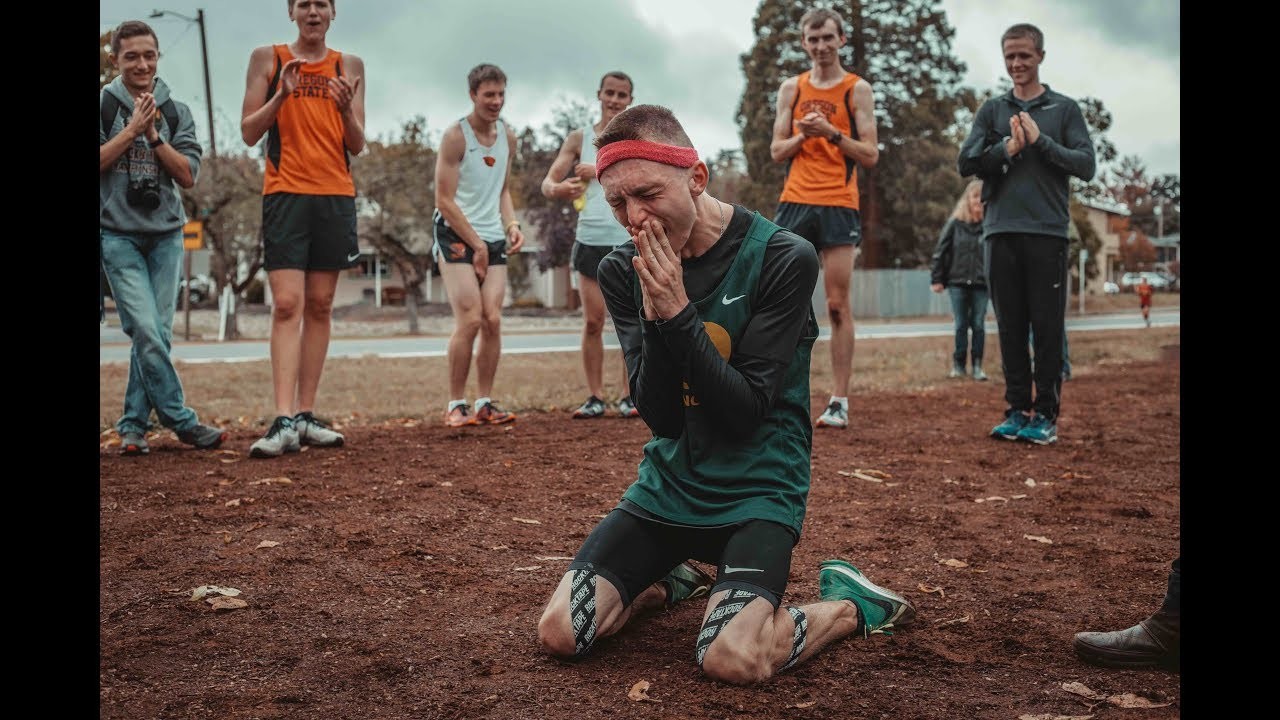
Gallegos will have his chance to complete a marathon this October in Chicago.
This year's Chicago Marathon professional men's field includes Olympic bronze medalist and 2017 Chicago Marathon champion Galen Rupp and two-time Olympian Dathan Ritzenhein.
by Michael Shapiro
Login to leave a comment
Bank of America Chicago
Running the Bank of America Chicago Marathon is the pinnacle of achievement for elite athletes and everyday runners alike. On race day, runners from all 50 states and more than 100 countries will set out to accomplish a personal dream by reaching the finish line in Grant Park. The Bank of America Chicago Marathon is known for its flat and...
more...Record setting performances at the 42nd Annual River Bank 25K Run
Emma Bates crossed the finish line with a smile and arms outstretched, while Parker Stinson (photo) roared in with tears of joy.
Both had reason to celebrate with record-setting performances Saturday at the Amway River Bank Run 25K in Grand Rapids, Michigan.
Under cool race conditions that began and finished under temperatures in the low to mid 40s and clouds, the two smashed previous records with dominating performances in the 42nd edition of the race.
Bates, runner-up at last year's race, pulled away from Sara Hall and finished in one hour, 23 minutes and 50 seconds to break the 2012 record by 34 seconds, while Stinson, who was third in 2017, finished in 1:13.46 to better a twice-reached mark of 1:14.18 from 2013 and 2014.
Each won $10,000 for first and an additional $5,000 for the record. Bates added another $2,500 for crossing the finish line first in the race-within-a-race against the men.
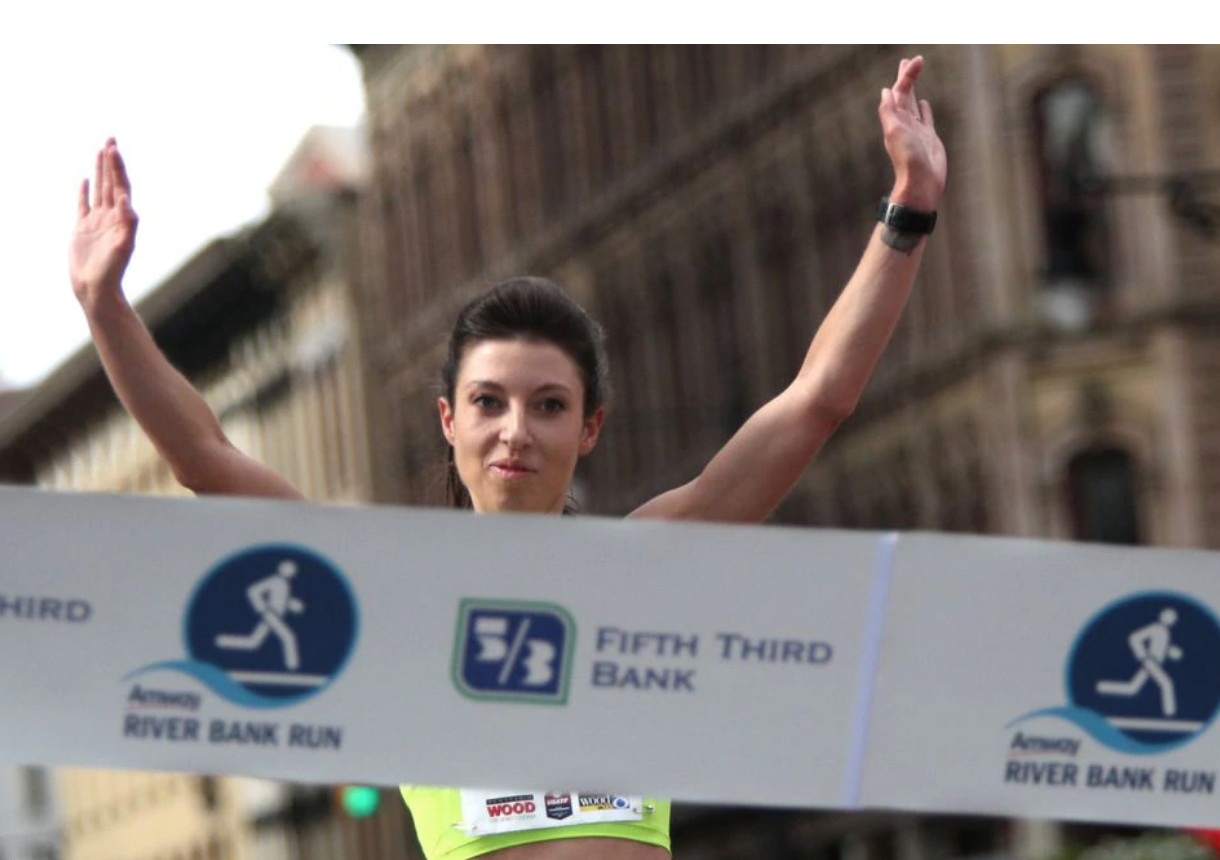
Stinson was emotional after the race. The 27-year-old from Boulder, Colorado, pulled away from the field within the first four miles, routinely doing 4:40 miles and was never threatened.
"I've run that way so many times and just been mocked and made fun of for running out front and believing in myself," he said. "So today, to break the record and running every single step by myself - I just killed a lot of demons today."
The knock on Stinson has been a tendency to get overly excited and burn too much energy, leaving little for the end.
"Even Mile 12, I came out of those hills running 4:20 pace and I dialed it back a bit," he said. "I told myself, 'Don't make this hard on yourself. You're in a good spot and stay in the zone.'"
Stinson also benefitted from training with Dathan Ritzenhein, a three-time Olympian who lives in Rockford and trains Stinson. Stinson has stayed with the Ritzenhein family the past 10 days.
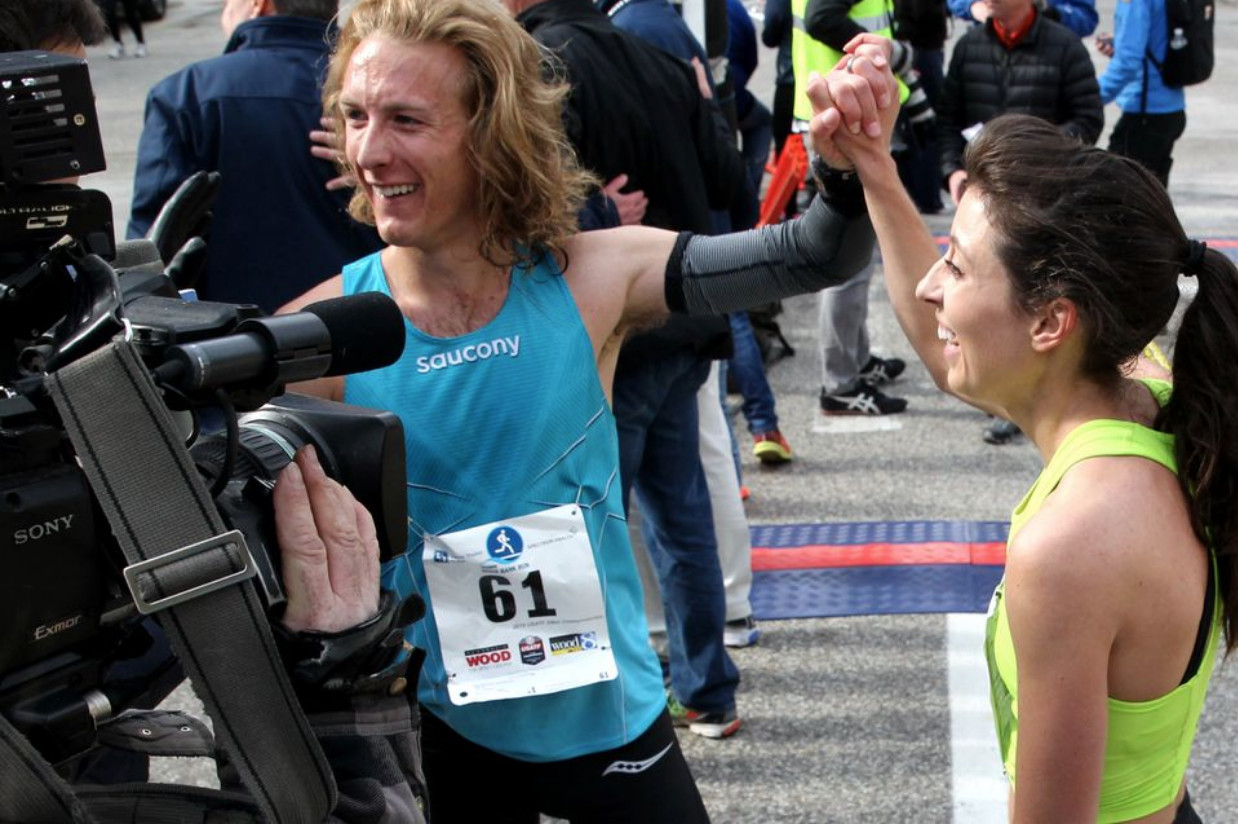
"I guess now I owe him some money for room and board now that I actually have some," Stinson said with a laugh.
For Ritzenhein, his first significant win as a coach was also nerve wrecking as Stinson jumped out fast.
"When he jumped out so fast early he was pushing the extreme of what we said," Ritzenhein said. "He stuck with it and knew where he was (in the field). I was a wreck, but he was great."
Stinson wiped the field. Second place went to Scott Smith in 1:15:05, more than 80 seconds behind, while Kiya Dandena was third (1:15.37).
Meanwhile, on the women's side, Bates was locked in a duel with Hall - just as the two did along with Stephanie Bruce last week at the USATF Half Marathon in Pittsburgh.
While Hall outlasted Bates to finish second a week ago behind Bruce, Bates pulled away this time at about the nine-mile mark to win by 1:42 ahead of Hall.
Molly Bookmyer was third (1:27:26).
Login to leave a comment
Amway River Bank Run
The Amway River Bank Run presented by Fifth Third Bank with Spectrum Health the Official Health Partner celebrates over 43 years. More than 16,000 people are expected to compete in the event which features the largest 25K road race in the country and offers the only 25K Wheelchair racing division in the world along with a 25K Handcycle division. The...
more...John Hancock 2019 Boston Marathon US Elite Open Team
Featured video: 2019 Boston Marathon John Hancock U.S. Elite Open Team for Monday April 15.
Abdi Abdirahman, a four-time Olympian, placed sixth at the 2017 Boston Marathon. He is a multiple national champion in the 10,000m, 10K, 10-mile and half marathon.
Shadrack Biwott finished third this year in Boston. Last year, he was second American and fourth overall. Biwott placed fifth at the 2016 TCS New York City Marathon in a personal best time of 2:12:01.
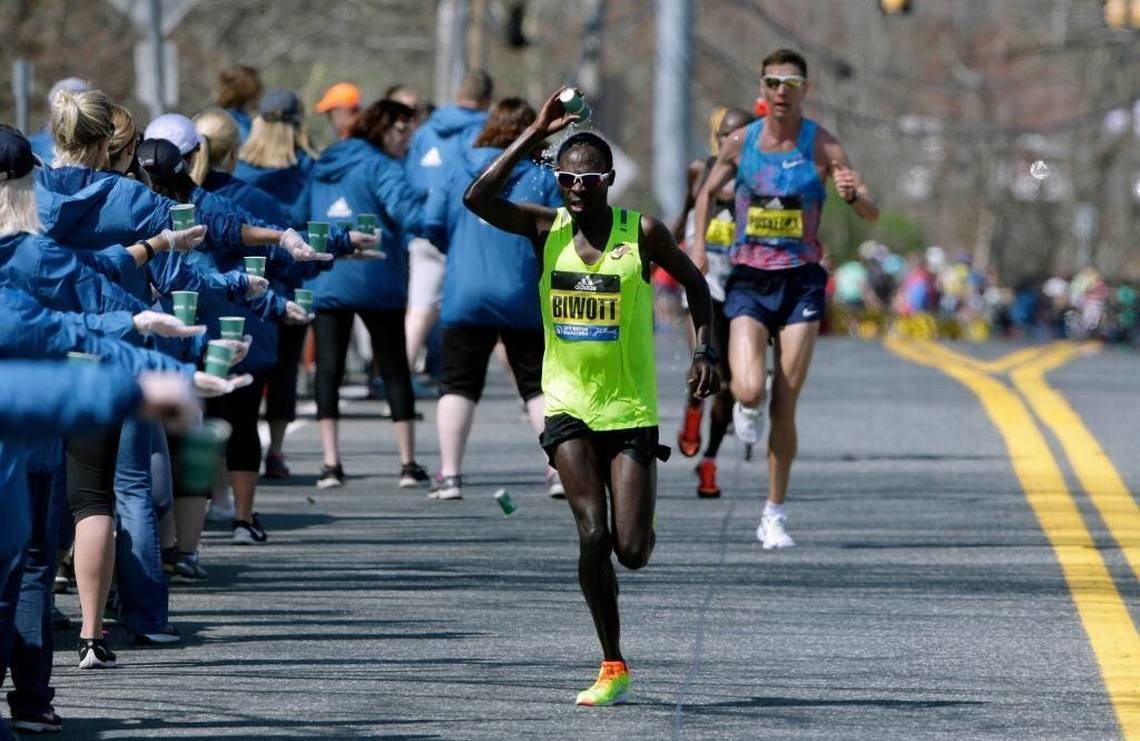
Aaron Braun, 13th at the 2018 Bank of America Chicago Marathon, is a versatile road runner. Braun is a national champion in the 12K and was top American at the 2015 Houston Marathon.
Sarah Crouch has finished top-ten three times at the Bank of America Chicago Marathon, including this year where she was top American and ninth overall. She is a past champion of the Tallahassee Marathon and finished 11th at the 2016 Boston Marathon.
Jeffrey Eggleston has raced on three IAAF World Championships Marathon teams, placing as high as 13th in 2018. He has won the Pittsburgh, Woodlands, Lima and San Diego Marathons and has been runner-up in Brisbane, Pittsburgh and at Twin Cities.
Scott Fauble was the second American and seventh overall at the 2018 TCS New York City Marathon. Fauble placed fourth in the 10,000m at the 2016 Olympic Trials and represented the United States at the 2017 IAAF World Cross Country Championships.
Lindsay Flanagan, the 2015 Pan American silver medalist in the marathon, finished 11th at the 2017 Boston Marathon and set her personal best of 2:29:25 at the Frankfurt Marathon this year.
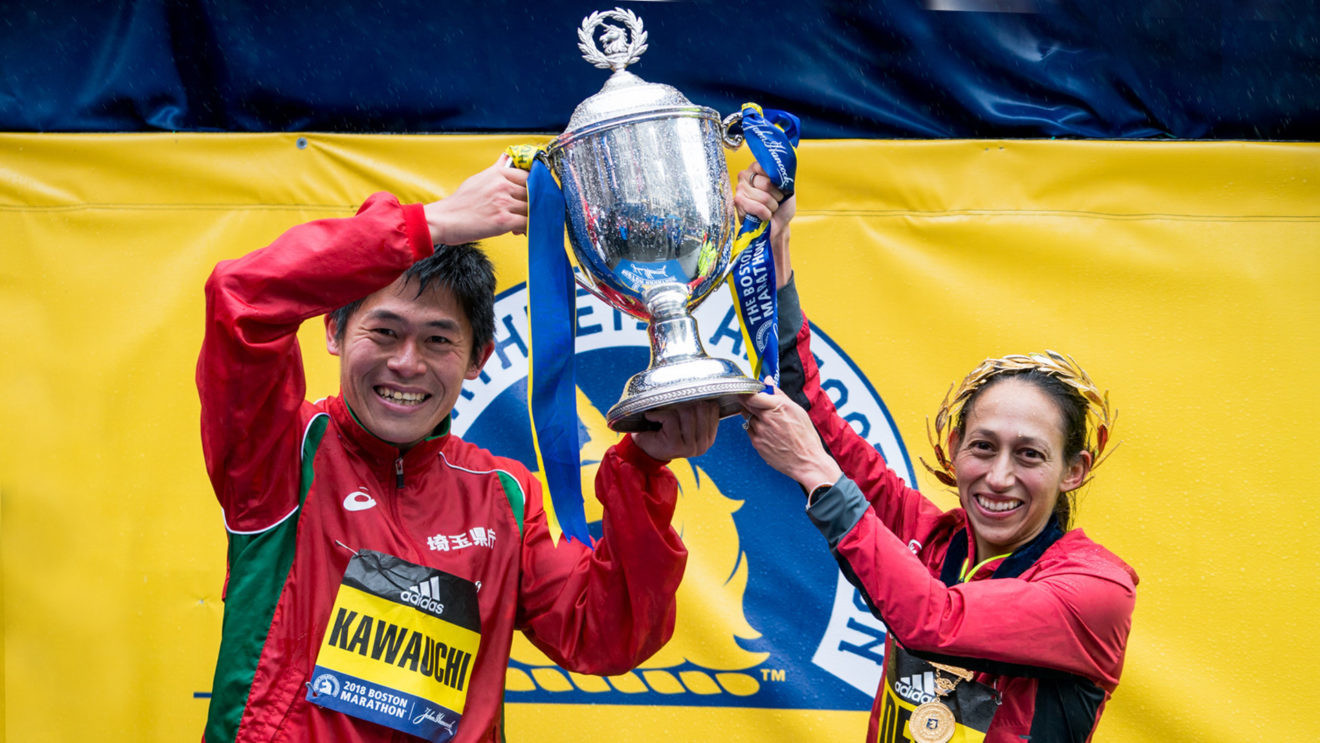
Sara Hall is the tenth fastest U.S. women’s marathoner of all time having set her 2:26:20 mark at the 2018 Ottawa Marathon. Hall has earned national titles in the marathon, 20K, 10-mile, mile and cross country. She is married to Ryan Hall, who is a John Hancock Elite Athlete Ambassador and holds the American course record of 2:04:58 at the Boston Marathon.
Jordan Hasay set an American debut record of 2:23:00 with her third-place finish in Boston in 2017. She then ran the second fastest marathon of all time by a U.S. woman at the 2018 Bank of America Chicago Marathon, where she placed third in 2:20:57. Hasay is an 18-time All American and a national champion at 15K and 20K.
Elkanah Kibet, a member of the U.S. Army World Class Athlete Program, has had two top-ten finishes at the Bank of America Chicago Marathon. At the 2017 IAAF World Championships Marathon, Kibet finished top American and 16th overall. He was 8th in Boston in 2018.
Desiree Linden, a two-time Olympian, returns to Boston as defending champion. A top-five finisher in eight Abbott World Marathon Majors, additional accomplishments include placing seventh at the 2016 Olympic Games Marathon, tenth at the 2009 IAAF World Championships Marathon, second at the 2012 and 2016 U.S. Olympic Marathon Trials and second in the 10,000m at the 2015 Pan American Games. In addition to her 2018 win in Boston, she placed second in 2011.
Timothy Ritchie, the 2017 U.S. National Marathon champion, ran for the U.S. at the 2016 IAAF World Half Marathon Championships where he placed 23th. Ritchie is the head men’s cross country coach at the University of Massachusetts, Amherst.
Dathan Ritzenhein is the fourth fastest U.S. marathoner of all time with a 2:07:47 personal best. Career highlights for the three-time Olympian include finishing ninth at the 2008 Olympic Marathon, winning the bronze medal at the 2009 IAAF World Half Marathon Championships and finishing 13th at the 2012 Olympic Games 10,000m.
Sarah Sellers ran through freezing rain and torrential wind this year to finish second behind Des Linden. In her 2017 marathon debut, Sellers won the Huntsville Marathon. In New York this year she finished 18th.
Brian Shrader is a versatile runner on the track and roads. He made his half marathon debut in Boston this year at the B.A.A. Half Marathon, running 1:05:26. He also made his marathon debut in 2018, running 2:13:31 at the USA Championships in Sacramento.
Becky Wade, a champion of the California International Marathon, finished 11th at the 2018 Virgin Money London Marathon and tenth at the 2017 Bank of America Chicago Marathon.
Jared Ward placed third at the 2016 U.S. Olympic Marathon Trials and followed with a sixth-place finish at the Olympic Marathon in Rio de Janeiro, less than a minute and a half out of medal contention. In 2017 Ward was tenth at the Boston Marathon and this year, he finished top American and sixth overall at the TCS New York City Marathon.
Login to leave a comment
Boston Marathon
Among the nation’s oldest athletic clubs, the B.A.A. was established in 1887, and, in 1896, more than half of the U.S. Olympic Team at the first modern games was composed of B.A.A. club members. The Olympic Games provided the inspiration for the first Boston Marathon, which culminated the B.A.A. Games on April 19, 1897. John J. McDermott emerged from a...
more...Dathan Ritzenhein rans 1:01:24 half marathon in New Orleans as he gets ready to run Boston in April
Dathan Ritzenhein topped the field at the Humana Rock 'n' Roll New Orleans Half Marathon in a time of 1 hours, 1 minute and 24 seconds to edge out Emmanuel Bett.
“I surprised myself, actually,” he told The Advocate. “(Runner-up Bett Emmanuel) led nearly 13 miles, basically someone I could hang off about 5-10 seconds most of the time, and then the last mile I threw in a big kick.”
The rest of the top five were: Tyler McCandless (1:03:48), Kenneth Foster (1:08:50) and Tyler Alverson (1:11:51).
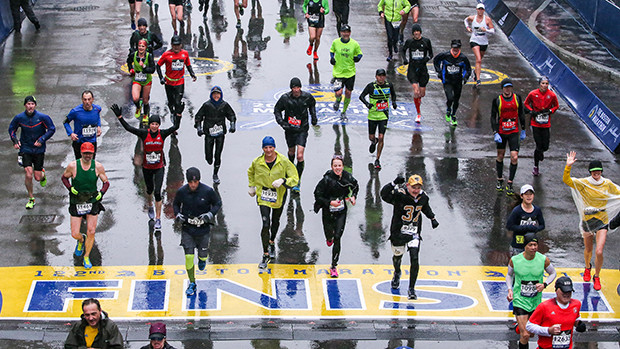
Ritzenhein, a three-time Olympian dogged by injuries most of 2018, last ran competitively in November when he was 12th at the USATF 5K championship in New York.
The 36-year-old Ritzenhein was forced to pull out of last year's Boston Marathon about a week before with inflammation in his right leg. In 2015, he finished seventh and was the top American finisher in his Boston Marathon debut.
Last year, Ritzenhein also warmed up for Boston by finishing second in March at the New York Half Marathon.
The 2019 Boston Marathon is April 15.
Login to leave a comment
Boston Marathon
Among the nation’s oldest athletic clubs, the B.A.A. was established in 1887, and, in 1896, more than half of the U.S. Olympic Team at the first modern games was composed of B.A.A. club members. The Olympic Games provided the inspiration for the first Boston Marathon, which culminated the B.A.A. Games on April 19, 1897. John J. McDermott emerged from a...
more...Texan Parker Stinson will run at Houston Half Marathon with a New Coach, Dathan Ritzenhein
Stinson and Ritzenhein have a relationship that stretches back a decade. They try not to worry about the fact that, should all go well, they’ll be racing each other for an Olympic berth next year.
Parker Stinson wants to make it clear: he wasn’t stalking Dathan Ritzenhein when they first met 10 years ago in Houston. Not exactly.
Stinson was a junior at Cedar Park High School outside of Austin, in town to catch a glimpse of the biggest pro running event in the state of Texas, the Houston Half Marathon. But more than anything, he was there to see Ritzenhein; multiple posters bearing his image hung in the Cedar Park locker room, including one from his bronze-medal performance in the junior race at the 2001 World Cross Country Championships (Ritz remains the last US junior, male or female, to medal in that race). Ritzenhein was 26 and fresh off his second Olympic appearance, where he finished 9th in the marathon in Beijing, and about to embark on a career year that would see him break Bob Kennedy‘s American record in the 5,000 meters and earn a bronze medal at the World Half Marathon Championships.
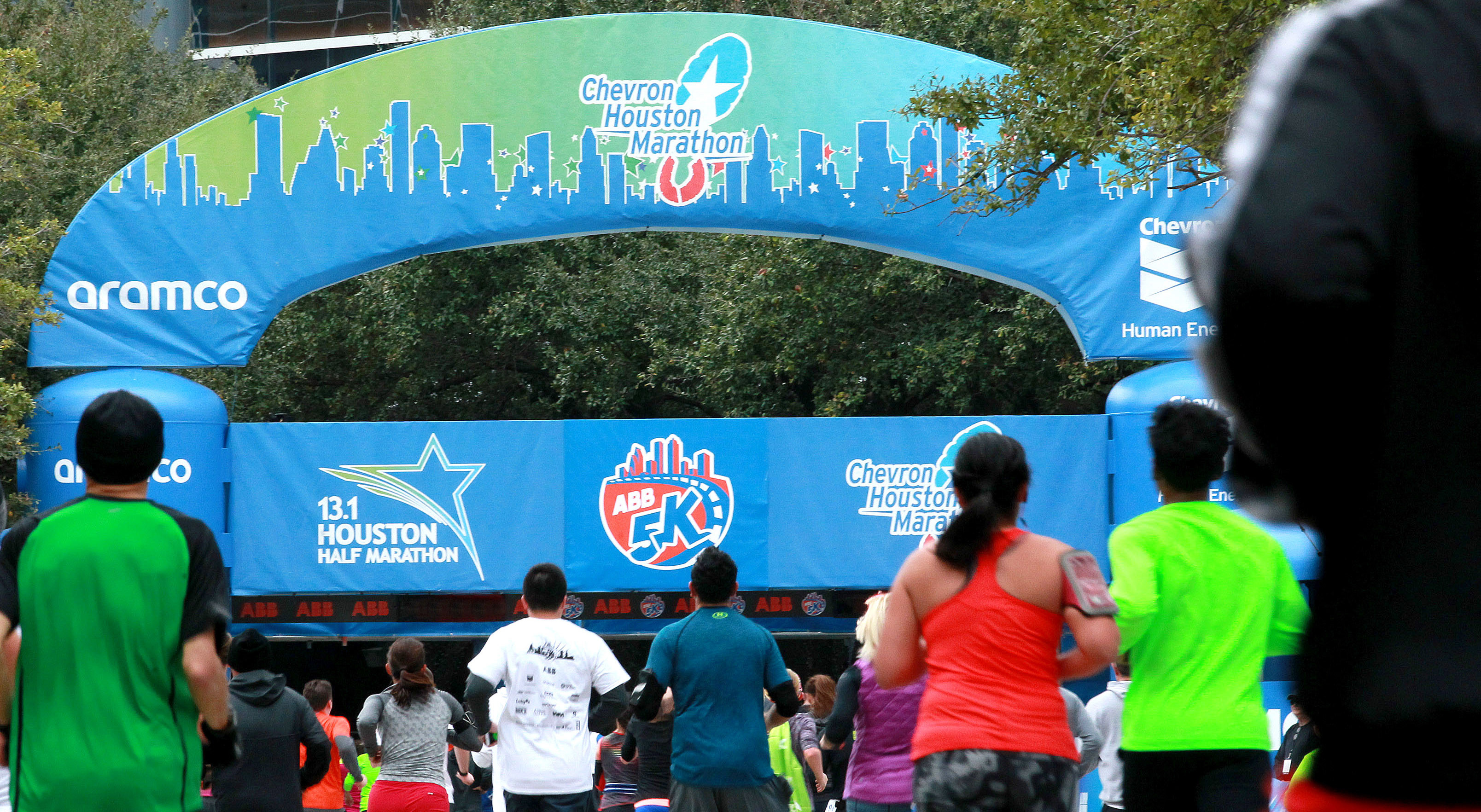
As Hudson and Ritzenhein were on their way to dinner, Sheard approached and introduced himself and Stinson. Stinson, a little starstruck at the time, doesn’t recall much about the interaction — “I just remember trying not to say anything weird” — but he knew one thing: Ritzenhein was now officially his favorite runner. That moment would mark the beginning of a crucial relationship in Stinson’s life, one that evolved from star-fanboy while he was in high school to mentor-mentee during his days at the University of Oregon, where Ritzenhein served as a volunteer coach in 2014.
Last fall, their relationship changed once again when Ritzenhein agreed to coach Stinson, who parted ways with his old coach, Hudson, after the Chicago Marathon. As fate would have it, Stinson’s first race under Ritzenhein comes Sunday at the Houston Half Marathon, a decade after their first meeting.
Login to leave a comment
USA 25K Open Championships has a strong field, $112,400 in prize money and fun for all
Login to leave a comment
Ben True is the first American to ever win the NY City Half Marathon
Ben True out sprints Dathan Ritzenhein to win the United Airlines New York City Half Marathon this morning. Running his first half marathon Ben posted a 1:02:39 beating 35-year-old Ritzenhein who finished three seconds back.
True said after the race that he questioned whether he could hang with Ritzenhein after the 35-year-old made his move. It wasn’t until the last mile of the race when True, 32, felt confident that he could prevail.
“When Dathan pulled away, probably around mile 10, I wasn’t quite sure I was going to be able to reel him back in,” True said.
“And even when I started reeling him back in, I didn’t know if I was then going to be able to get around him. It really wasn’t until the very end that I was like, ‘All right, I can get this.’”
The real challenge of the day was the weather, 29 degrees and headwinds up to 14mph. The women’s race was also a sprint to the finish. Ethiopian Buze Diriba (1:12:23) out kicking America’s Emily Sisson by just one second.
True's first place finish in the men's open division represents the first time an American man won the open division in the event's history.
Login to leave a comment
The best Half Marathon time in the last 12-months on US soil is 1:00:04. Can that change Sunday?
Login to leave a comment
Dathan Ritzenhein running NY Half ahead of Boston
Login to leave a comment
Ritzenhein, in preparation for his second appearance at the Boston Marathon
Login to leave a comment
Fast Times For American Men at Houston Half Marathon
Login to leave a comment
Strongest American Elite Field Ever for Boston
Login to leave a comment


